2025
senza fine
Solo show
Galerie Mark Müller
Galerie Mark Müller
September 5 – October 18, 2025
Zürich
Zürich
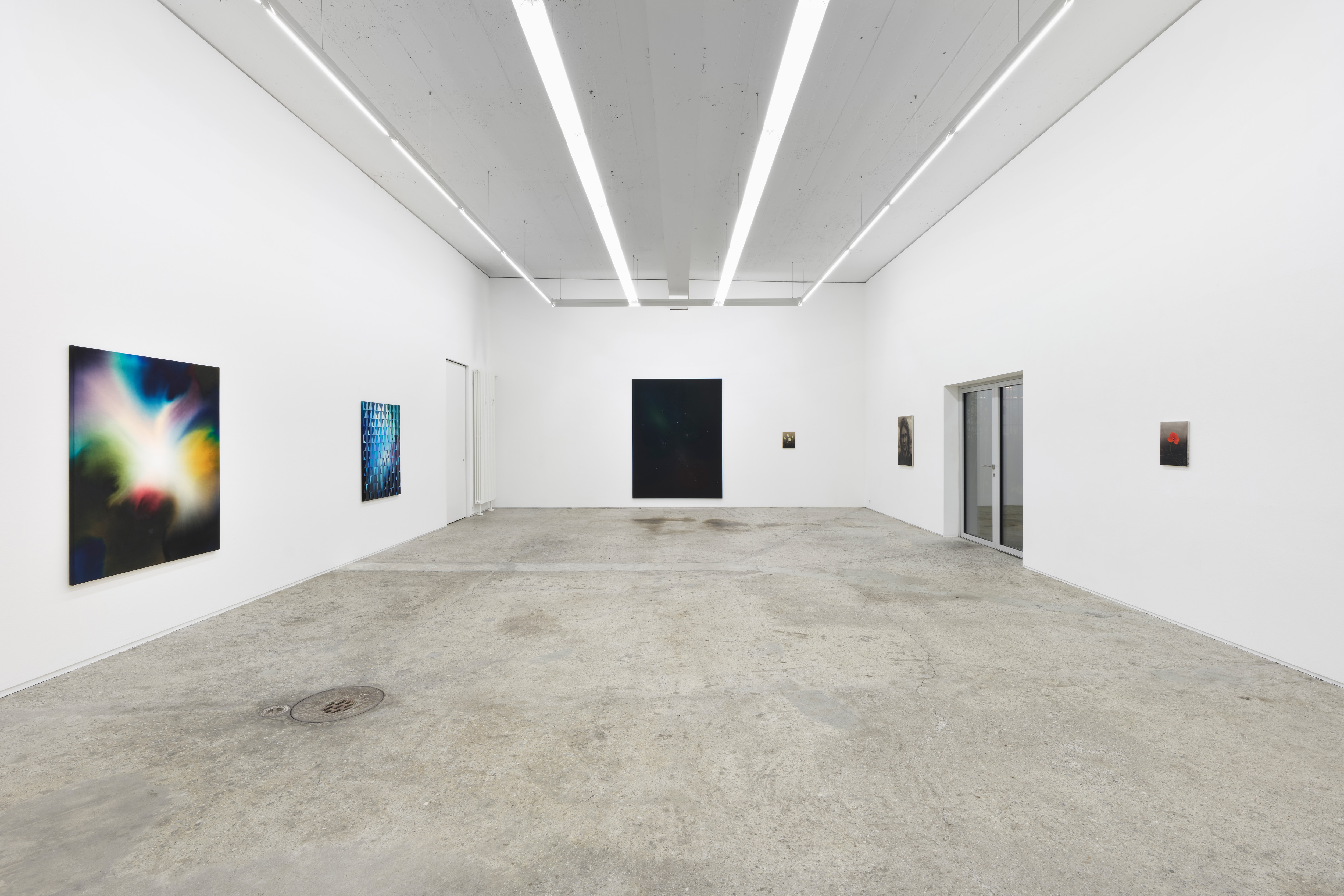
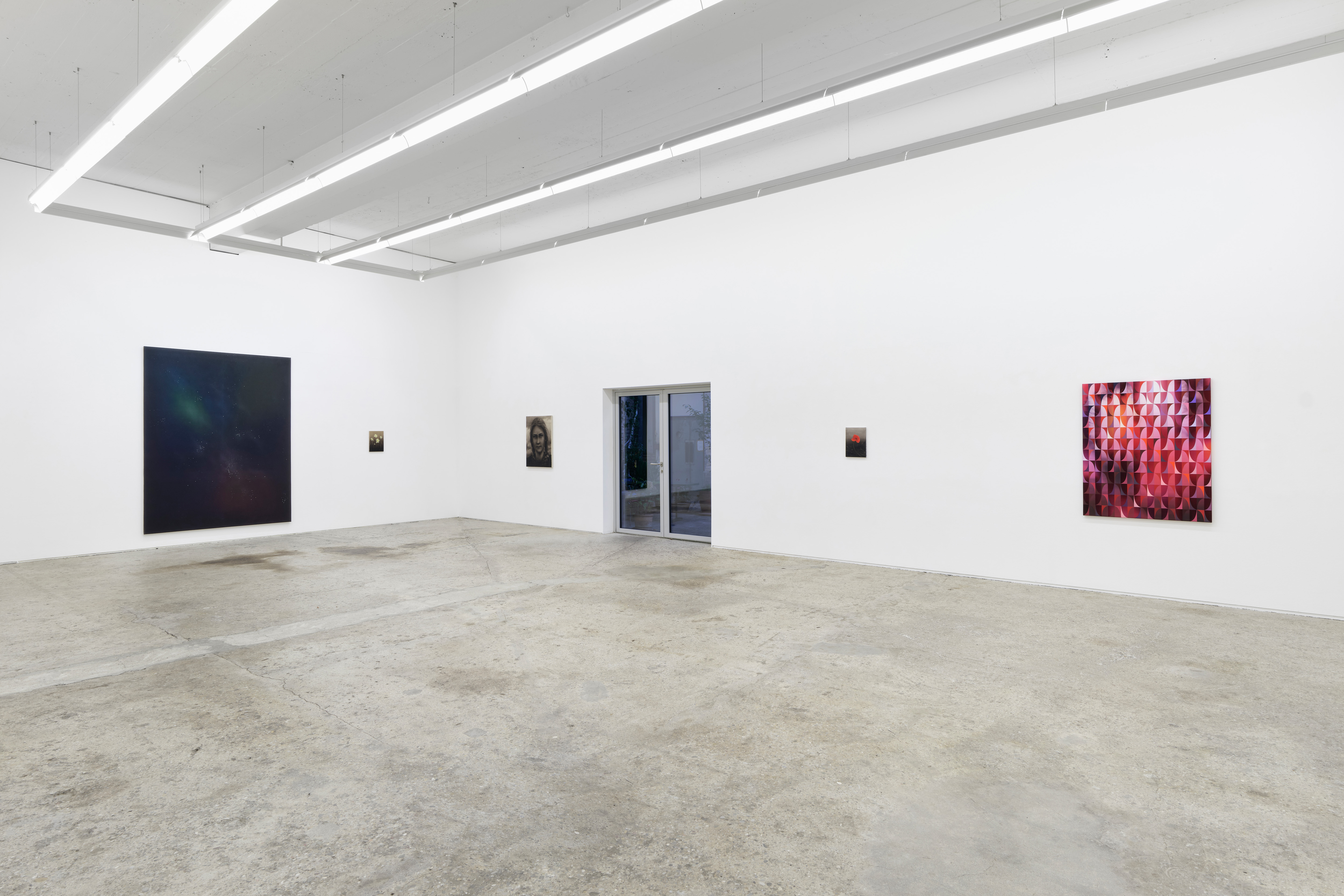
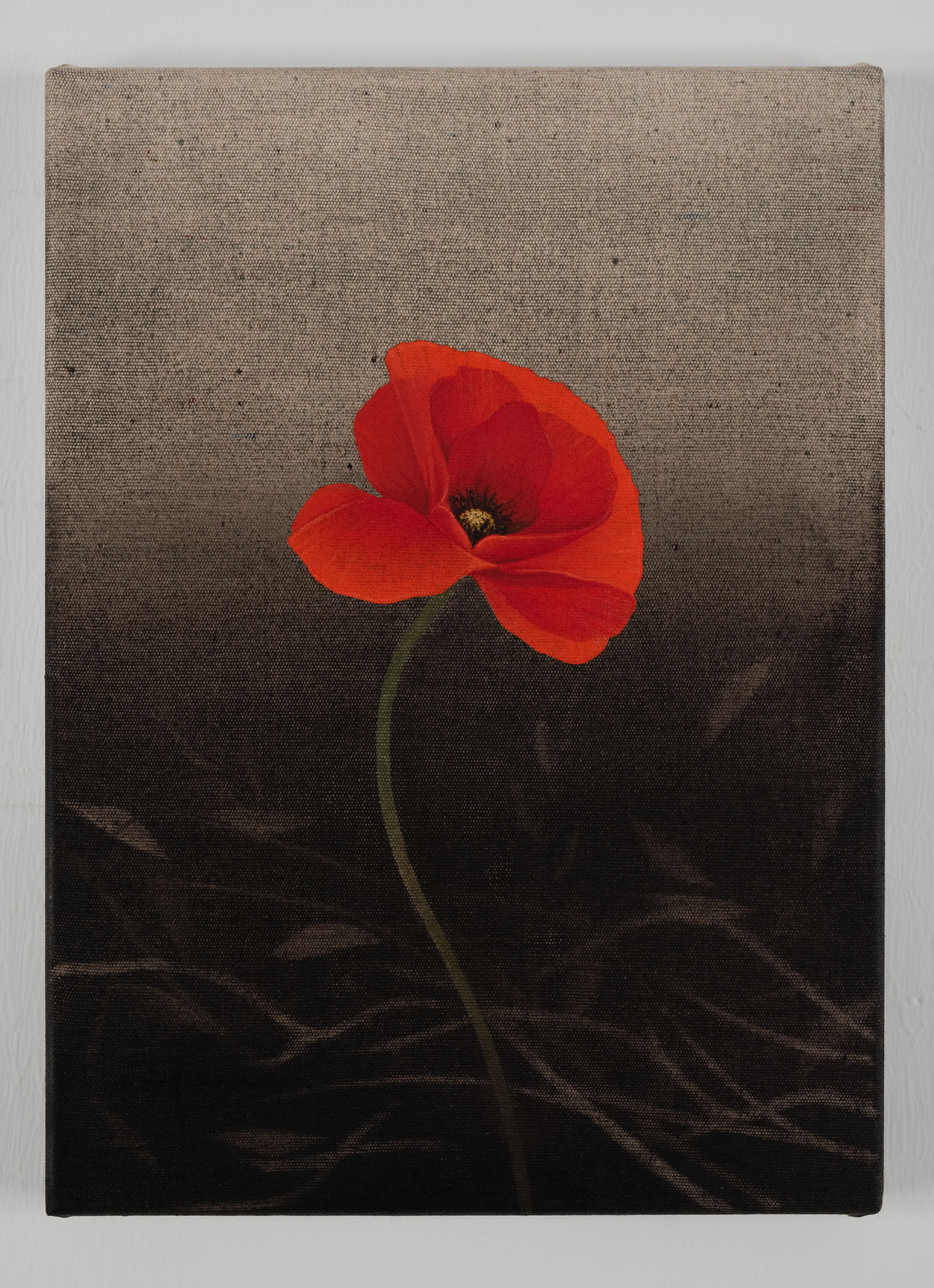

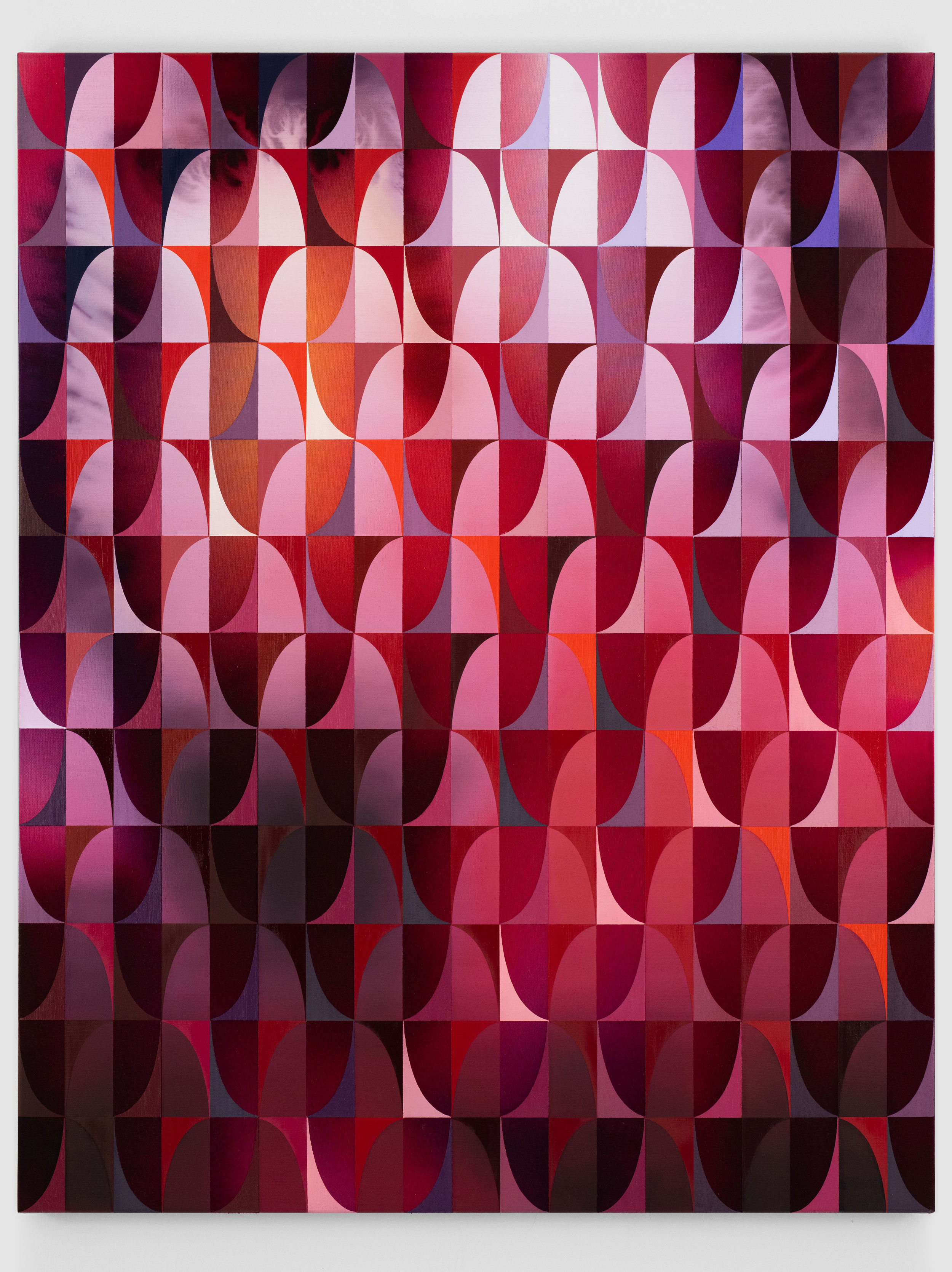




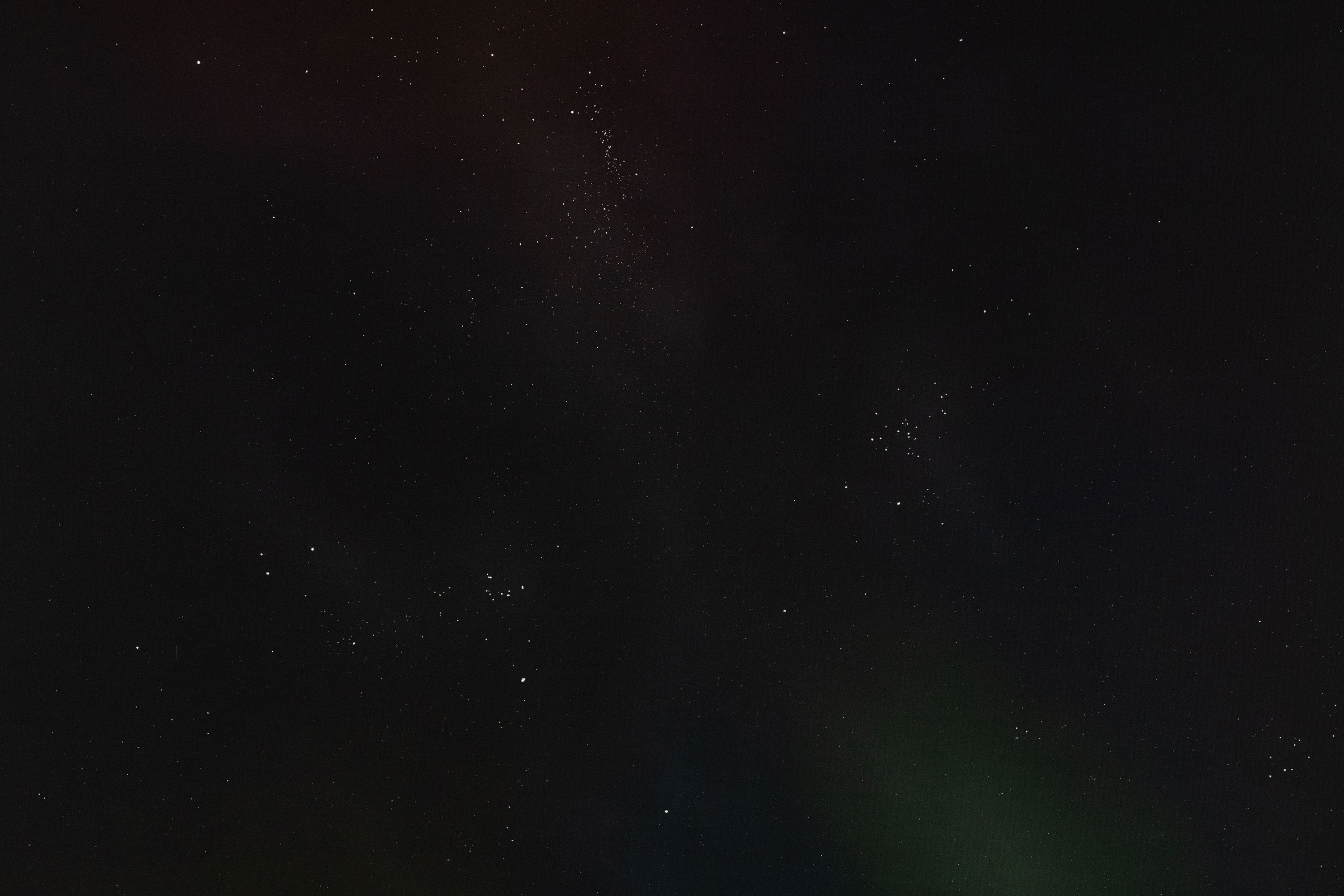
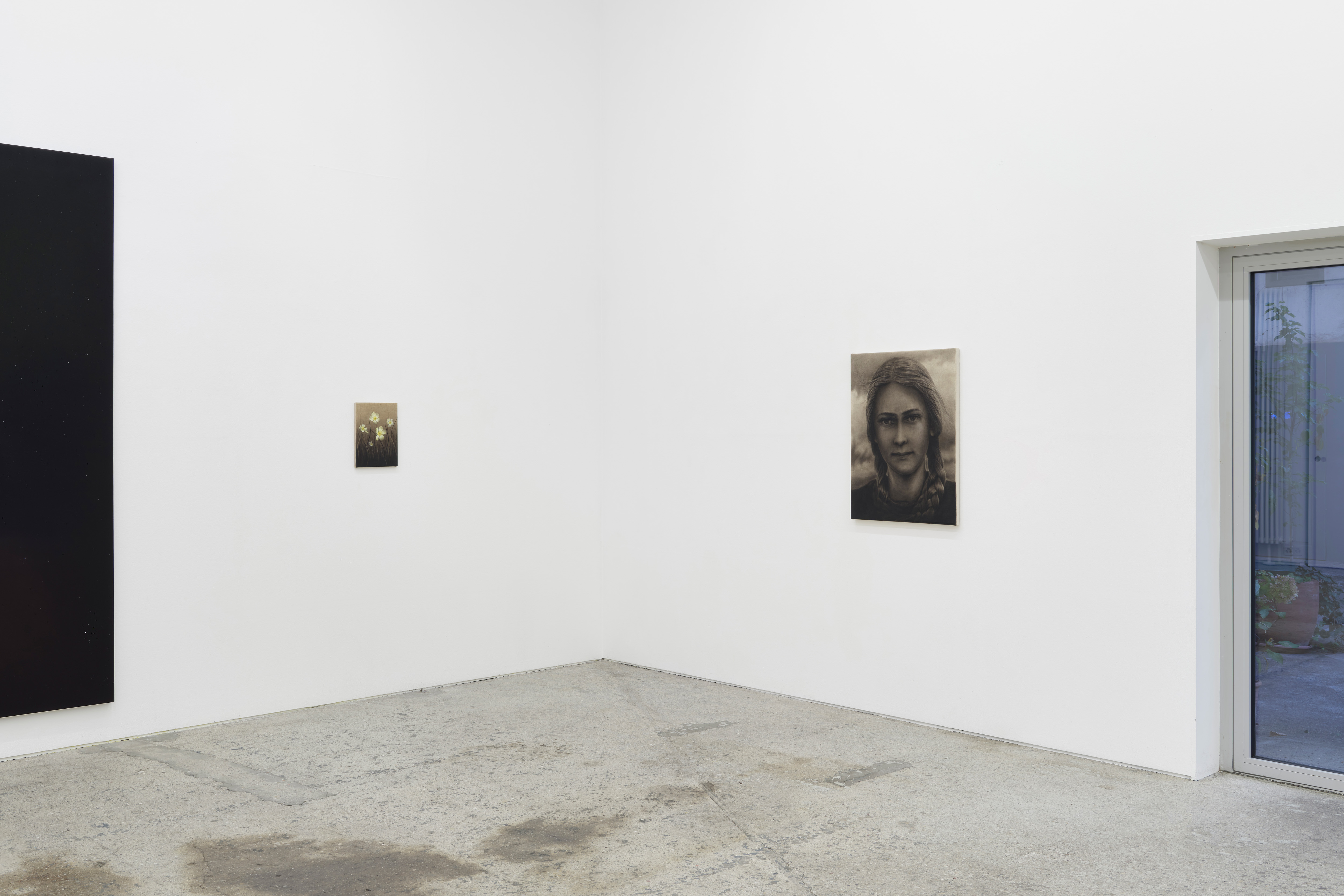
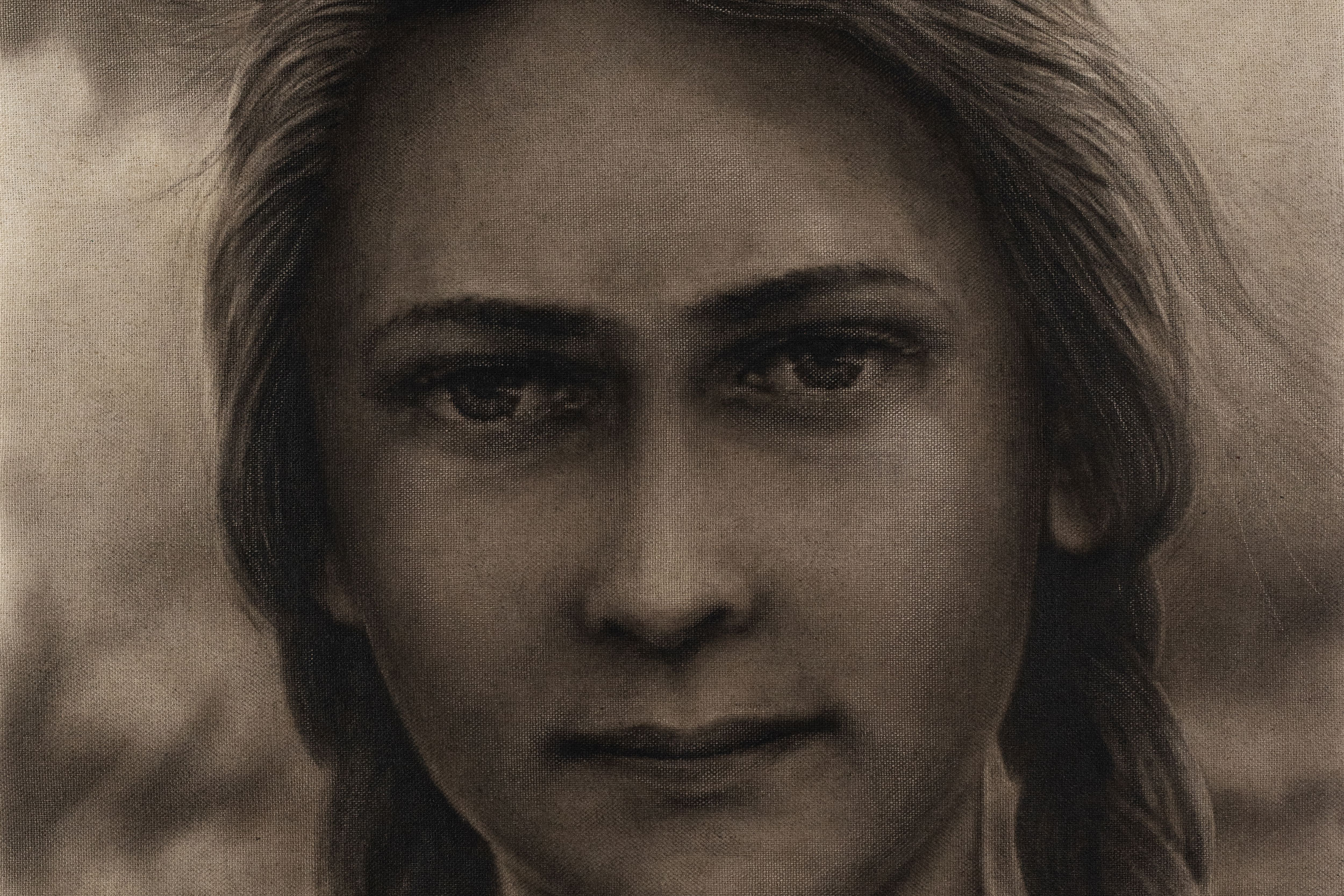



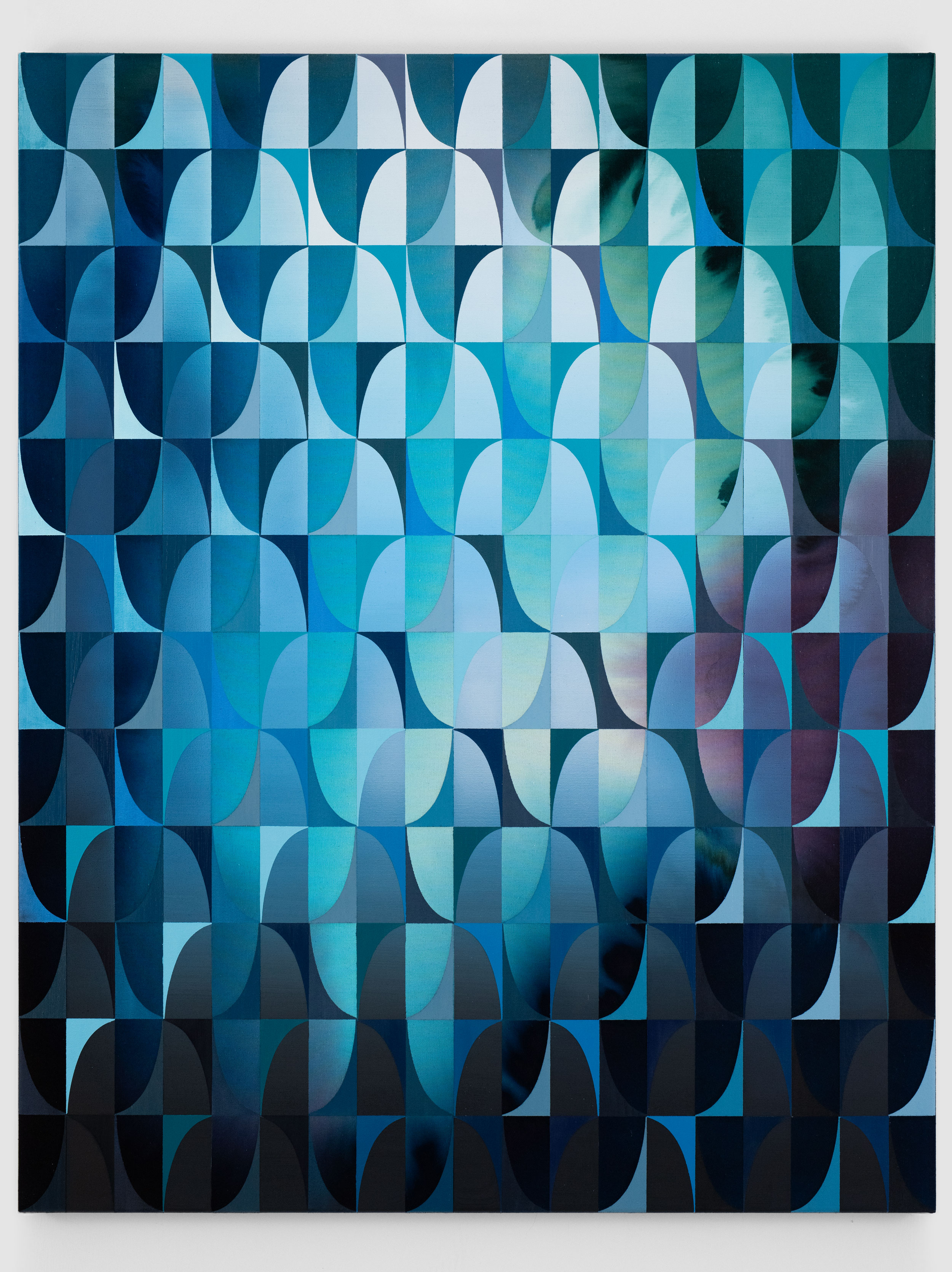
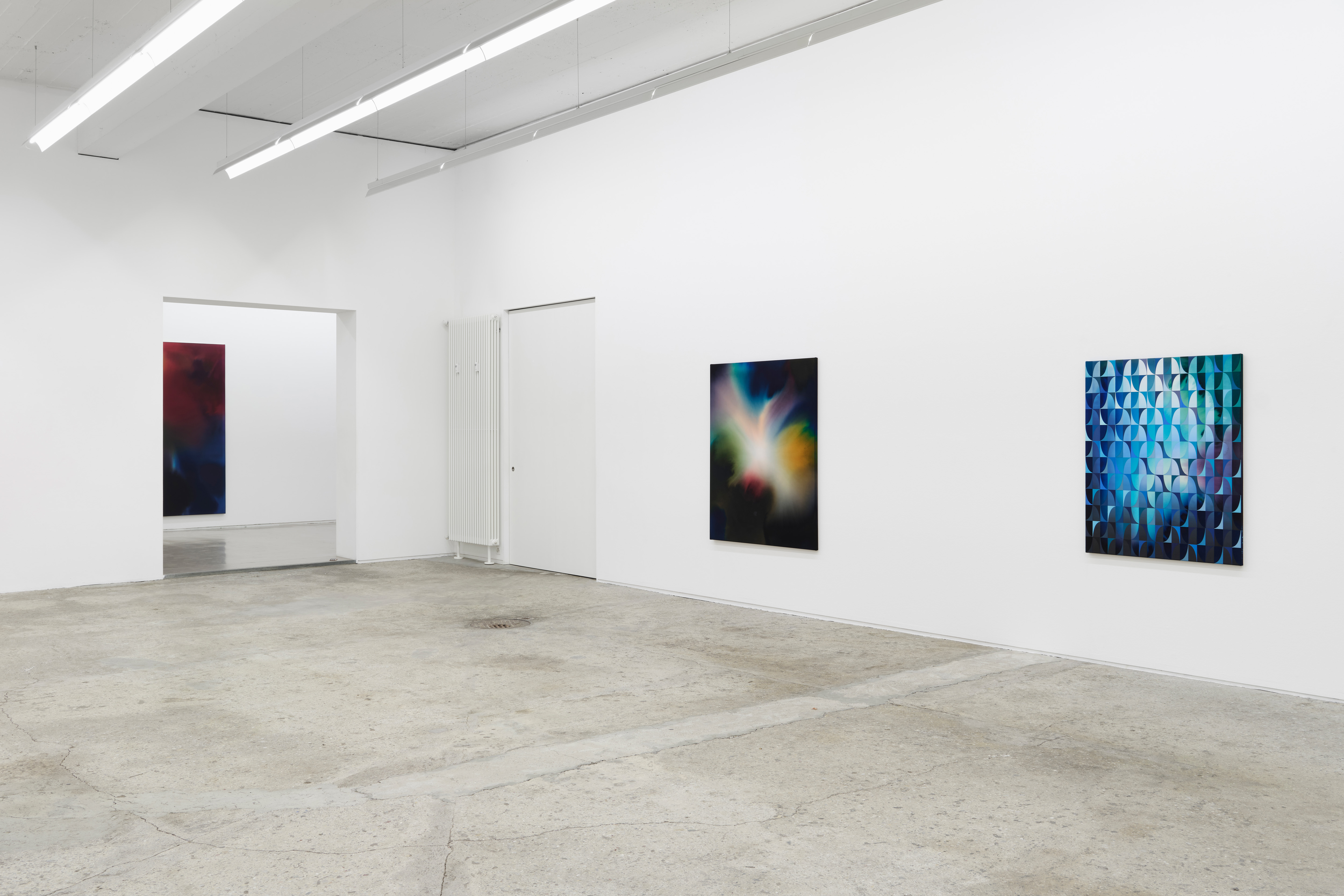
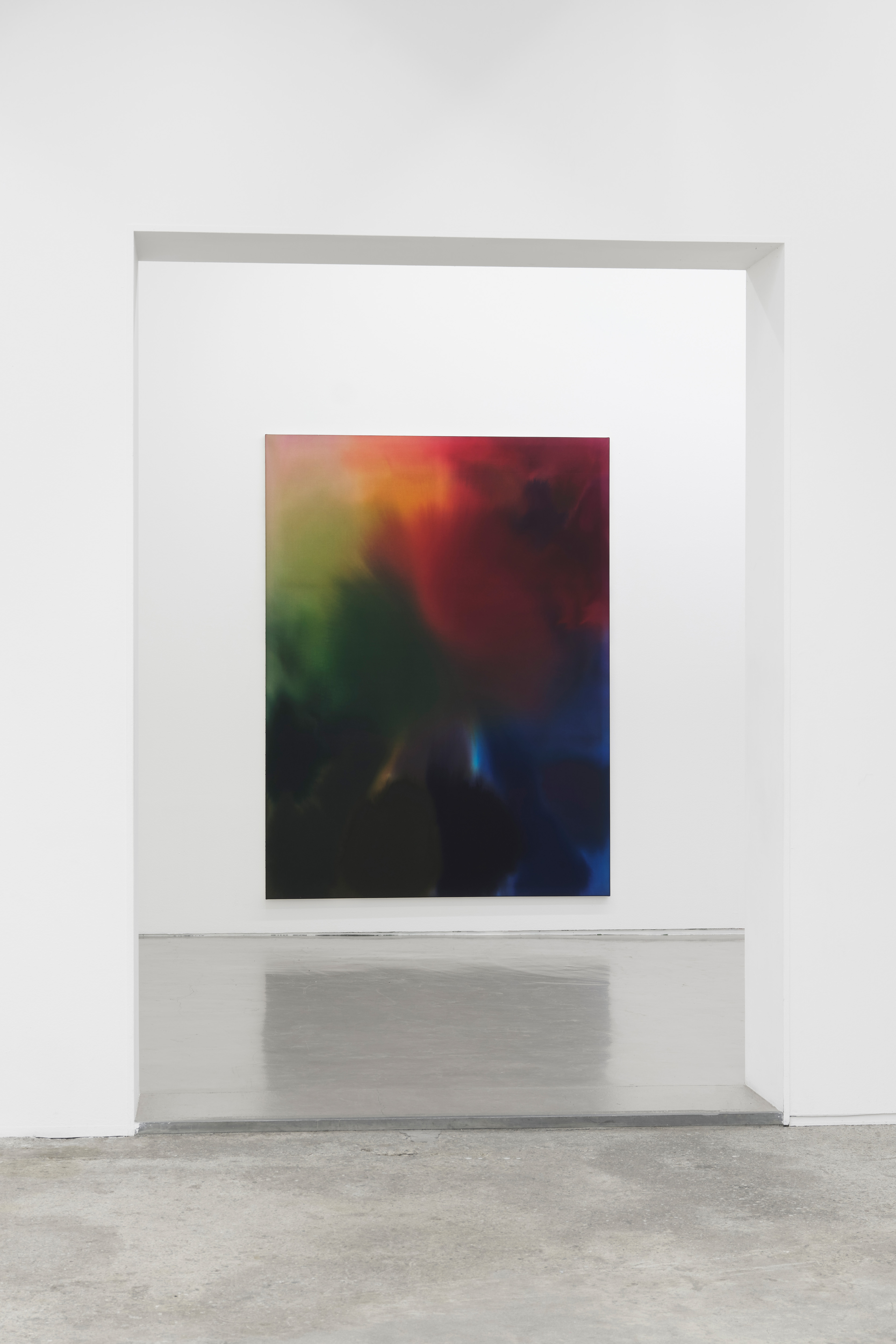


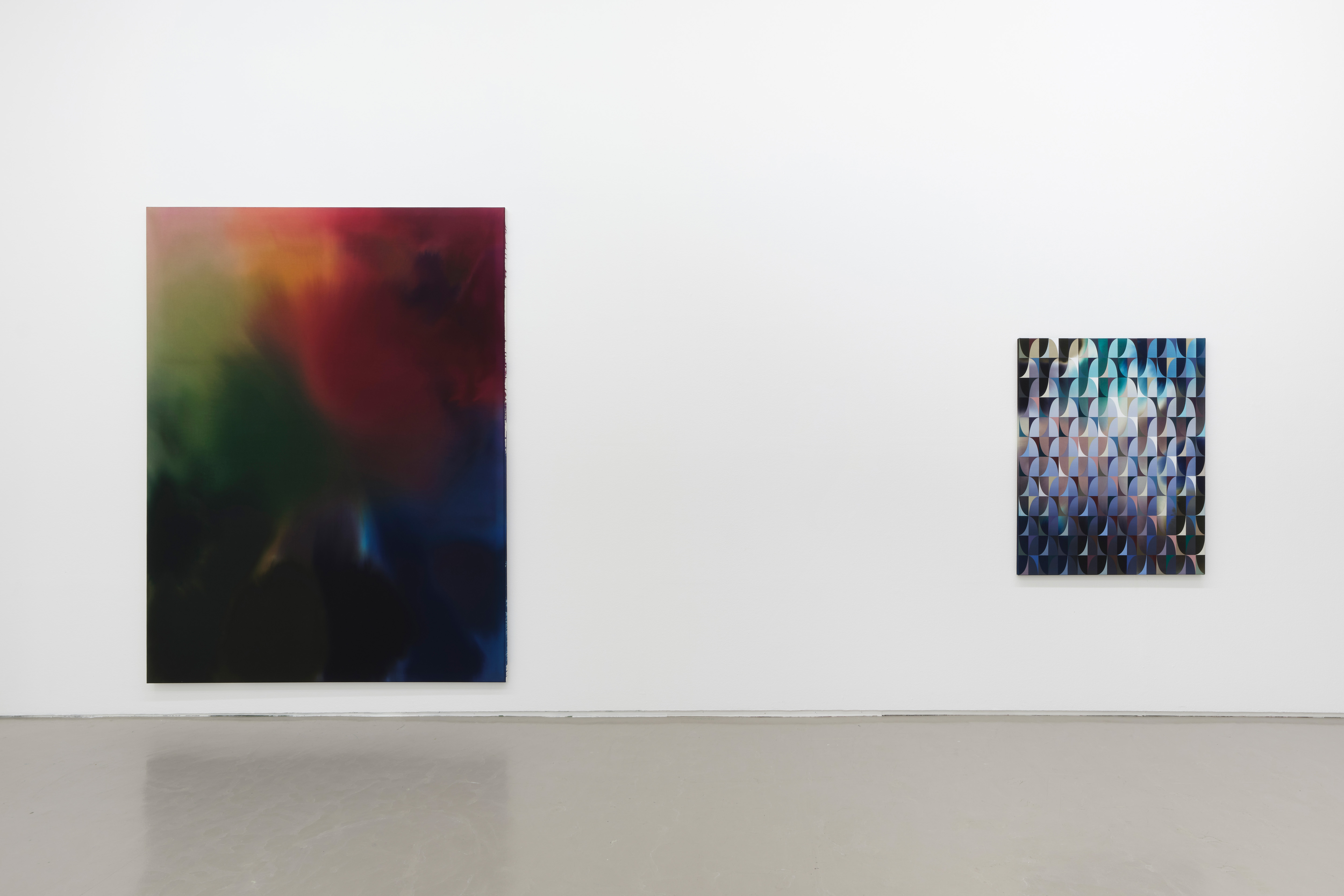
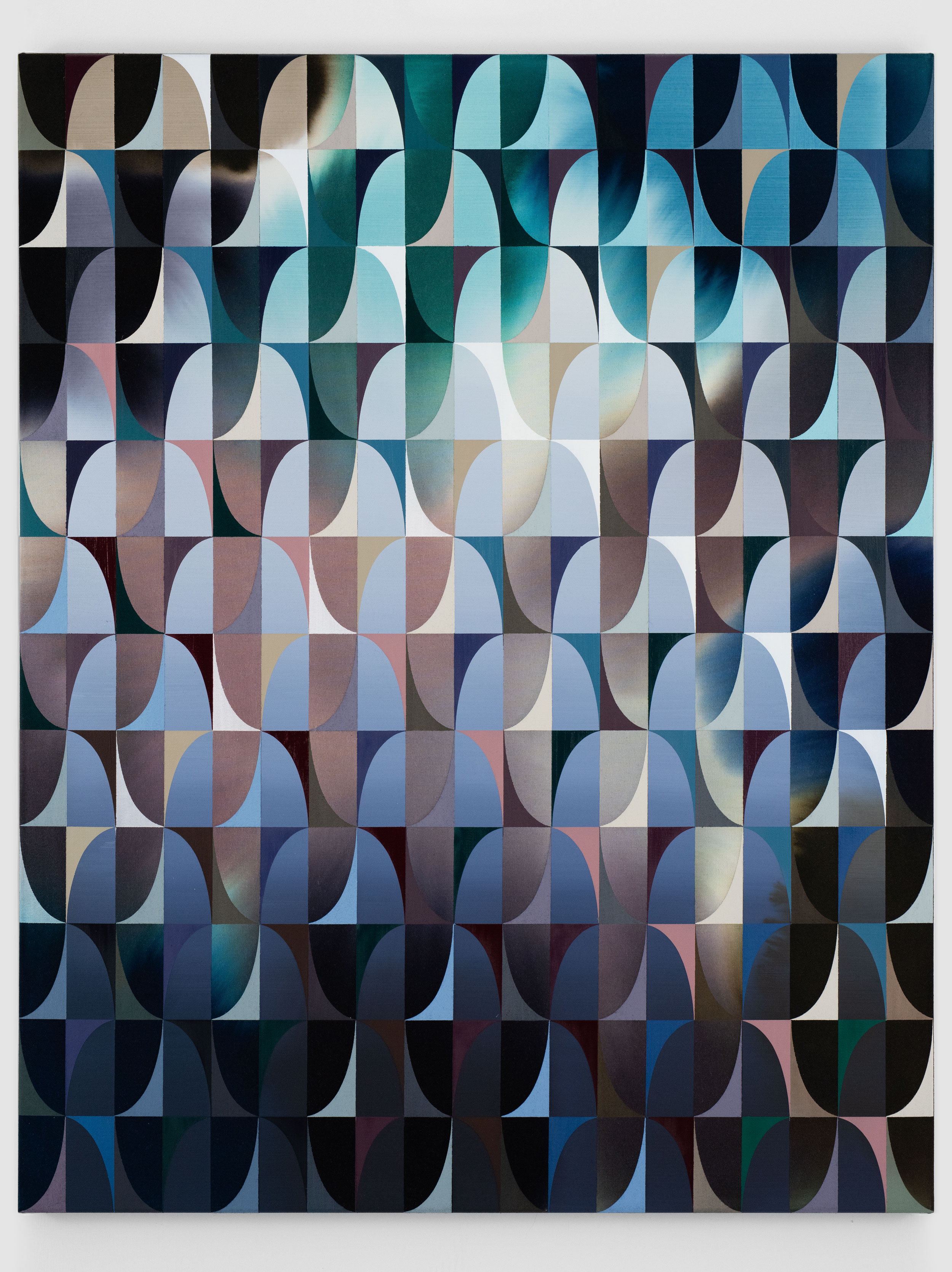




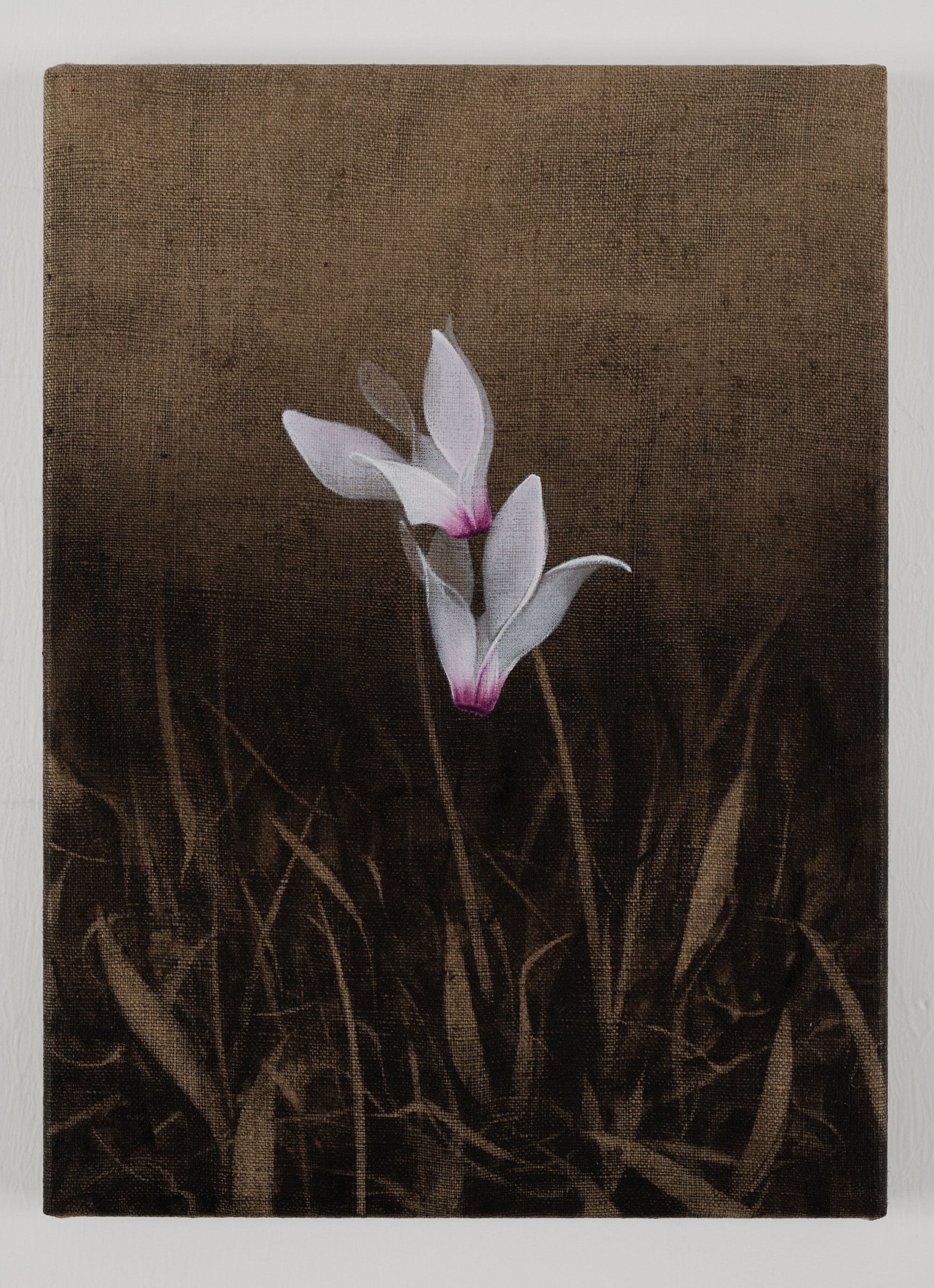

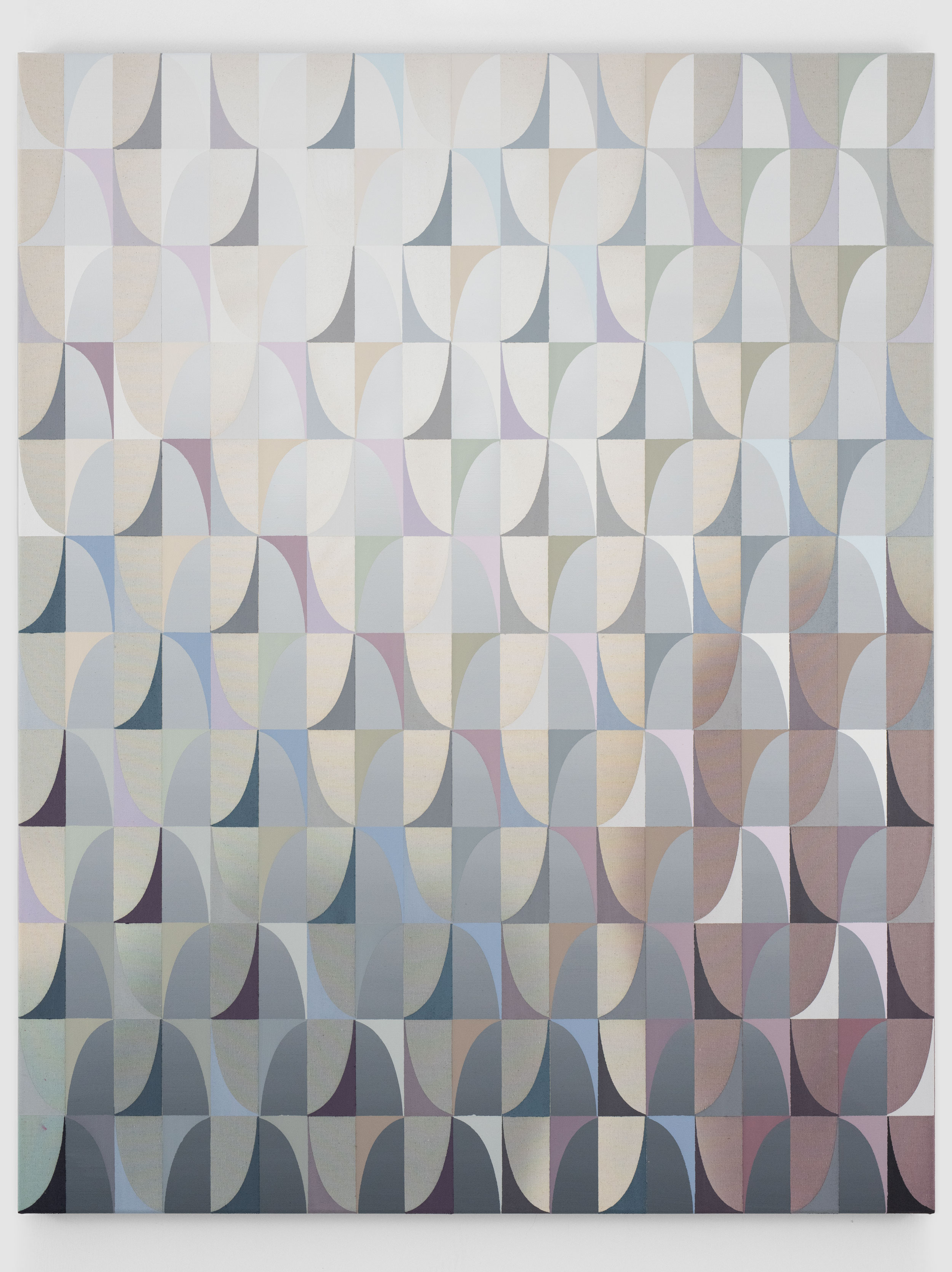
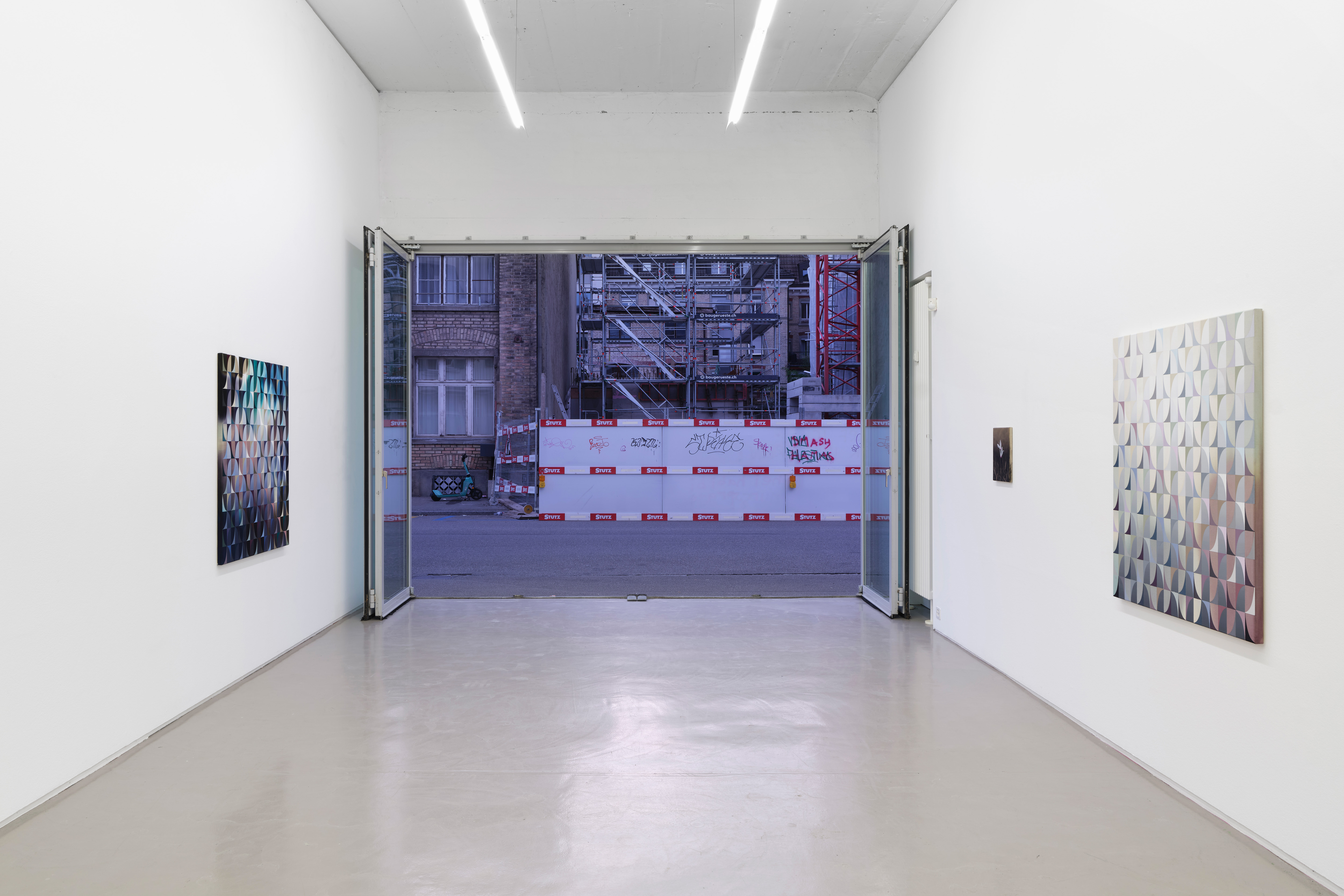

Each time it feels as if I could see more, yet I never see enough. I catch myself wandering from one interpretation to the next: I wish my gaze could resolve itself somewhere, into a thing, an idea, a detail that might finally tell me «this and not that»; instead I hesitate, leaping from paradox to paradox. I believe I can glimpse beyond the weave of the image, convince myself that I seize its story or sound its layers, and still I keep returning here, now, to the canvas, as if I had never left it.
How this geometric rigour, so systematic, logical, lucid, which I delude myself into grasping in all its clarity, could have already become another form, another colour — other than itself? How do these shifts of colour embrace me with their endless adjustments and lull me into their abyss? How can these flowers survive—delicate and proud—amid the drama of their invisible stems, and the bristling weeds that loom over them? What to make of those tightened lips, the eyes carved by events, and those cheeks beaded with tears: are they anger or vindication, despair or hope, past or future? And what is one to feel before this sea, when I cannot decide between the horizon and geometry, when I cannot choose whether to sink to the surface, or soar into the depths?
“I paint until the image emerges,” says Rogado, “whether the result is abstract or figurative”. The work’s success lies in the visual dilemma it places before our eyes. The question must remain unresolved. Rogado does not work towards goals, he does not plan, he does not foresee; he prefers to follow a gesture, a procedure, a logic, and then juxtapose it with other gestures, other procedures, other logics. His work is a layering of painterly processes, executed experimentally, whose sole aim is the unexpected singularity of the result.
How this geometric rigour, so systematic, logical, lucid, which I delude myself into grasping in all its clarity, could have already become another form, another colour — other than itself? How do these shifts of colour embrace me with their endless adjustments and lull me into their abyss? How can these flowers survive—delicate and proud—amid the drama of their invisible stems, and the bristling weeds that loom over them? What to make of those tightened lips, the eyes carved by events, and those cheeks beaded with tears: are they anger or vindication, despair or hope, past or future? And what is one to feel before this sea, when I cannot decide between the horizon and geometry, when I cannot choose whether to sink to the surface, or soar into the depths?
“I paint until the image emerges,” says Rogado, “whether the result is abstract or figurative”. The work’s success lies in the visual dilemma it places before our eyes. The question must remain unresolved. Rogado does not work towards goals, he does not plan, he does not foresee; he prefers to follow a gesture, a procedure, a logic, and then juxtapose it with other gestures, other procedures, other logics. His work is a layering of painterly processes, executed experimentally, whose sole aim is the unexpected singularity of the result.
And so we lose ourselves in the play of formal contrasts that accord without our knowledge, gliding gently from one logic to another, and traversing this perceptual labyrinth in every possible sense. We could look away and suspend every question; instead we remain with these images that go on beginning, never ending… perhaps because they have nothing in particular to show. Their dazzling ambiguity, invading our body, soothes us. Every obligation is repelled, every expectation suspended, and our attention becomes gentle and floating.
Reflecting on the Chinese conception of landscape, the philosopher François Jullien noted that contemplation — unlike observation — is not born of desire, nor does it aim to possess or internalize, but is a mode of immersion. When we contemplate, we do not see a world as a view or a spectacle, because we are not looking from the outside but from within, absorbed in the relations among things, which together seize us, hold us, and flow through us. Rogado’s painting addresses this intimate realm of vision: it promotes it, calls for it, seeking a contact that opens us to the whole of the sensible. What is required, then, is a gesture of trust; the willingness to feel what it has to reveal about ourselves in the world.
“So my mind sinks in this immensity:
and foundering is sweet in such a sea.” 1
Thus the poet Leopardi confided in his reader, his gaze turned to his own landscape; so we too would confide in Giacomo Santiago Rogado, our gaze turned to his painting.
Luca Libertini
1 Giacomo Leopardi, Canti: Poems / A Bilingual Edition, translated and annotated by Jonathan Galassi (New York: Farrar, Straus and Giroux, 2010)
Reflecting on the Chinese conception of landscape, the philosopher François Jullien noted that contemplation — unlike observation — is not born of desire, nor does it aim to possess or internalize, but is a mode of immersion. When we contemplate, we do not see a world as a view or a spectacle, because we are not looking from the outside but from within, absorbed in the relations among things, which together seize us, hold us, and flow through us. Rogado’s painting addresses this intimate realm of vision: it promotes it, calls for it, seeking a contact that opens us to the whole of the sensible. What is required, then, is a gesture of trust; the willingness to feel what it has to reveal about ourselves in the world.
“So my mind sinks in this immensity:
and foundering is sweet in such a sea.” 1
Thus the poet Leopardi confided in his reader, his gaze turned to his own landscape; so we too would confide in Giacomo Santiago Rogado, our gaze turned to his painting.
Luca Libertini
1 Giacomo Leopardi, Canti: Poems / A Bilingual Edition, translated and annotated by Jonathan Galassi (New York: Farrar, Straus and Giroux, 2010)
2025
ALL THAT YOU SEE
Solo show
Kunsthalle Göppingen
Kunsthalle Göppingen
Nov 12 2024 – April 27, 2025
Göppingen
Göppingen






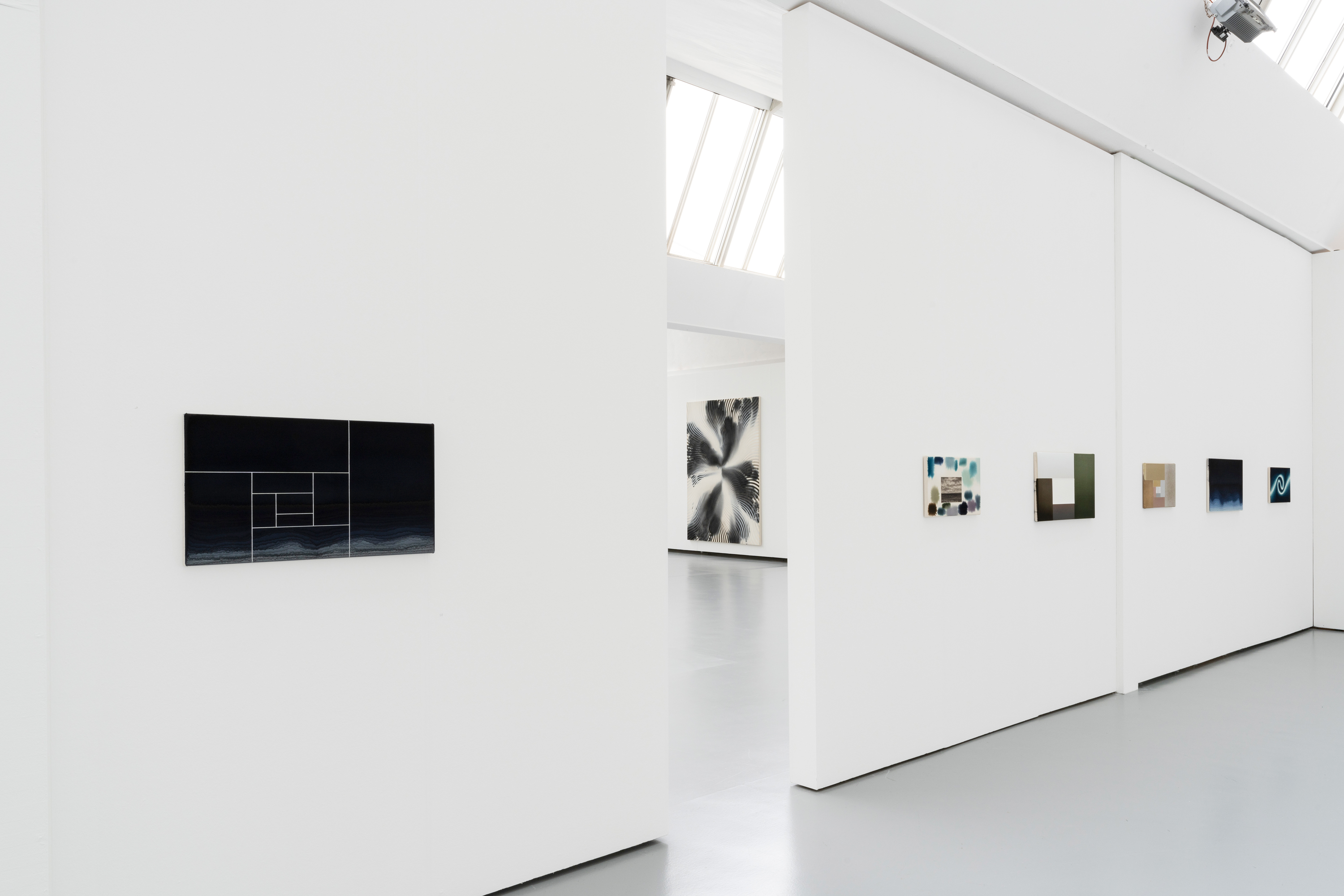





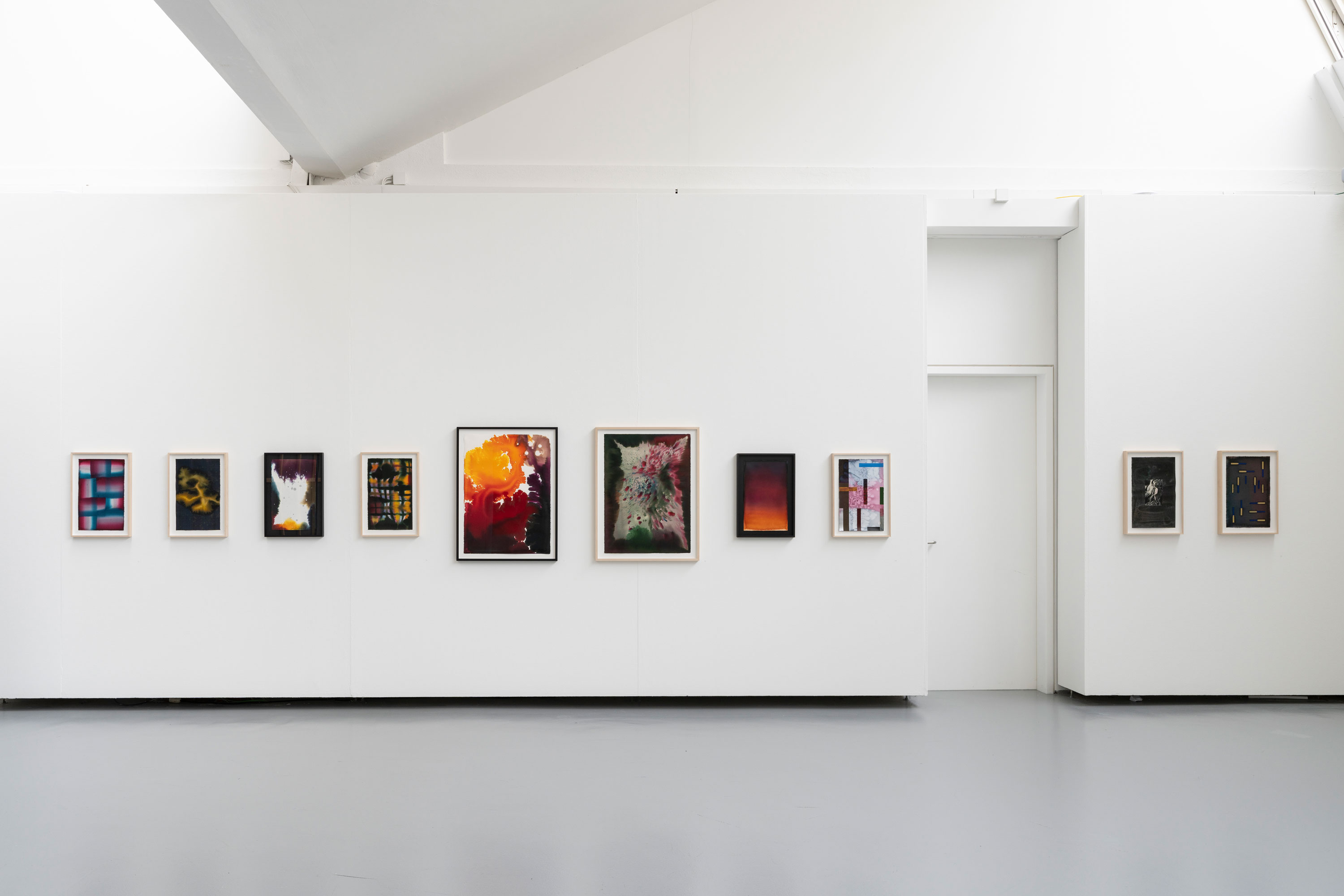

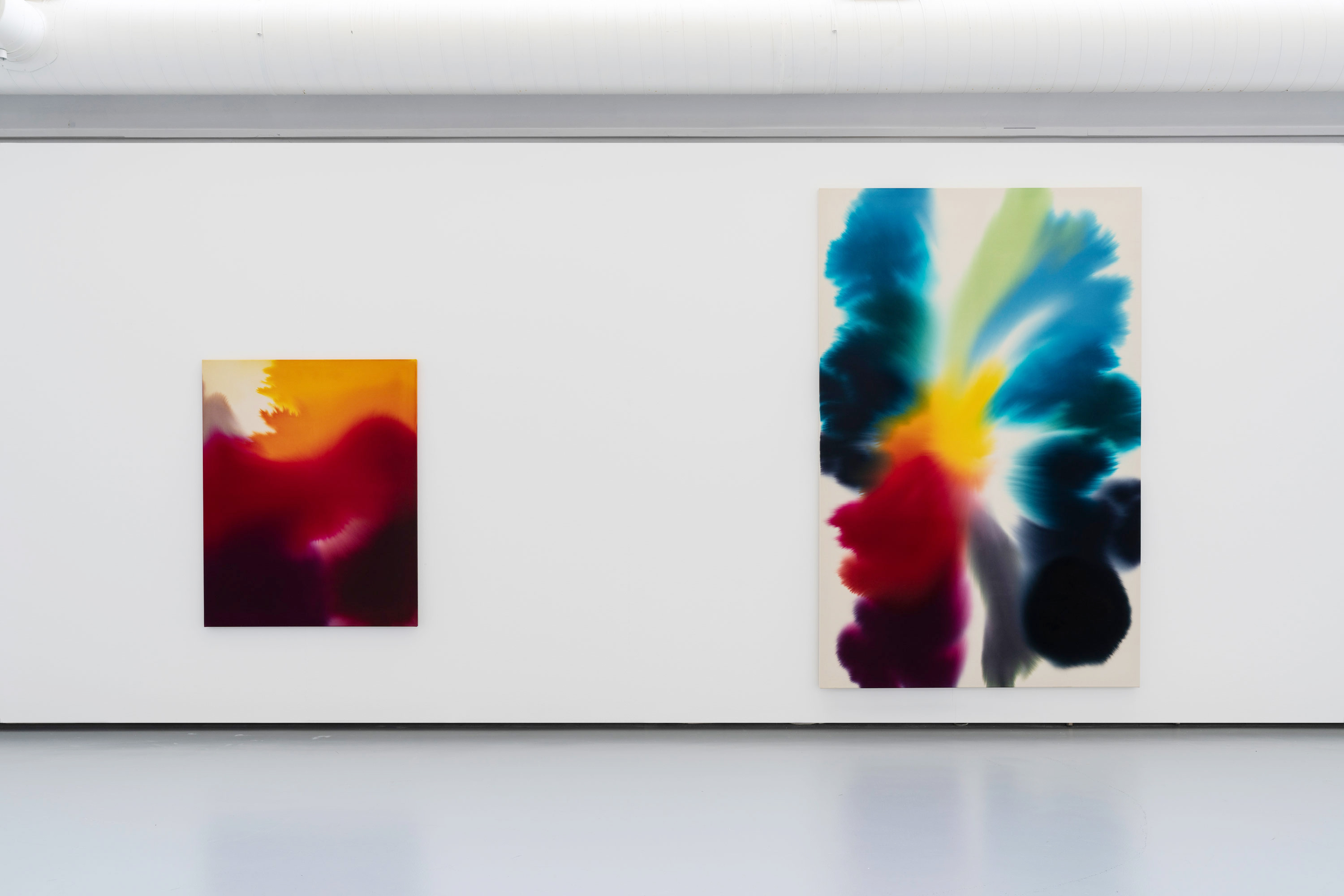

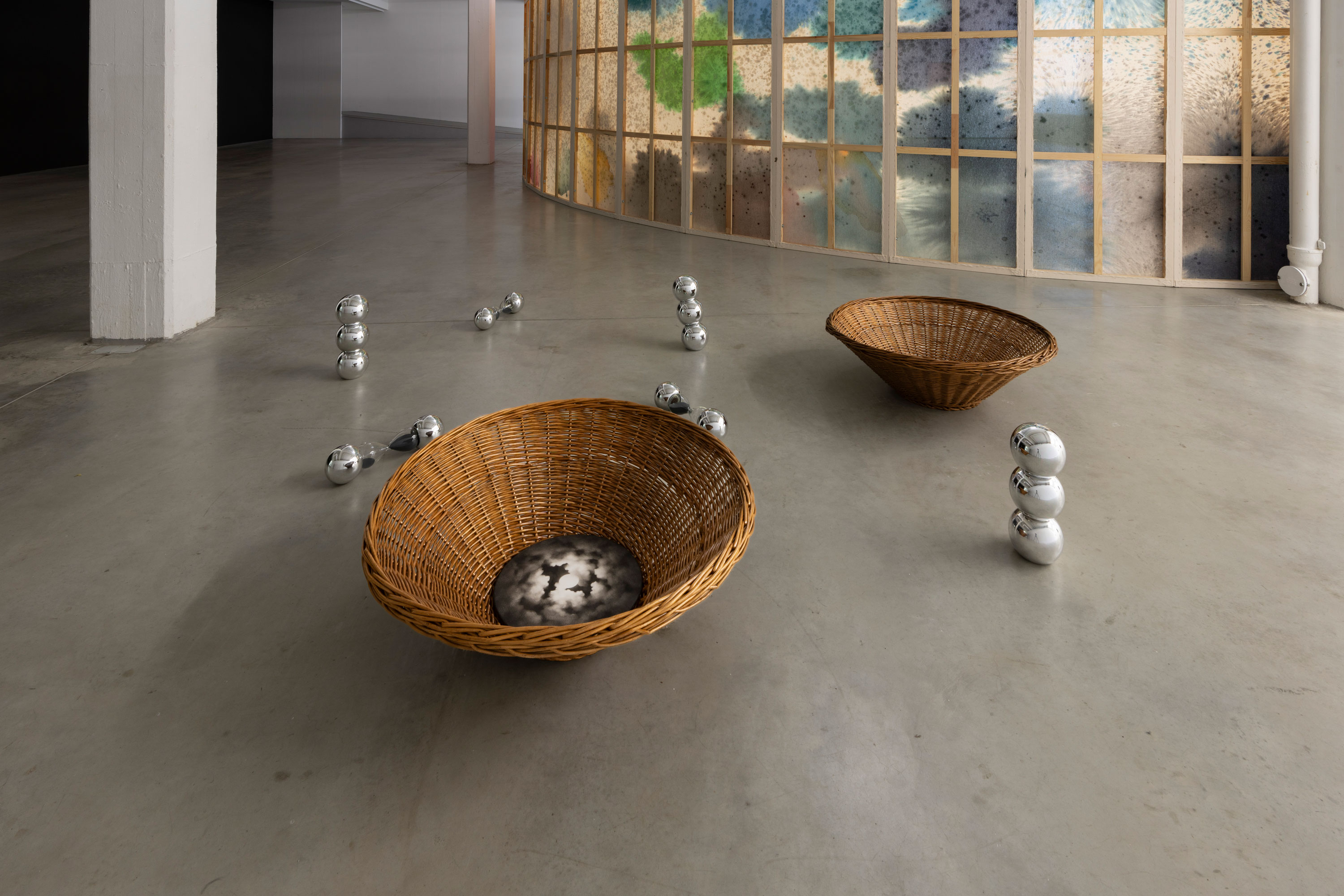











Central themes in the work of painter Giacomo Santiago Rogado (born 1979) are perception and seeing itself. His paintings enable visual experiences that stimulate and sharpen perception. Rogado's works encourage close observation, raising questions about spatiality, three-dimensionality and materiality. In his work, he combines a wide variety of traditions of the medium of painting and explores its boundaries with tools, techniques and materials. The exhibition ALL THAT YOU SEE provides a comprehensive overview of the painter's work and shows pieces from his various groups of works.
The artist's works will be on display on both levels of the museum – in the Shedhalle, in C1 and in the hall below. The exhibition also includes a large-scale, walk-in installation in which Rogado continues to explore his key themes: viewers can walk through the installations and thus become completely surrounded by the paintings. This gives a new dimension to the idea of pictorial space and its expansion. The panel painting has opened up into three dimensions.
Melanie Ardjah
Melanie Ardjah
2024
AUSSER SICHT
Solo show
Thun Panorama
Thun Panorama
May 11 – Dec 1, 2024
Thun
Thun
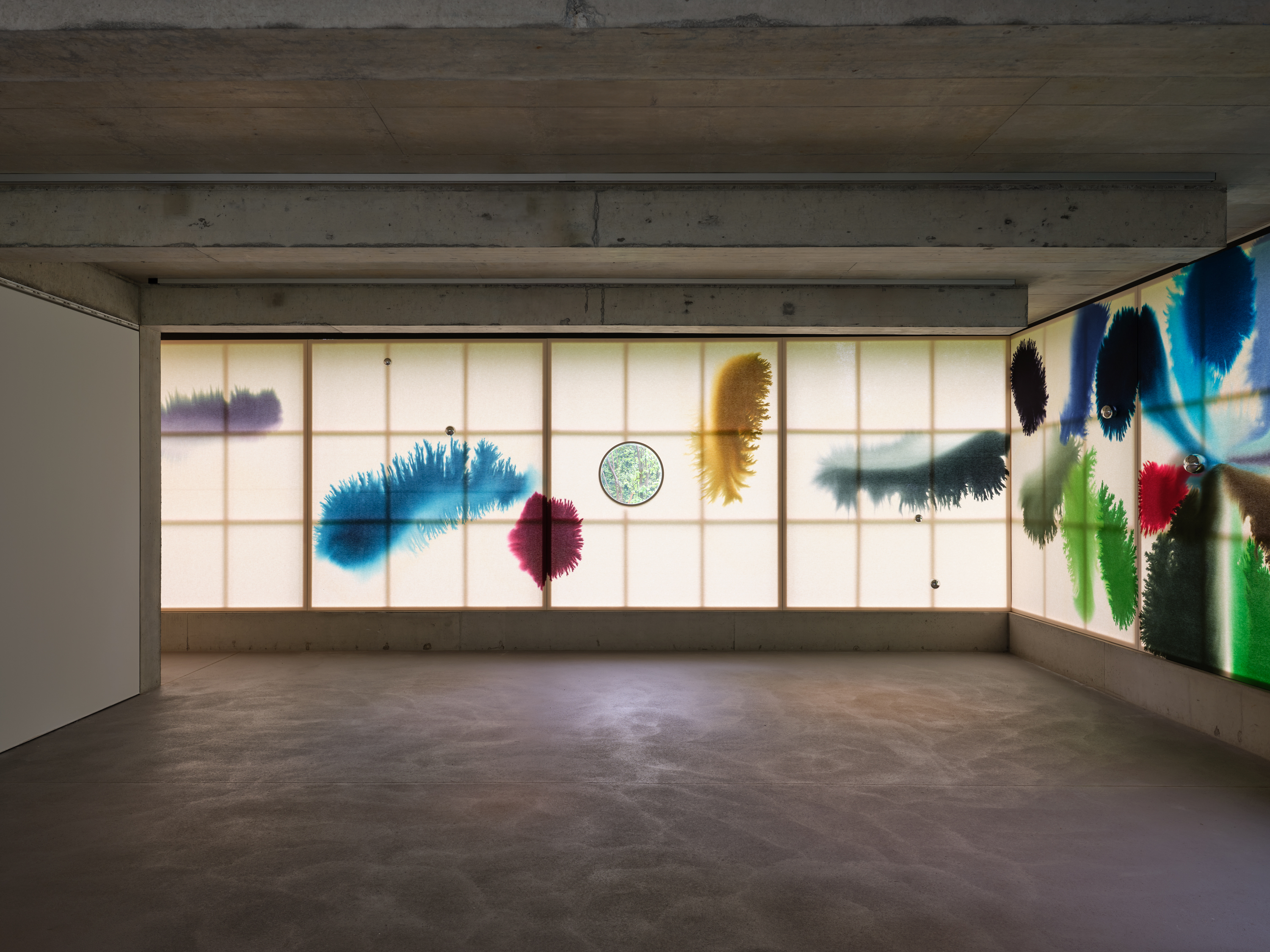

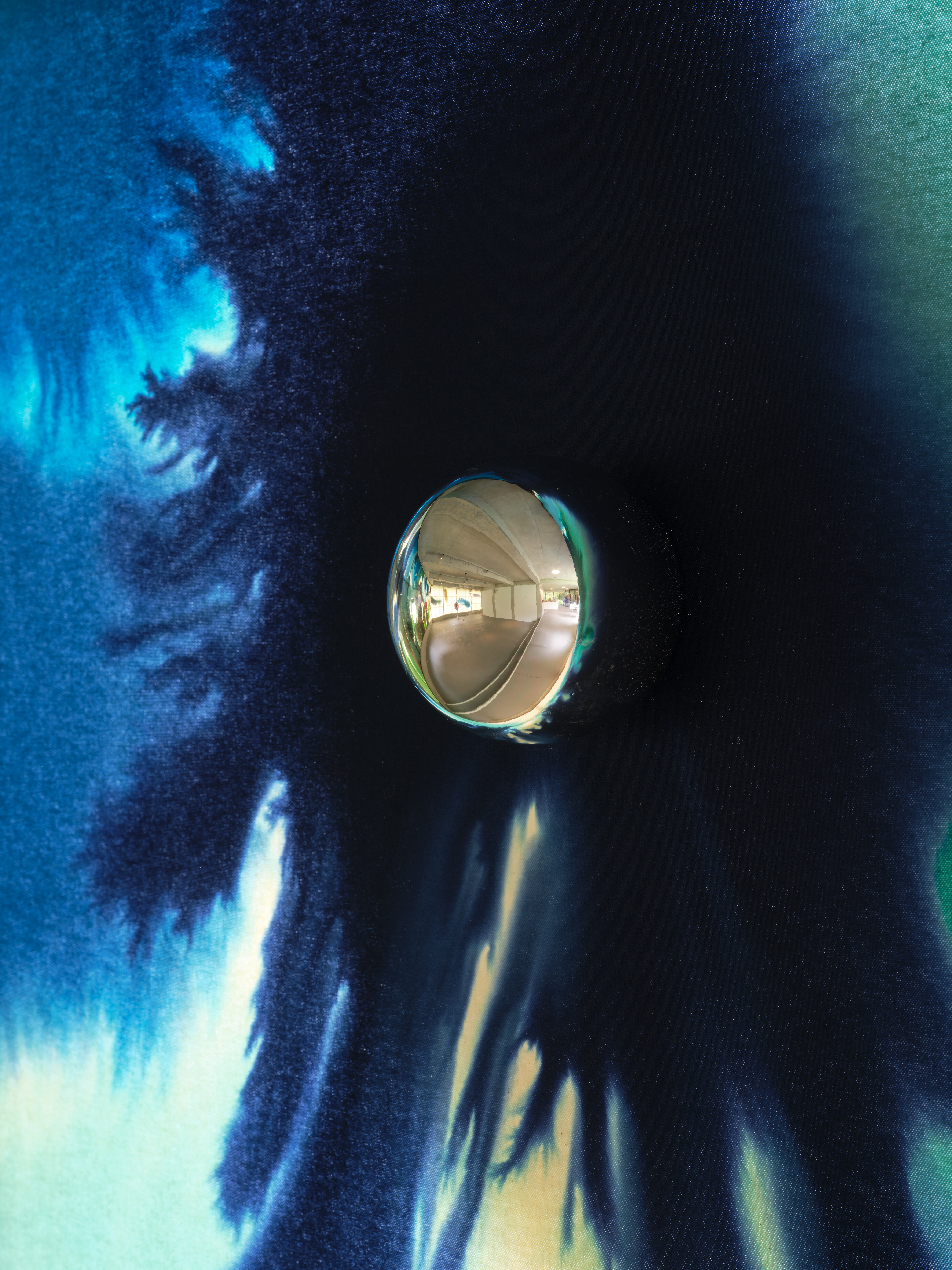


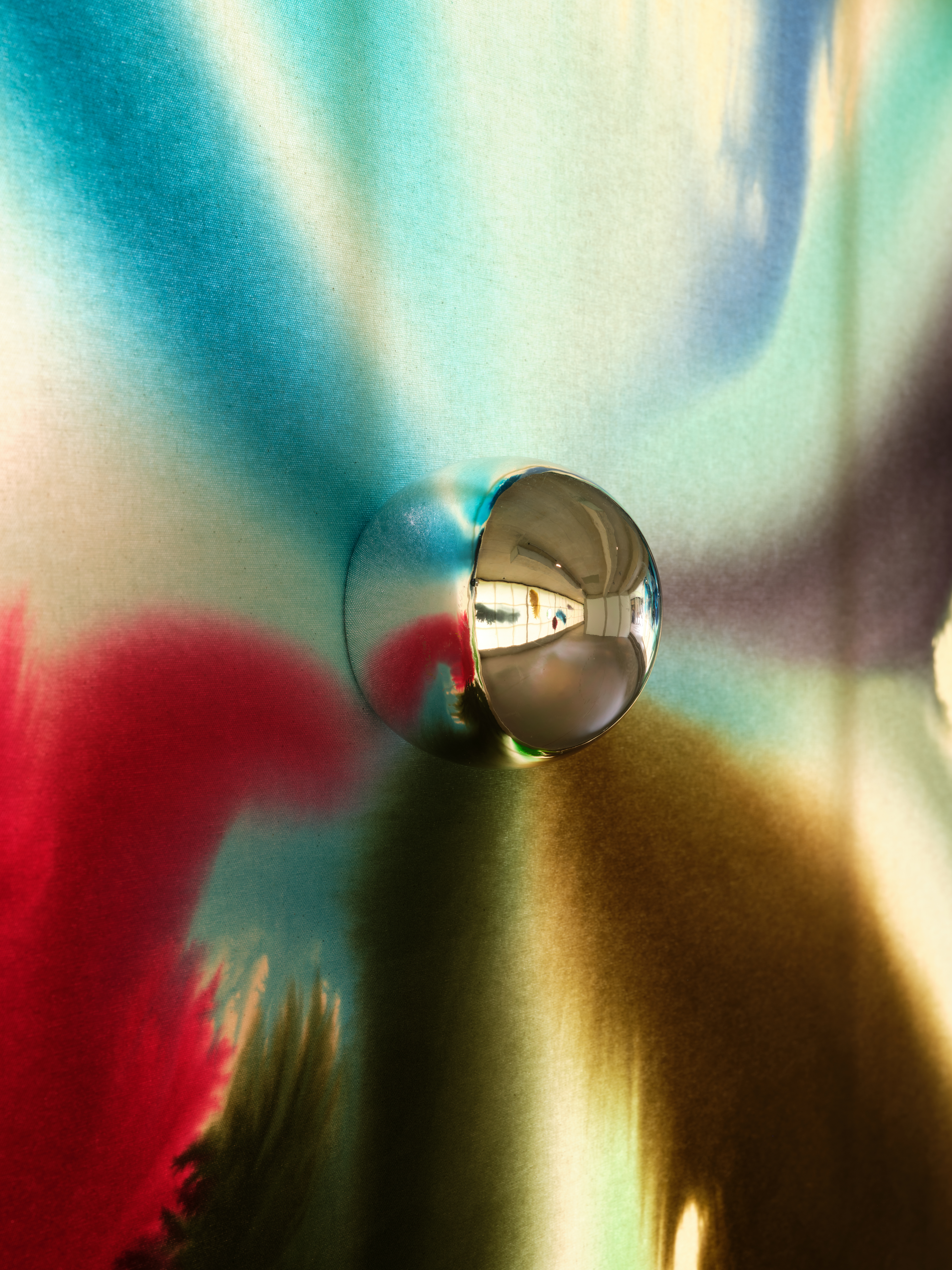
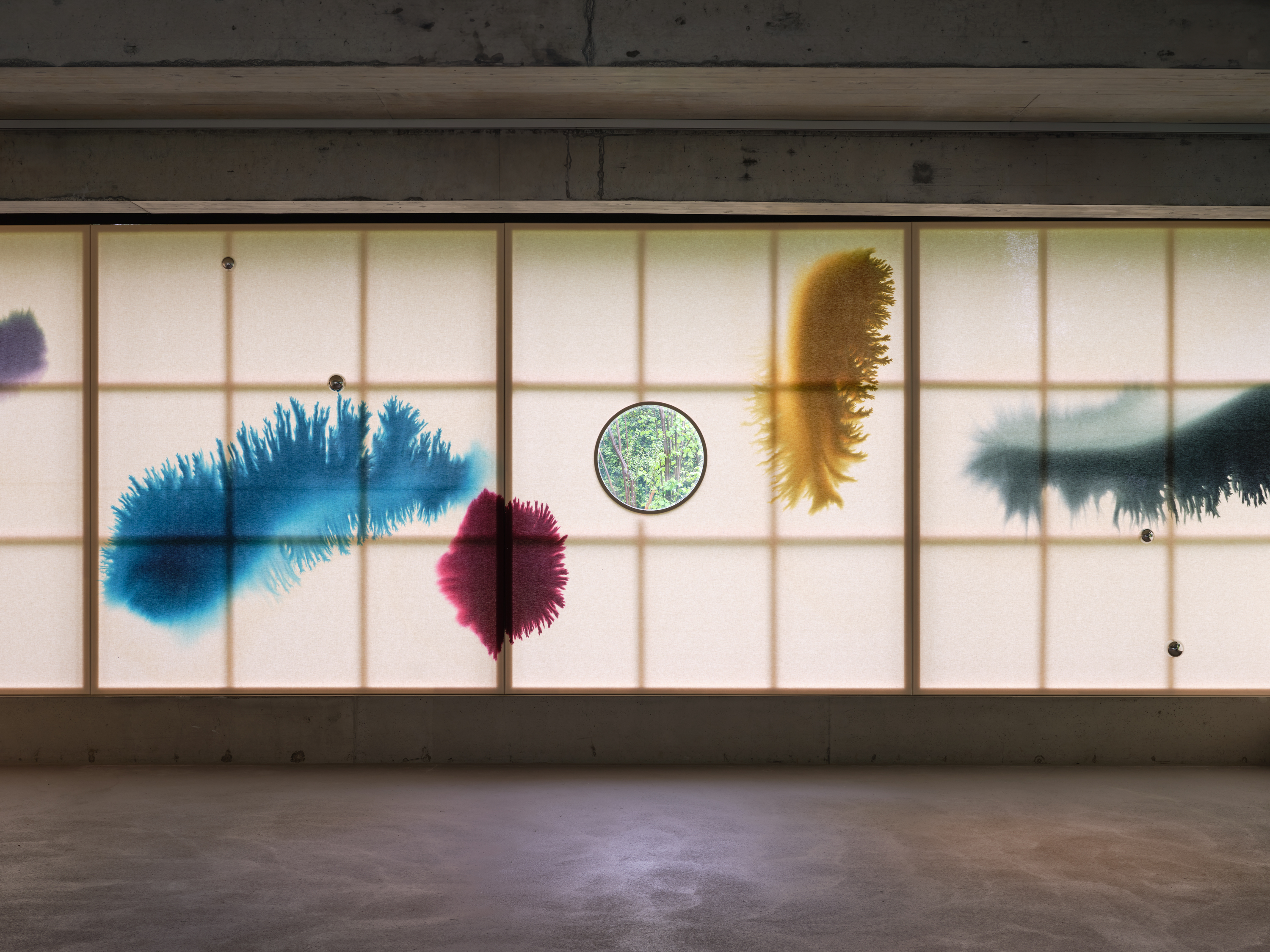

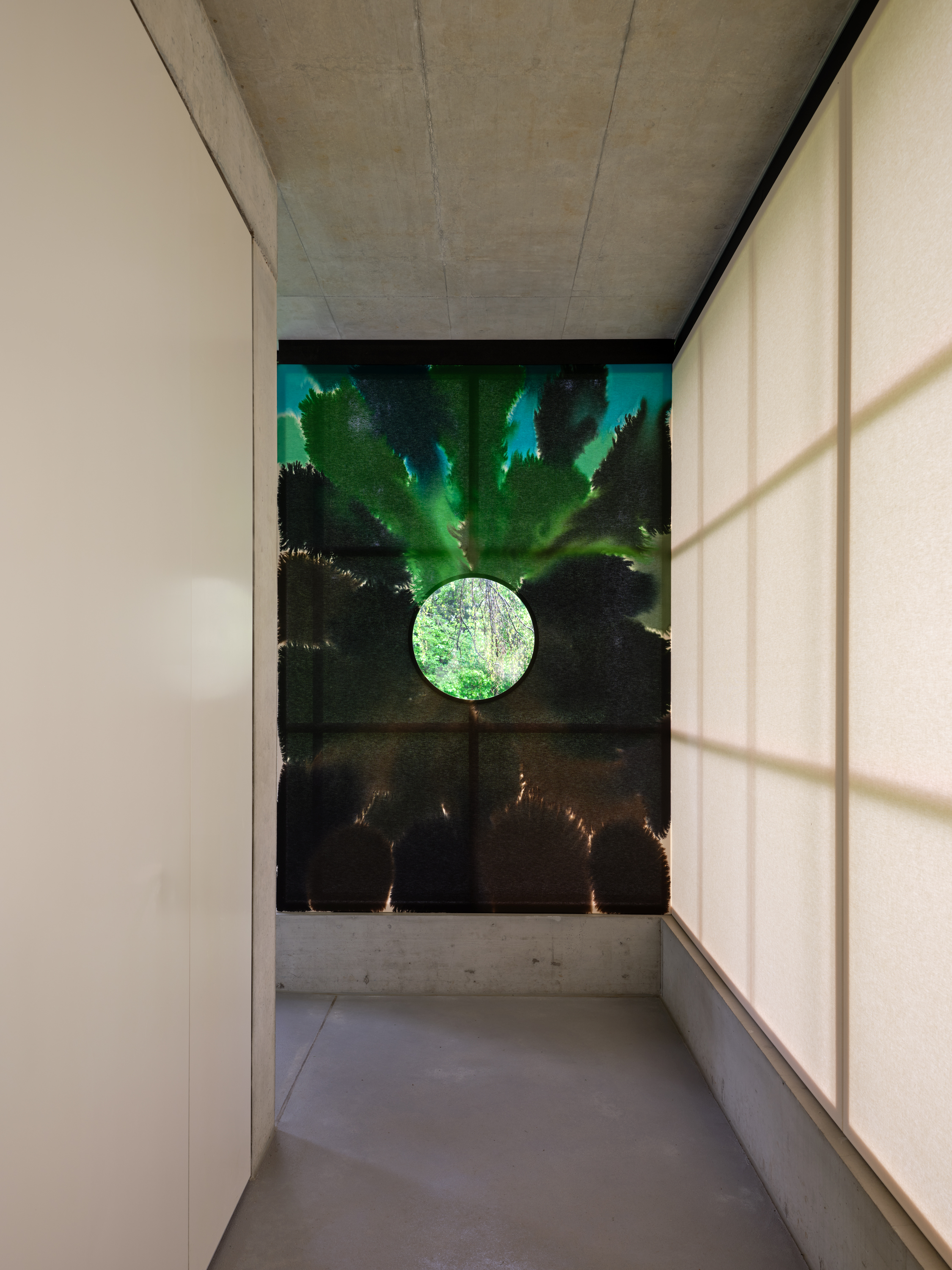
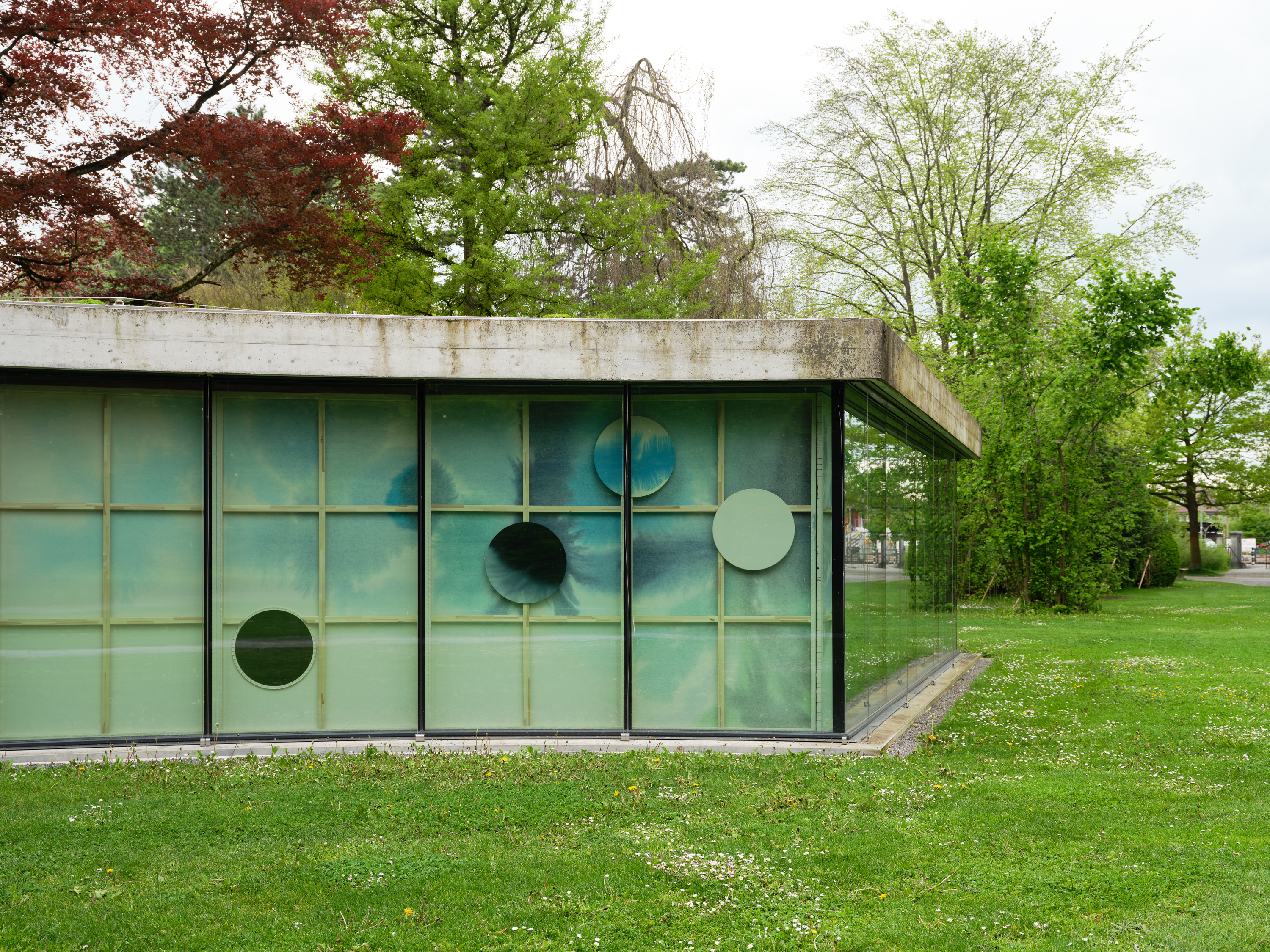
On their way to the building, visitors are already confronted with Rogado’s work as soon as they glimpse from the outside the backs of the large canvases blending harmoniously with the windows. The translucency of the picture supports hints at the nature of the painting to come. In addition, circular openings in the canvases afford a direct view into the exhibition space. In addition, round pictures hanging on the back of the canvases can be seenfrom the outside but only guessed at from inside. As windows into another dimension, they enhance the impression of depth and the complexity of the installation.
Upon arrival inside the exhibition space, the possibilities for interpreting the work multiply. The colours that the artist has applied to the canvases create shimmering organic forms that open up a view inwards and – thanks to the light coming in from outside and the semi-transparent picture supports – also outwards. The daylight makes the silhouettes of the stretcher frames and the small round paintings attached to the back show through the canvases. These elements blend with the shadows cast by the trees and plants to become part of the work and its composition. Ausser Sicht is therefore constantly in motion, transforming with changes in nature and the seasons.
Upon arrival inside the exhibition space, the possibilities for interpreting the work multiply. The colours that the artist has applied to the canvases create shimmering organic forms that open up a view inwards and – thanks to the light coming in from outside and the semi-transparent picture supports – also outwards. The daylight makes the silhouettes of the stretcher frames and the small round paintings attached to the back show through the canvases. These elements blend with the shadows cast by the trees and plants to become part of the work and its composition. Ausser Sicht is therefore constantly in motion, transforming with changes in nature and the seasons.
The four circular openings, which are positioned in the installation in the direction of the four points of the compass, act like windows that open up the picture even further to offer a complete view of the outside world and project it outwards. Rather than blocking the view, the canvases thus open up a horizon of infinite possibilities. The artist has furthermore placed on them painted ceramic spheres with reflective enamel surfaces, creating a kaleidoscope of reflected images. Viewers can also see themselves reflected in these orbs and become in this way part of the installation. This panora- ma of visions and illusions not only explores the nature of art but also probes the limits of human perception.
In sum, Ausser Sicht generates a continuous and complex connection between interior and exterior space that can be experienced from both perspectives. The windows of the gallery become fragmented openings providing surprising views inside and out that challenge our perceptual habits. The title Ausser Sicht refers to the fact that some- thing always remains hidden from view and eludes our gaze, no matter how we look at things.
Chiara Ottavi
In sum, Ausser Sicht generates a continuous and complex connection between interior and exterior space that can be experienced from both perspectives. The windows of the gallery become fragmented openings providing surprising views inside and out that challenge our perceptual habits. The title Ausser Sicht refers to the fact that some- thing always remains hidden from view and eludes our gaze, no matter how we look at things.
Chiara Ottavi
2024
ALL THAT YOU SEE
Solo show
Kunstmuseum Thun
Kunstmuseum Thun
May 11 – July 28, 2024
Thun
Thun
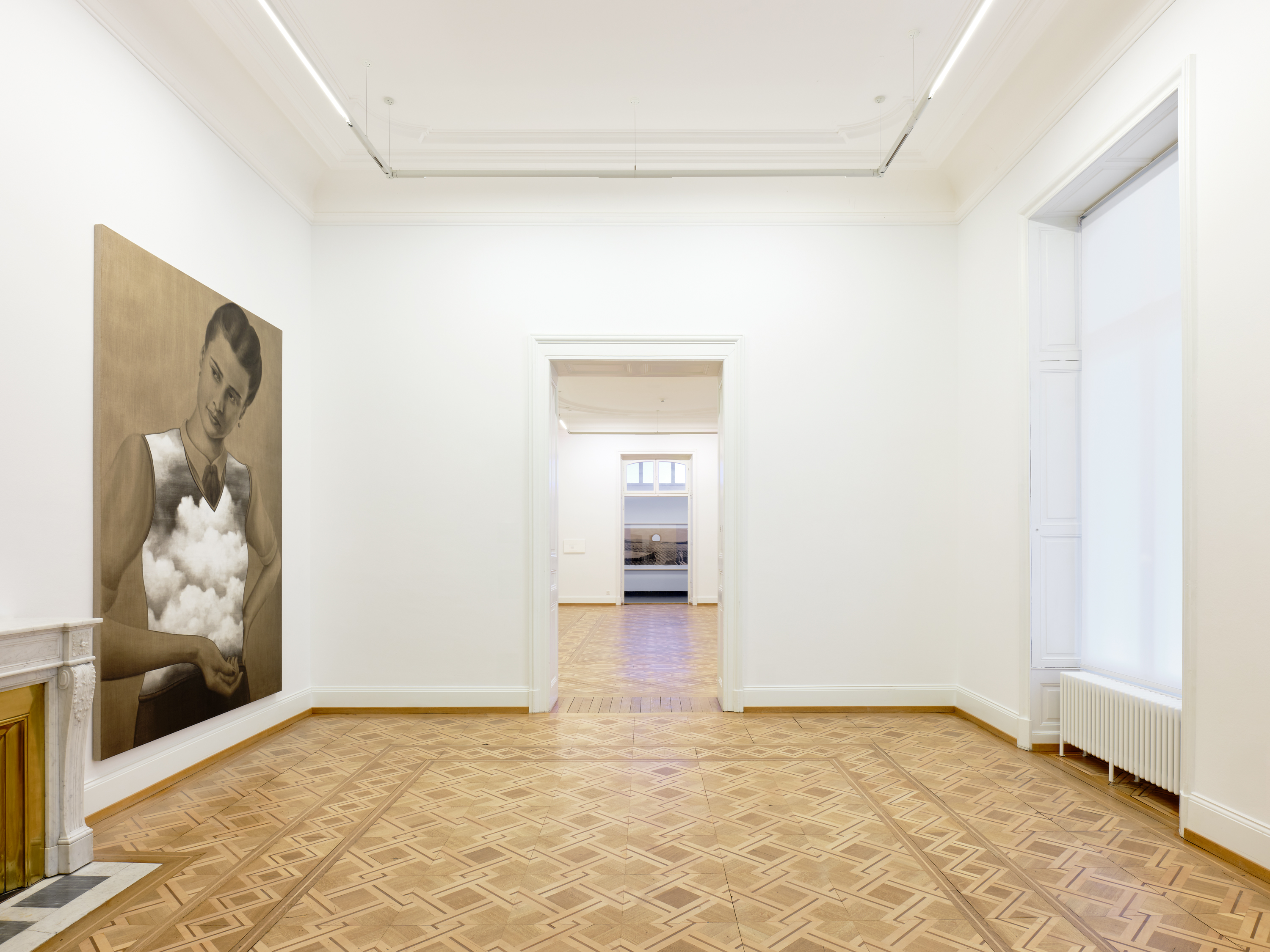

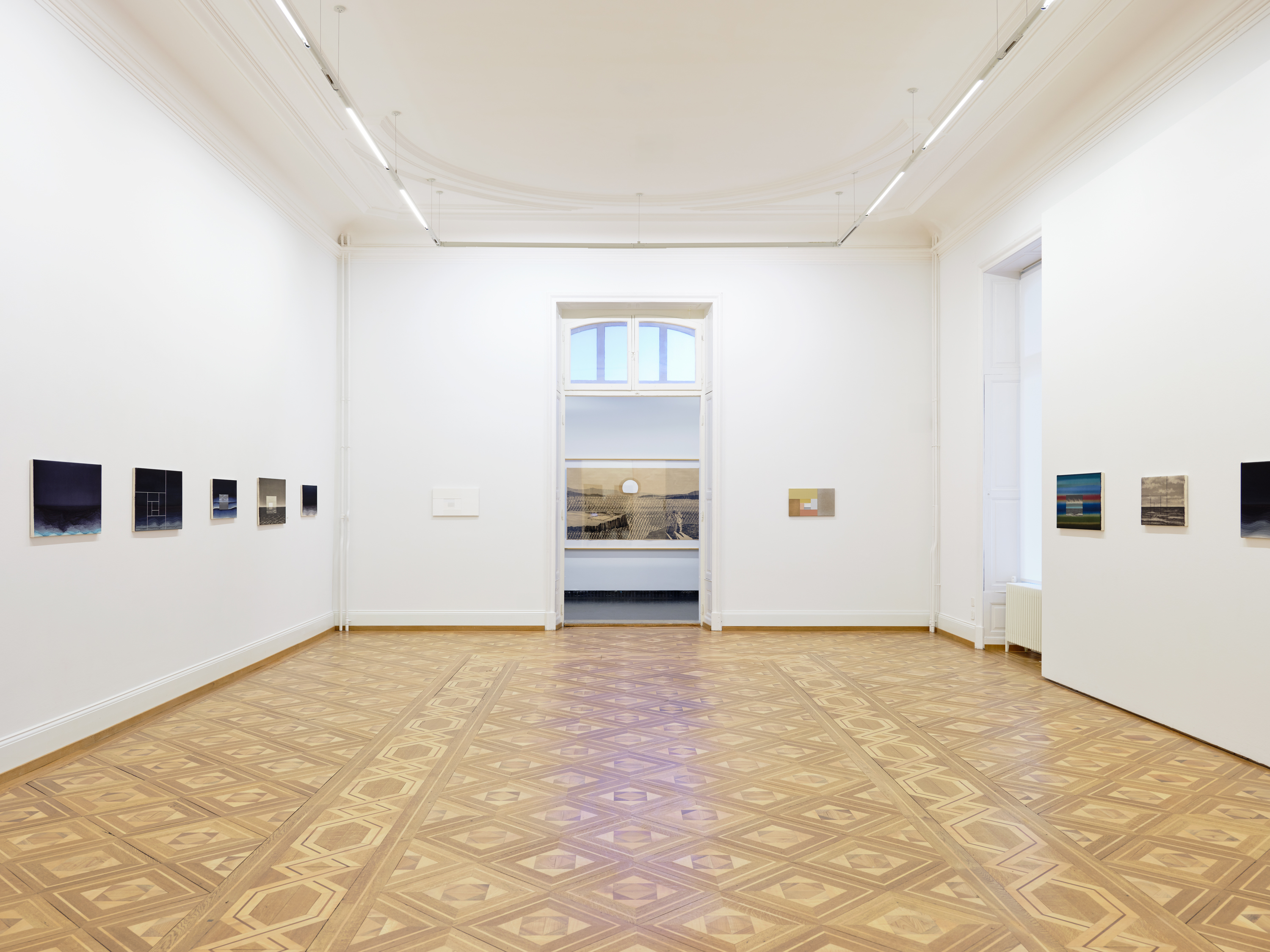
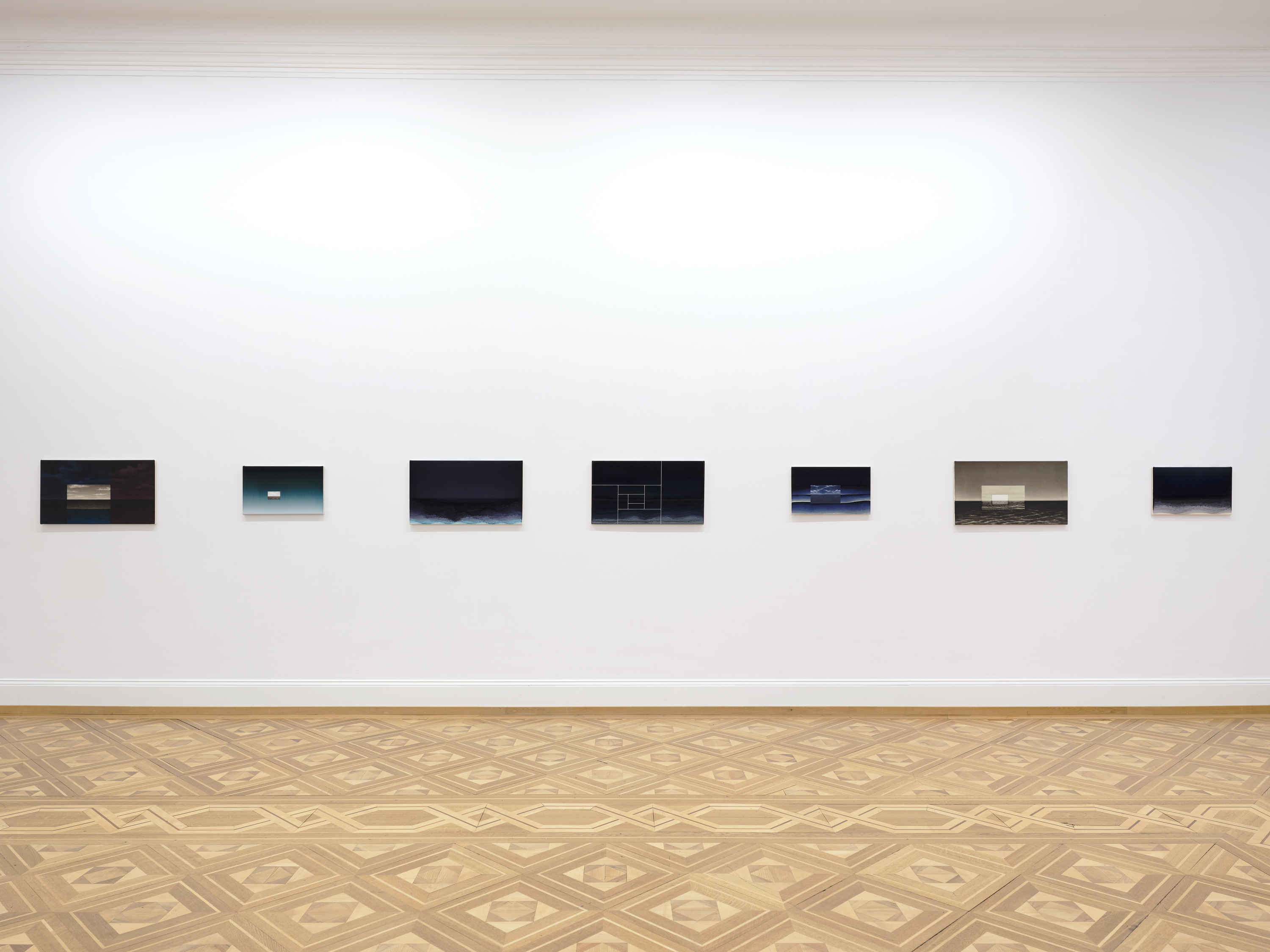
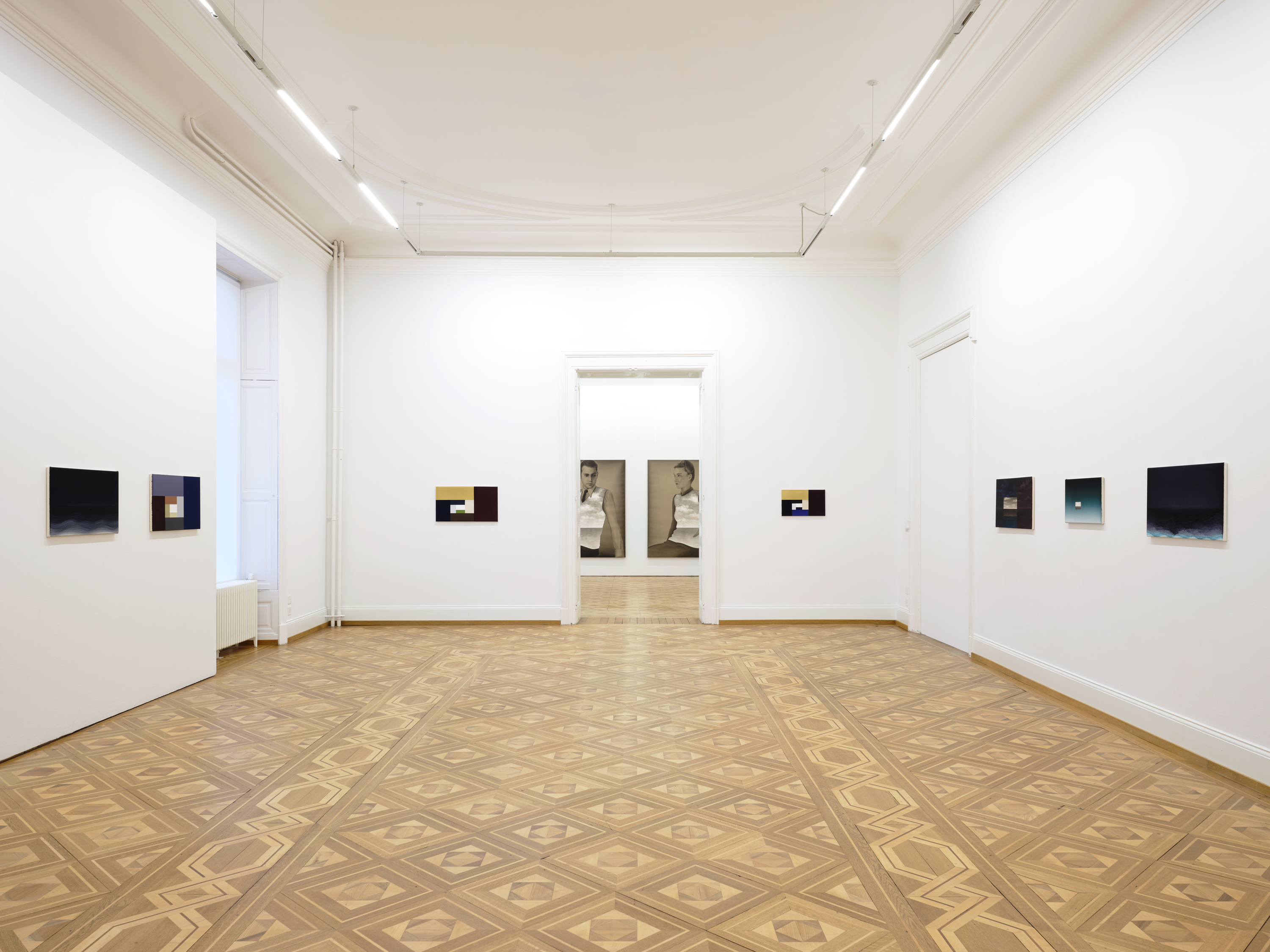
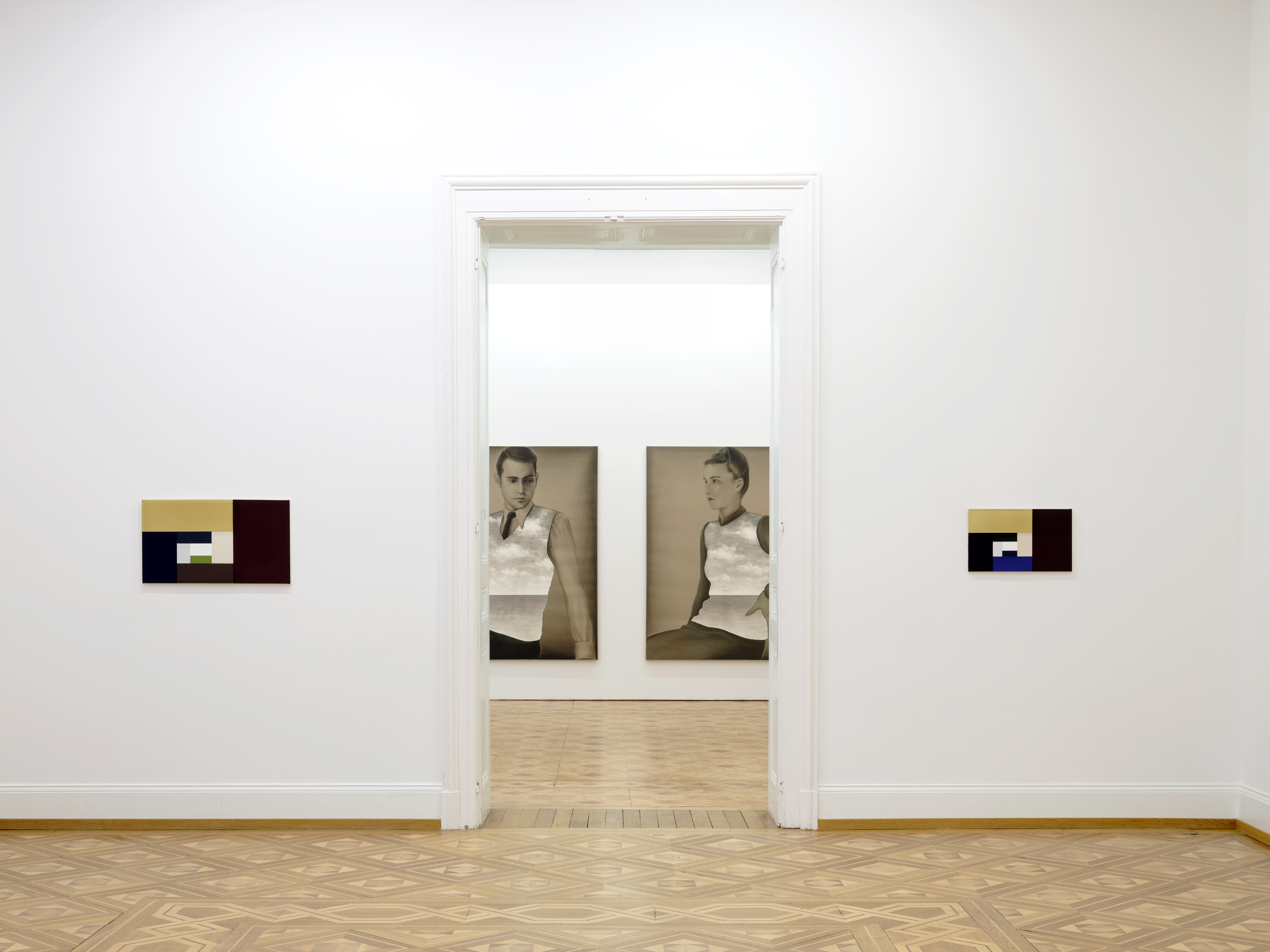

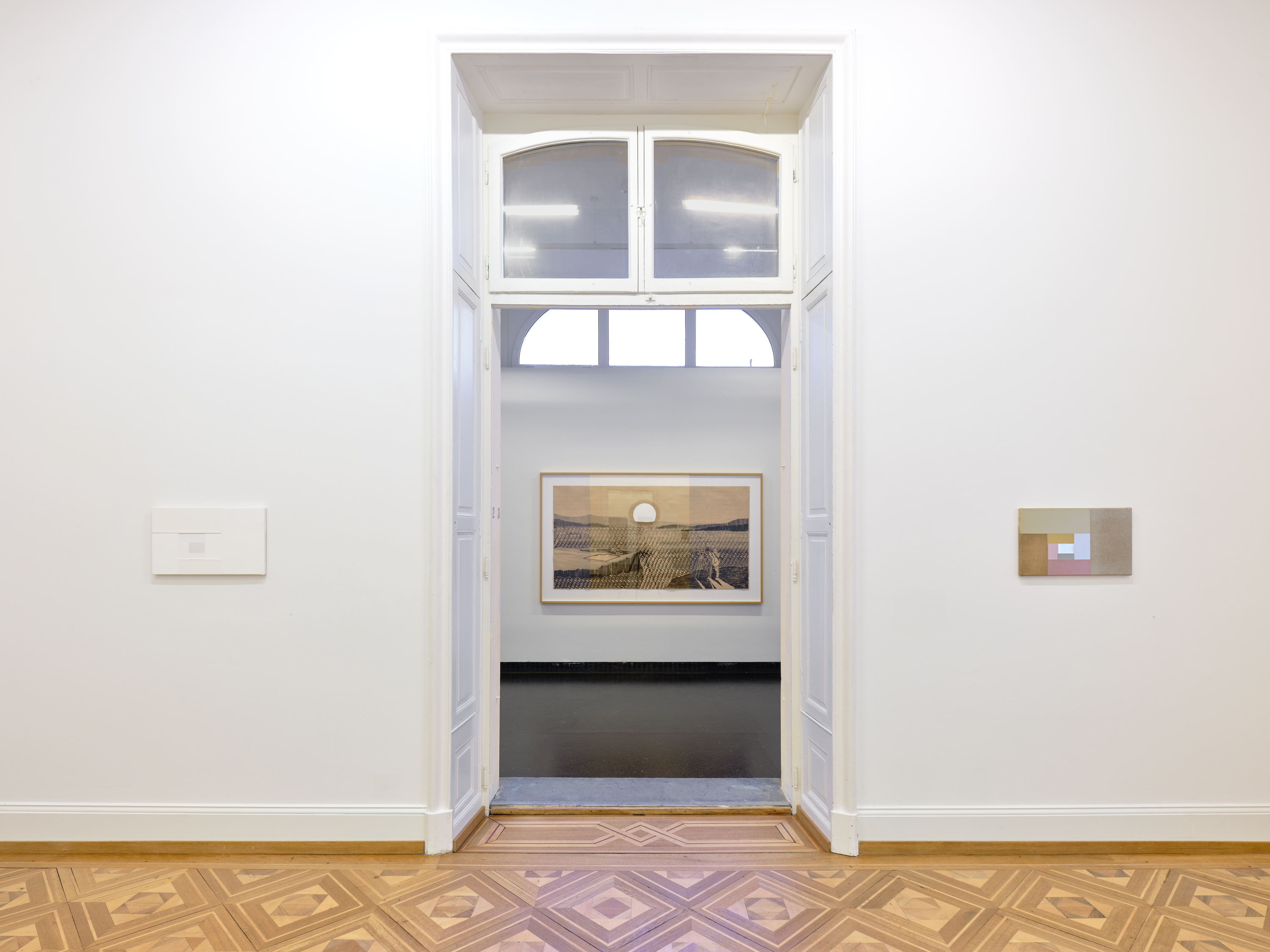
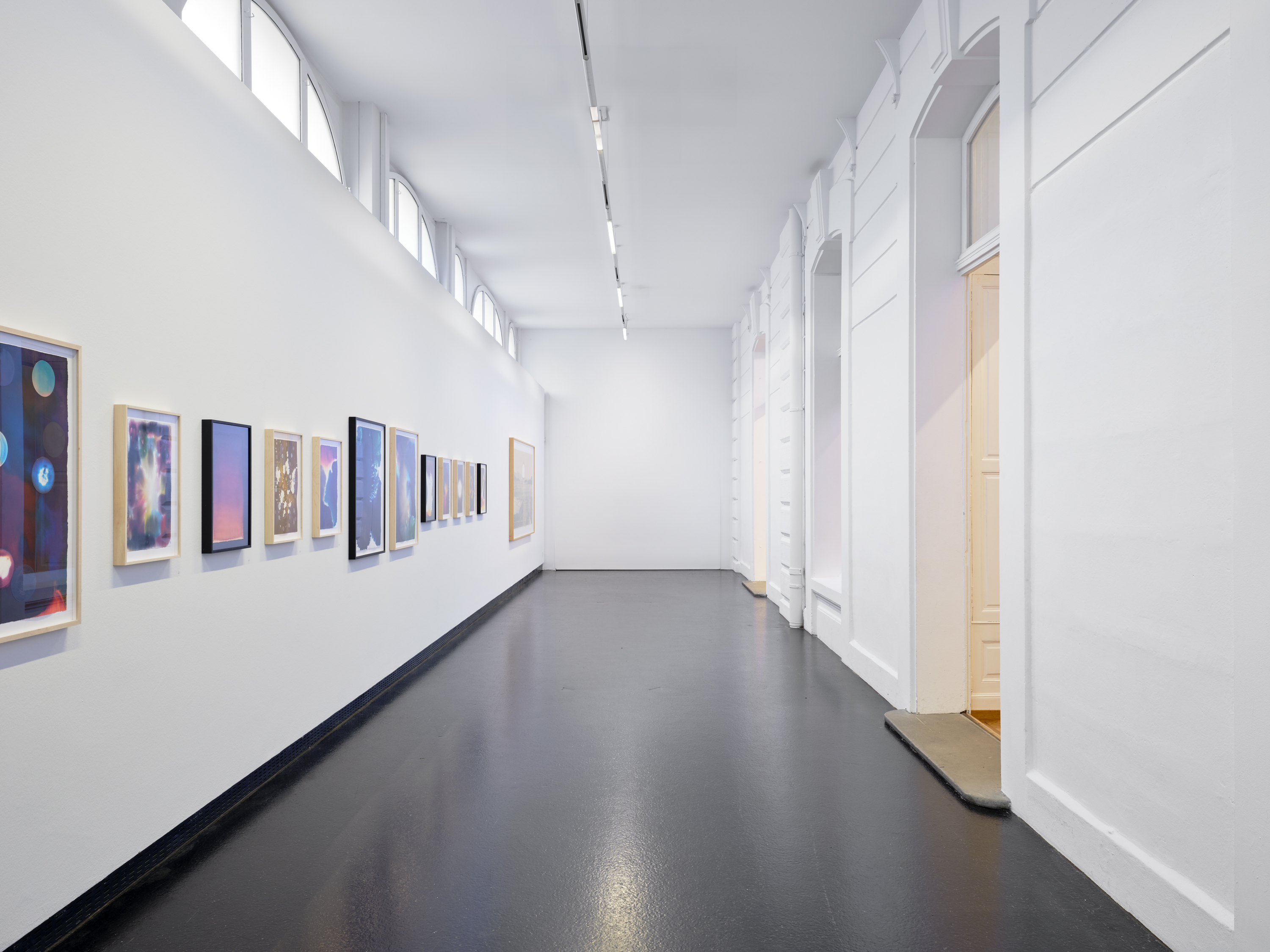


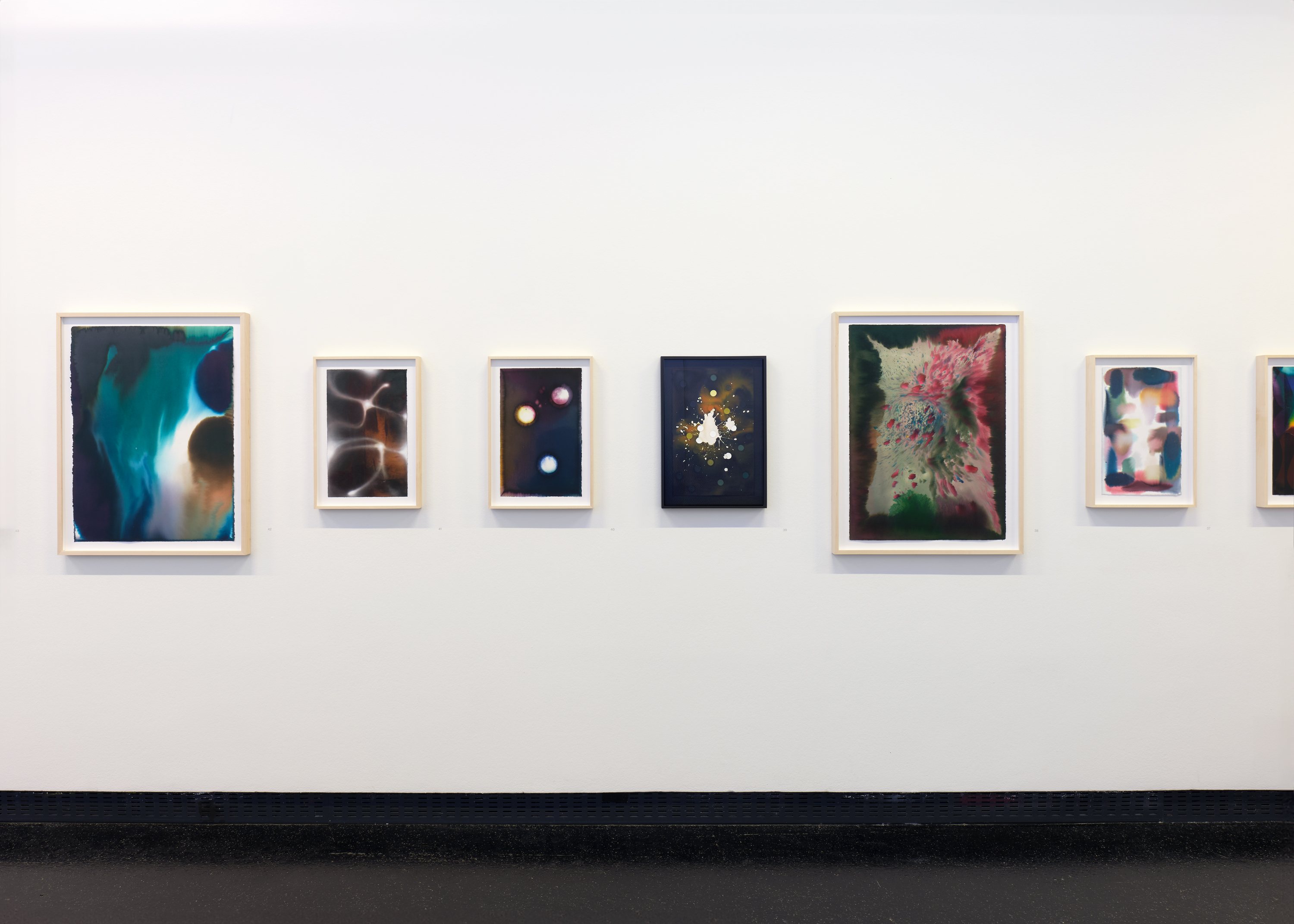
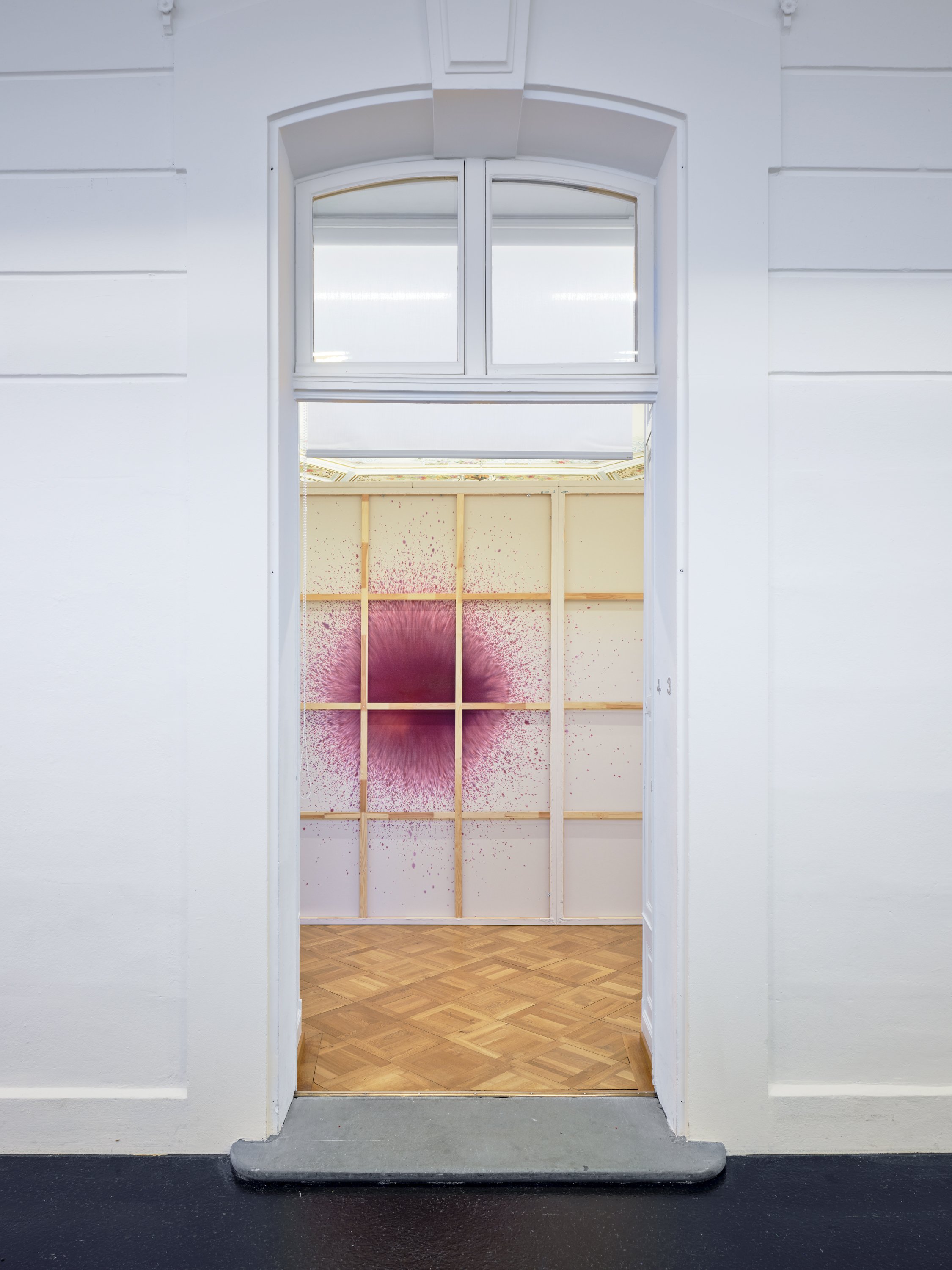
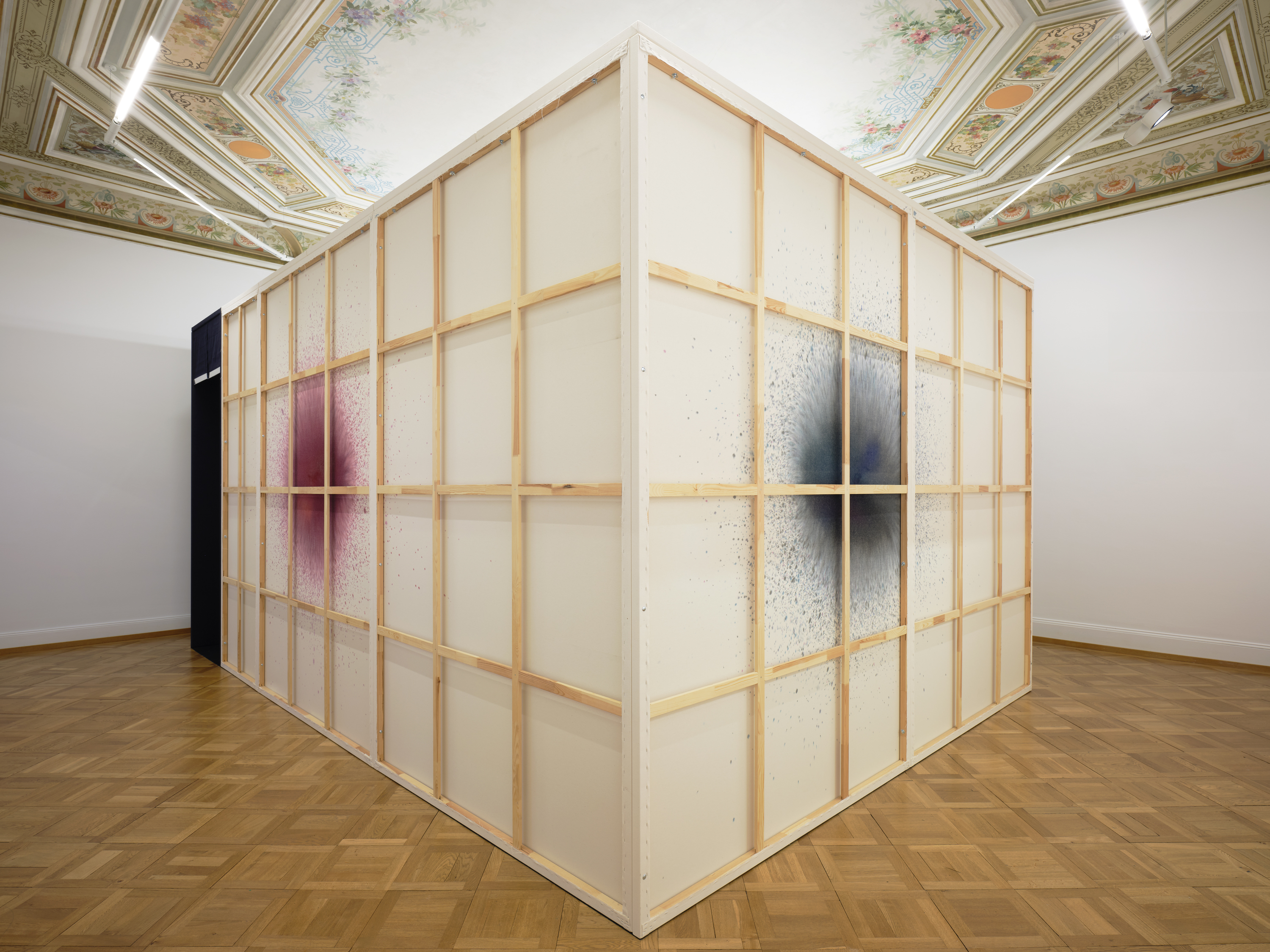
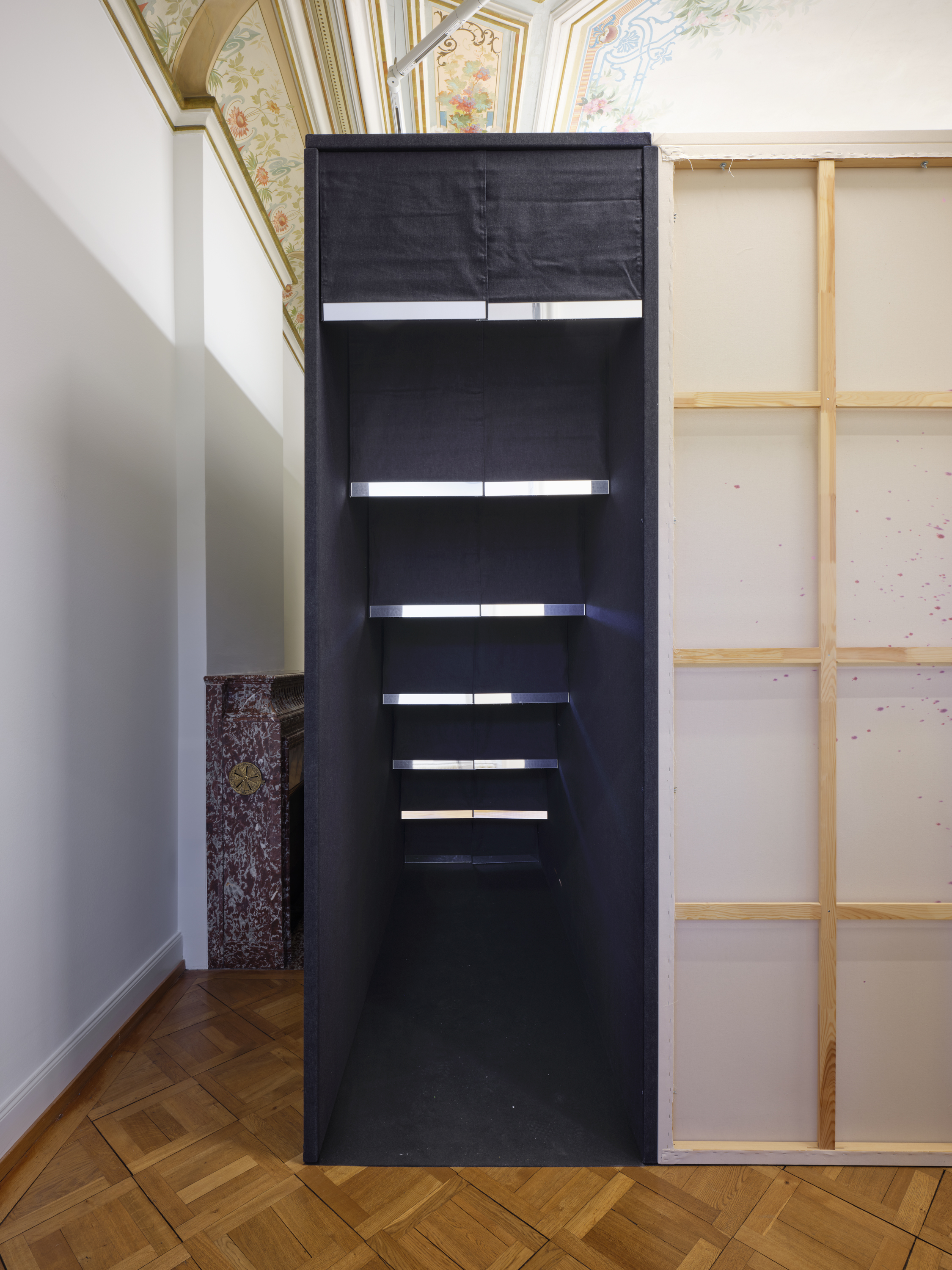




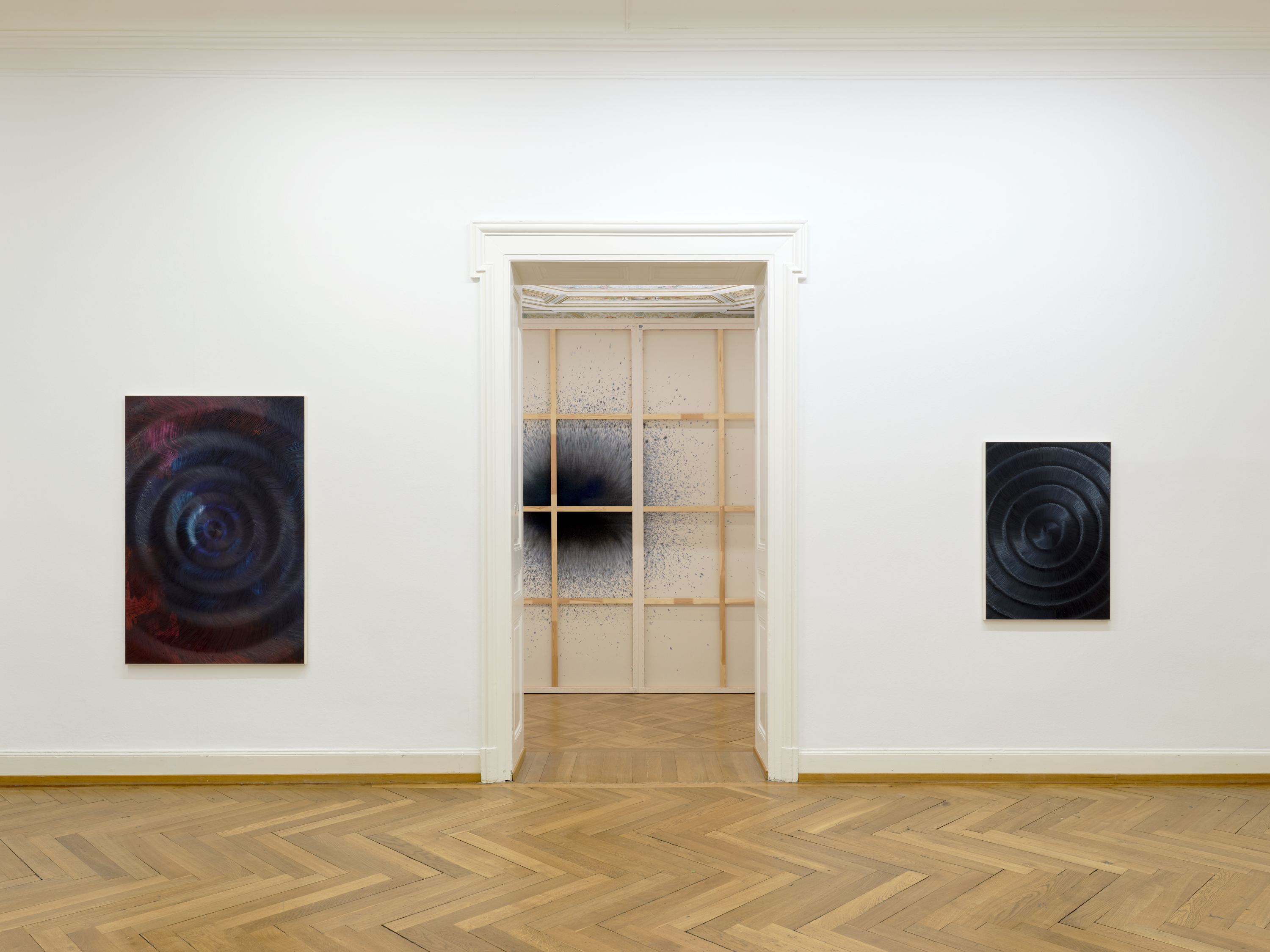
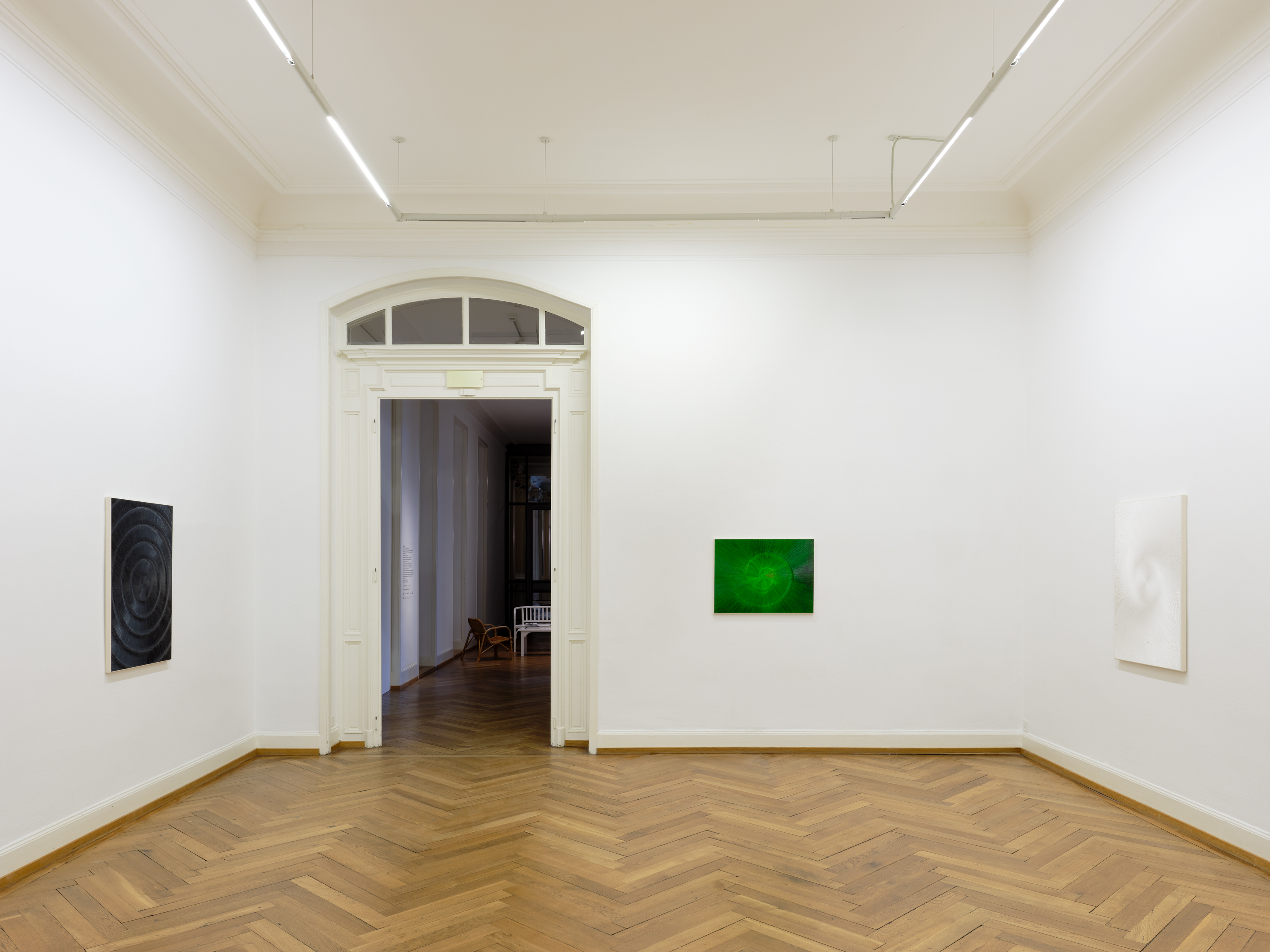
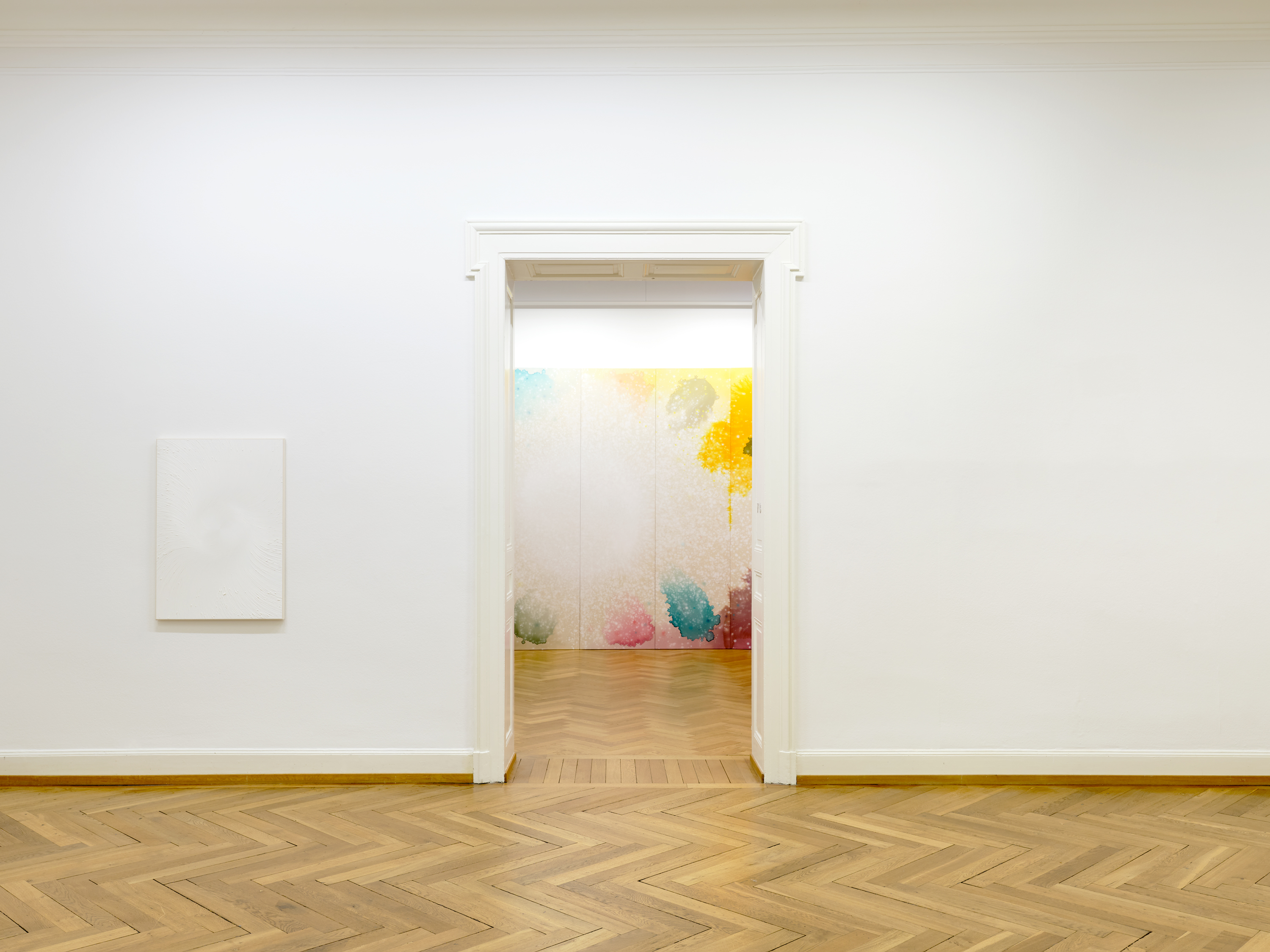
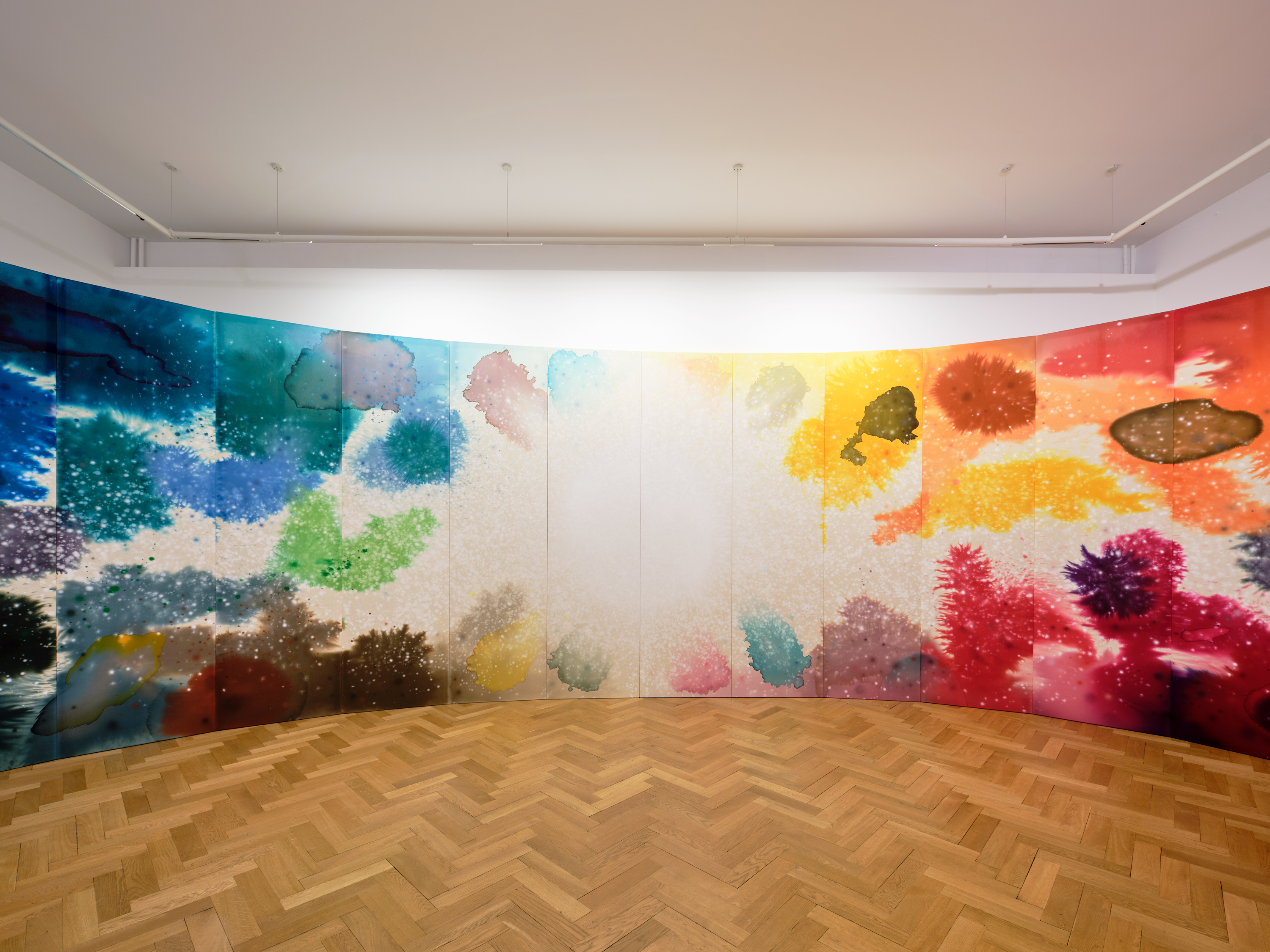

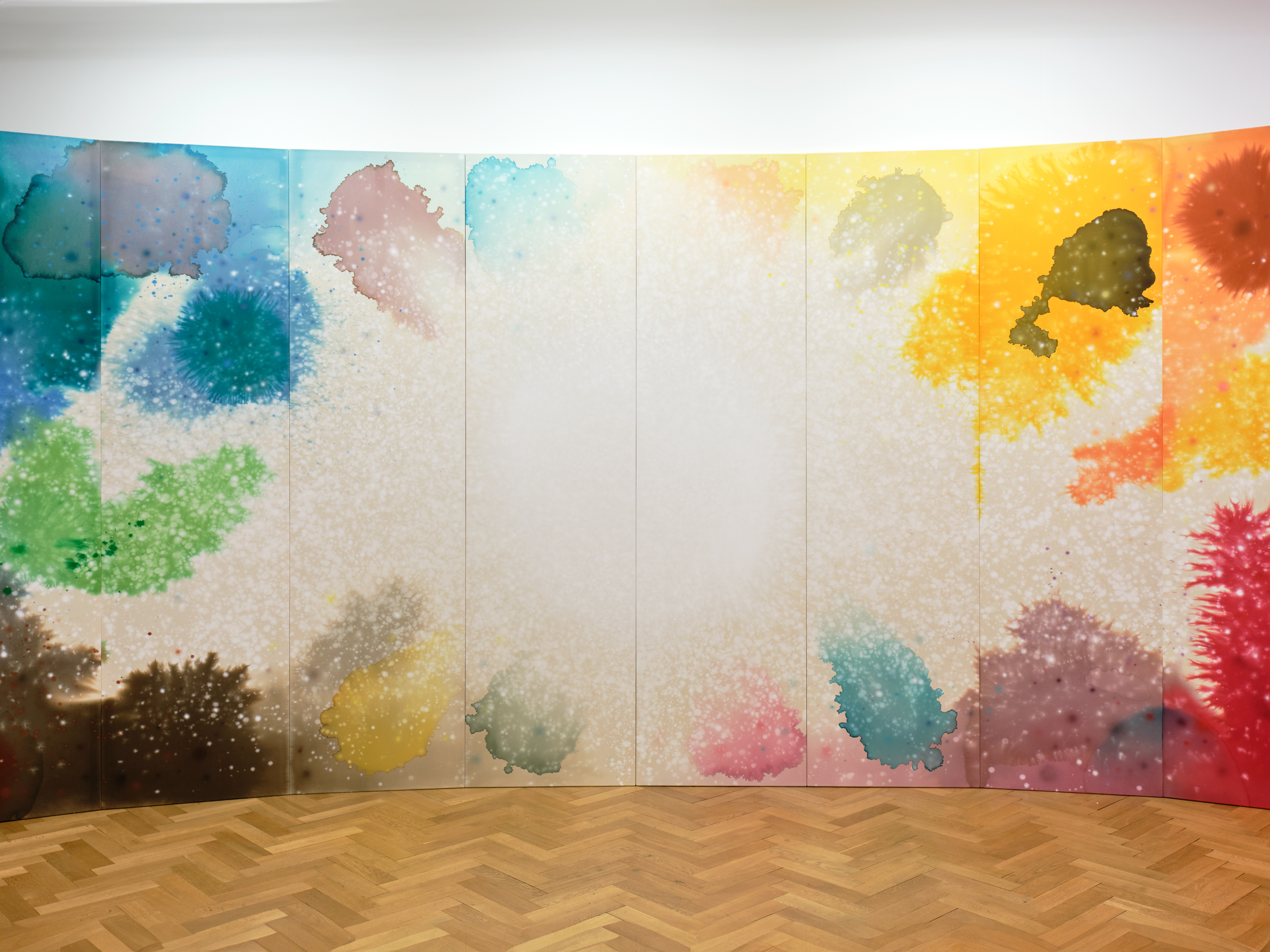
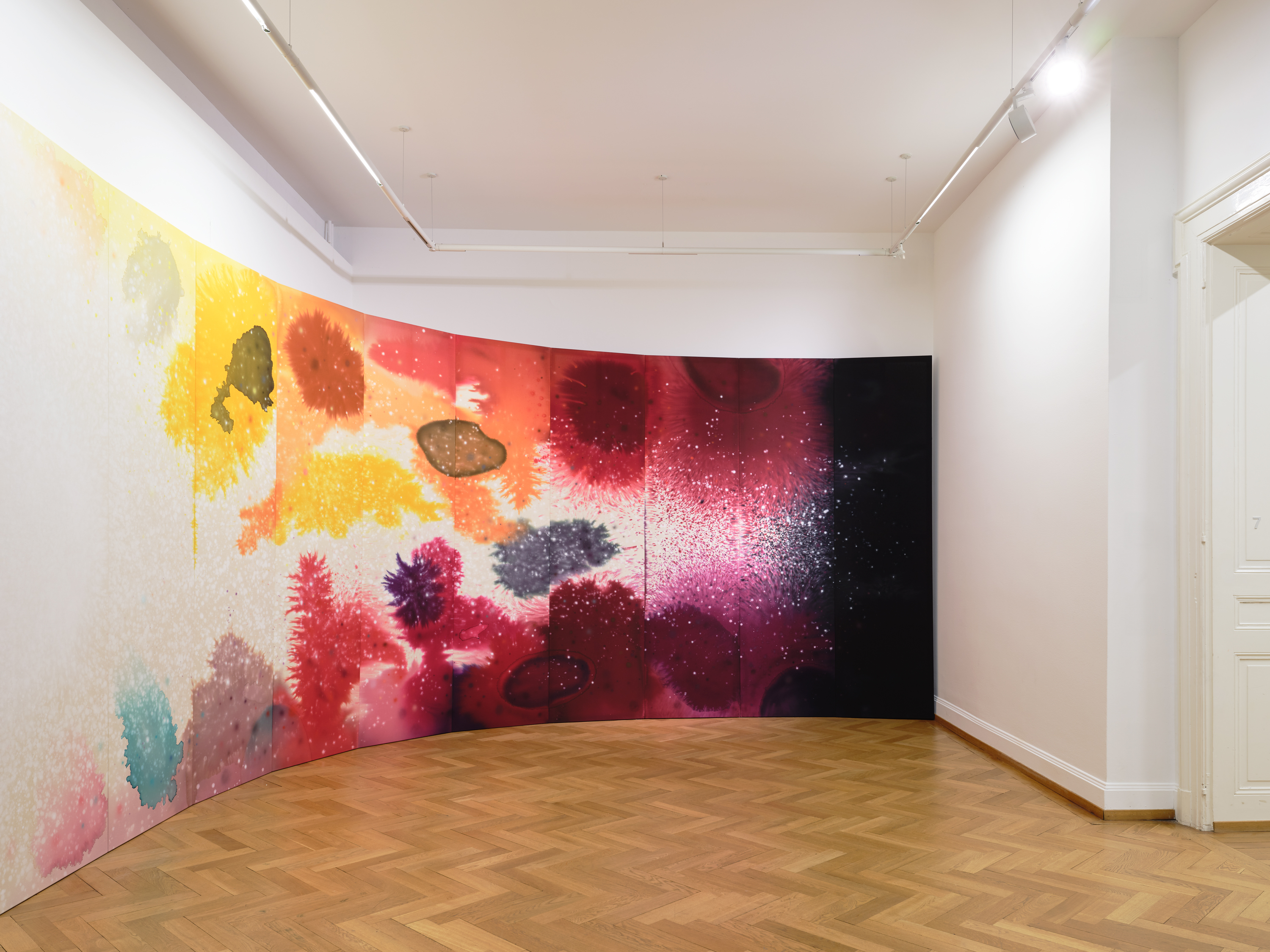
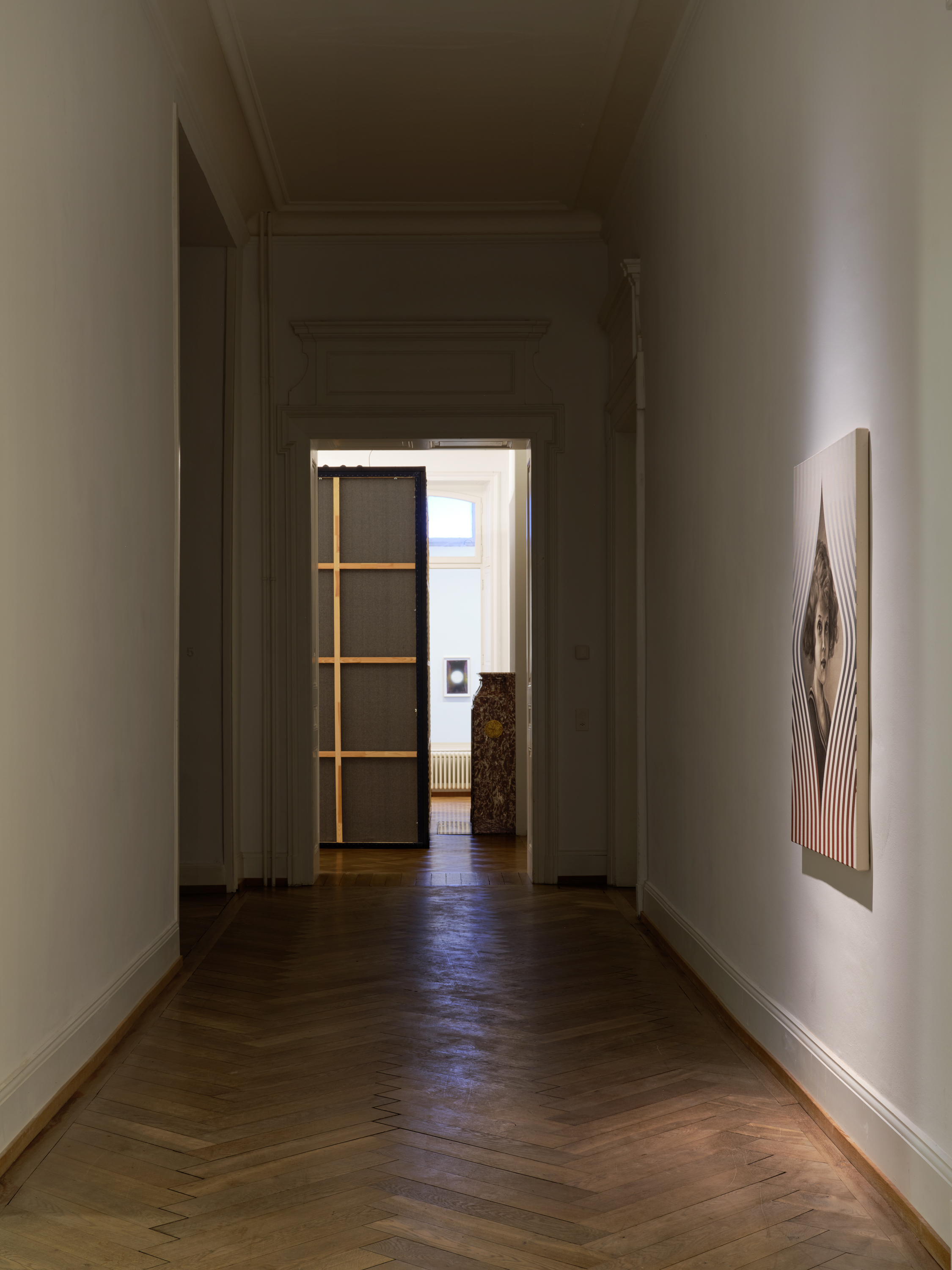
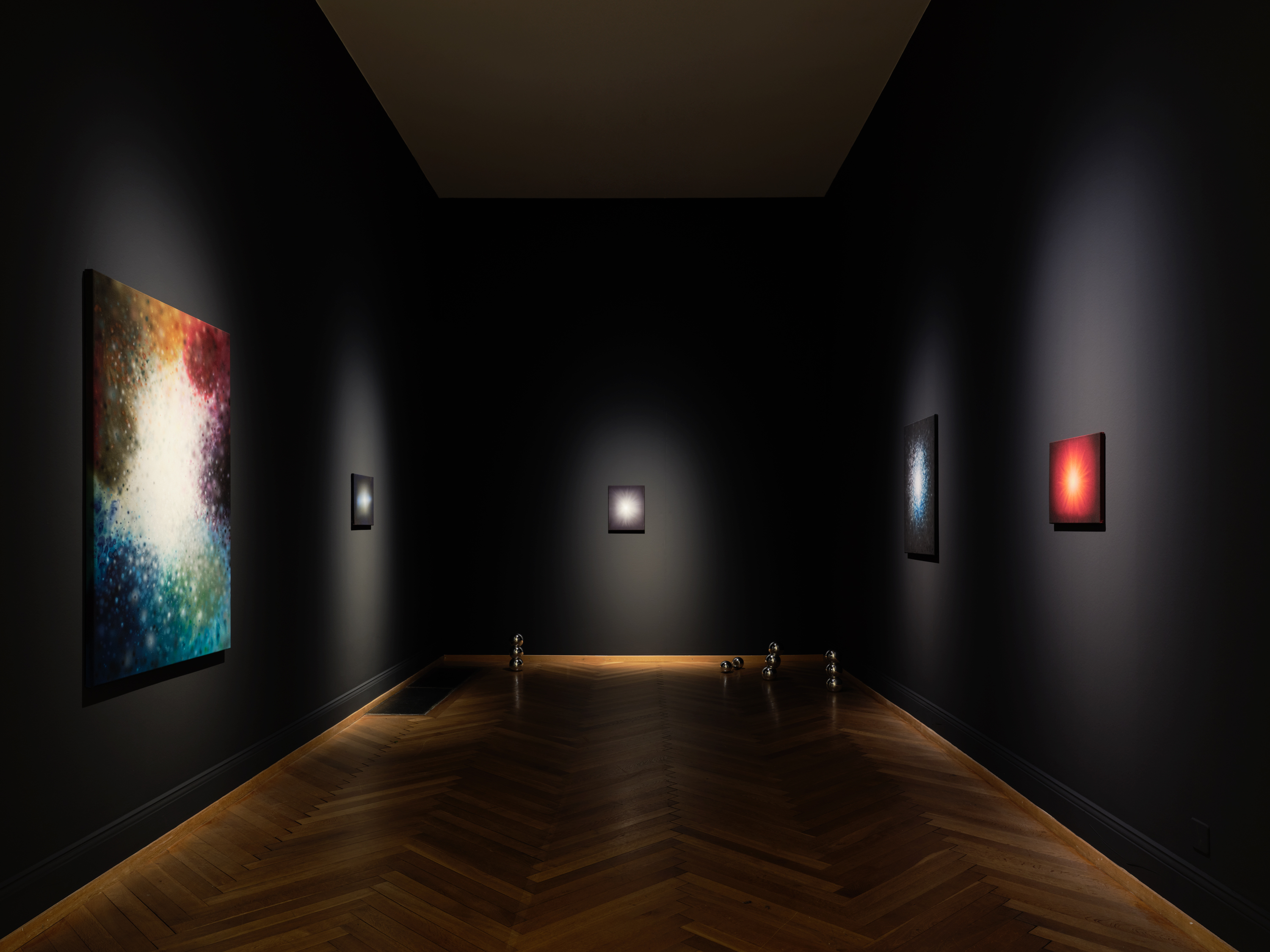
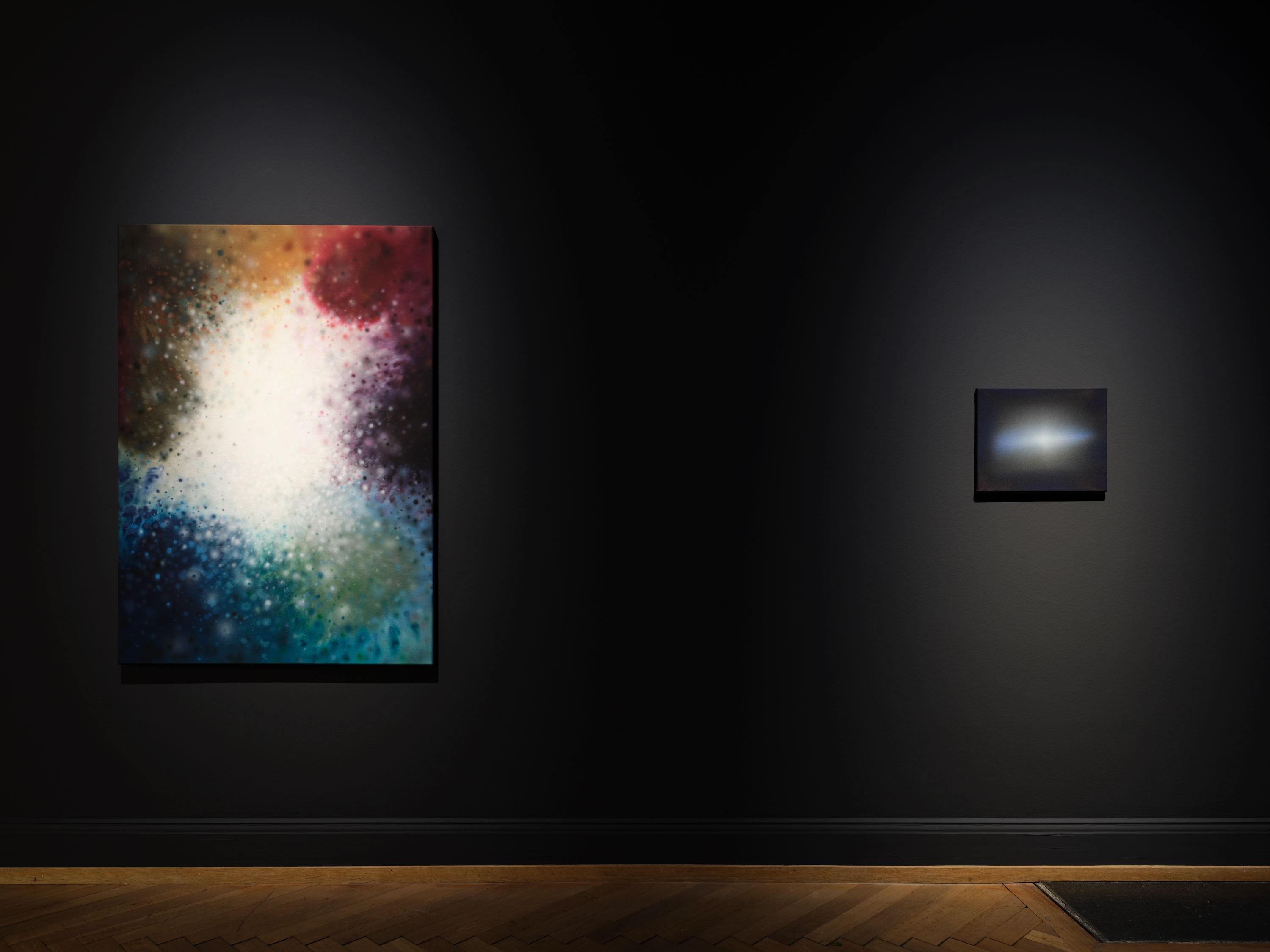
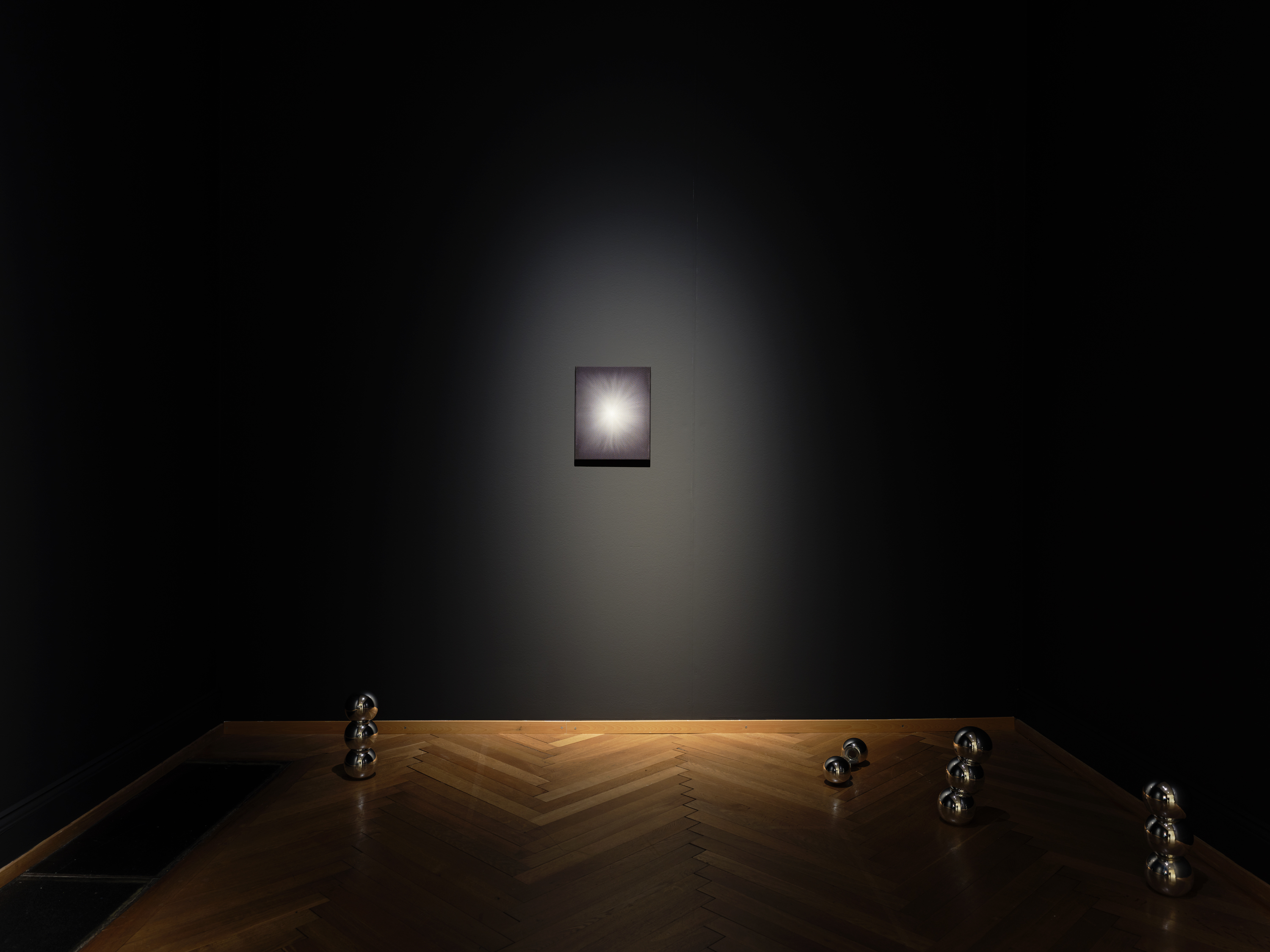

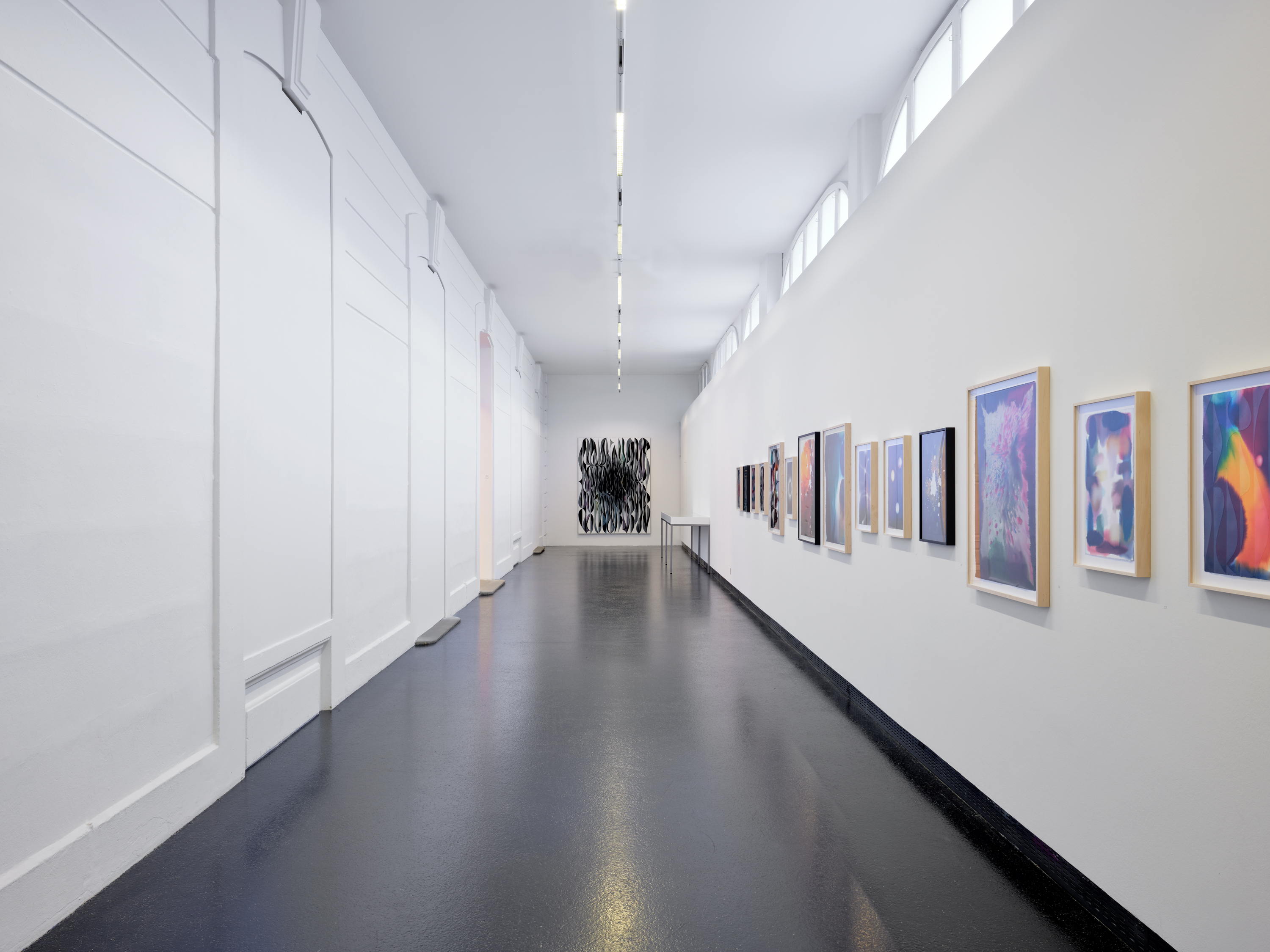
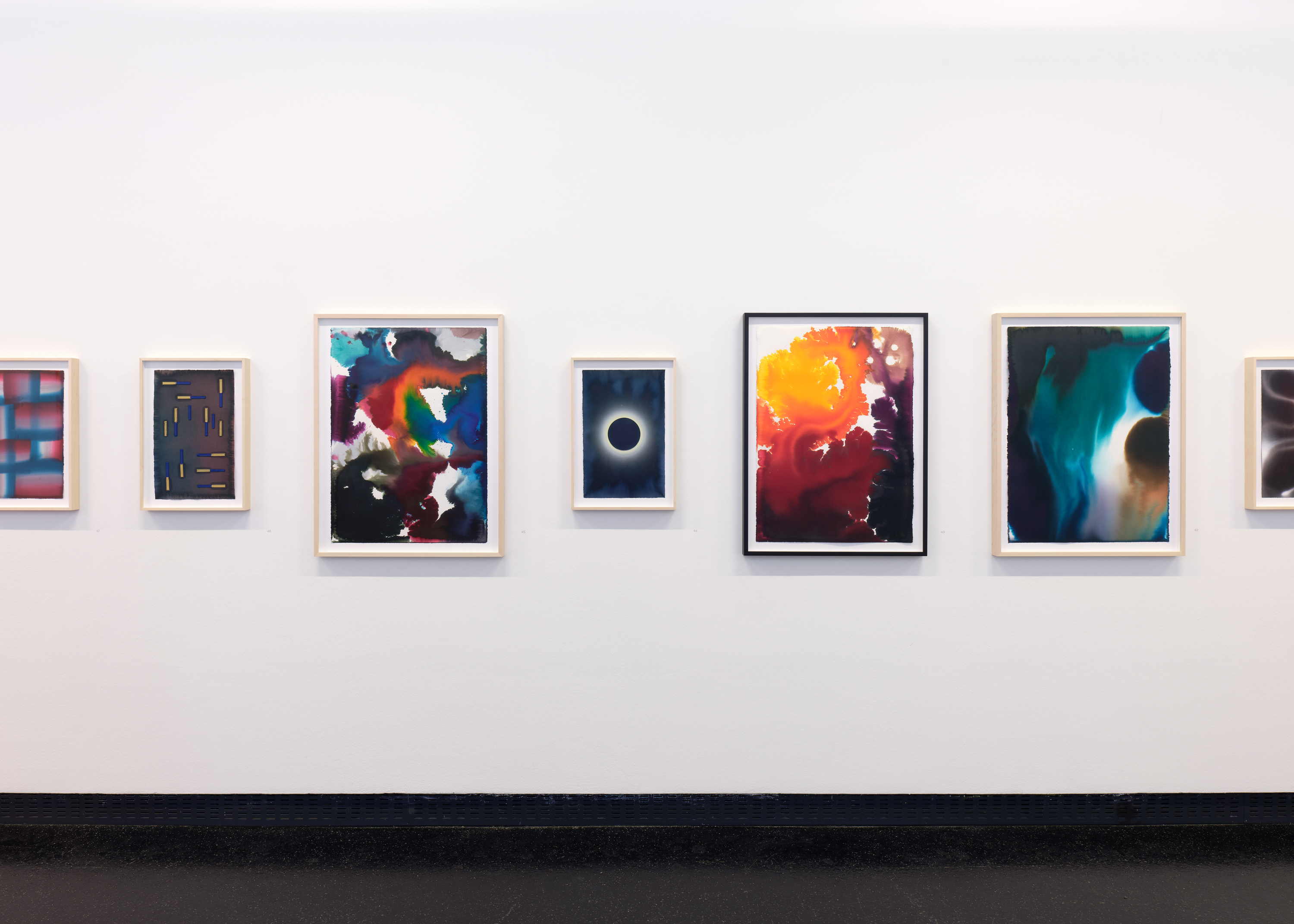

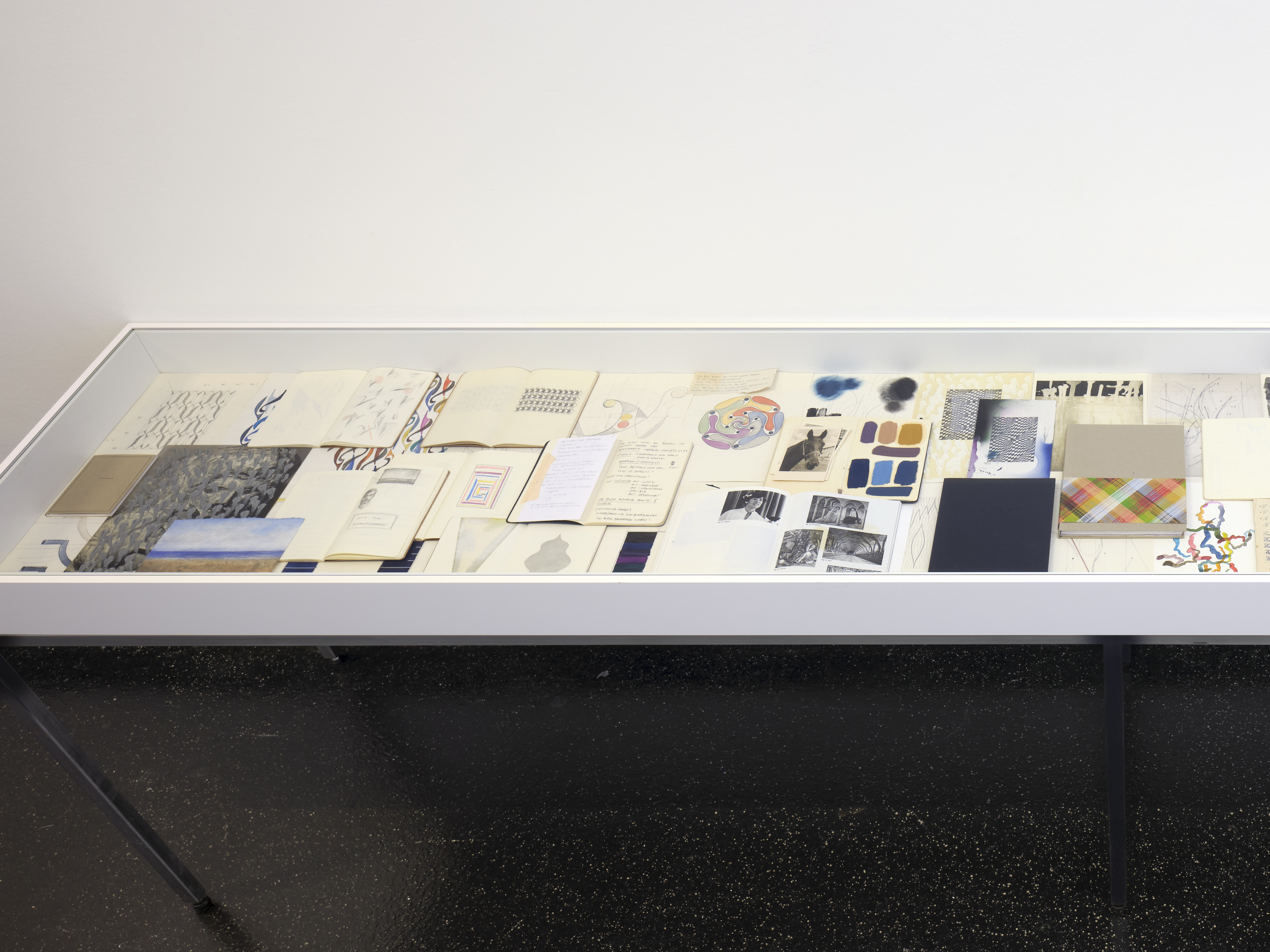

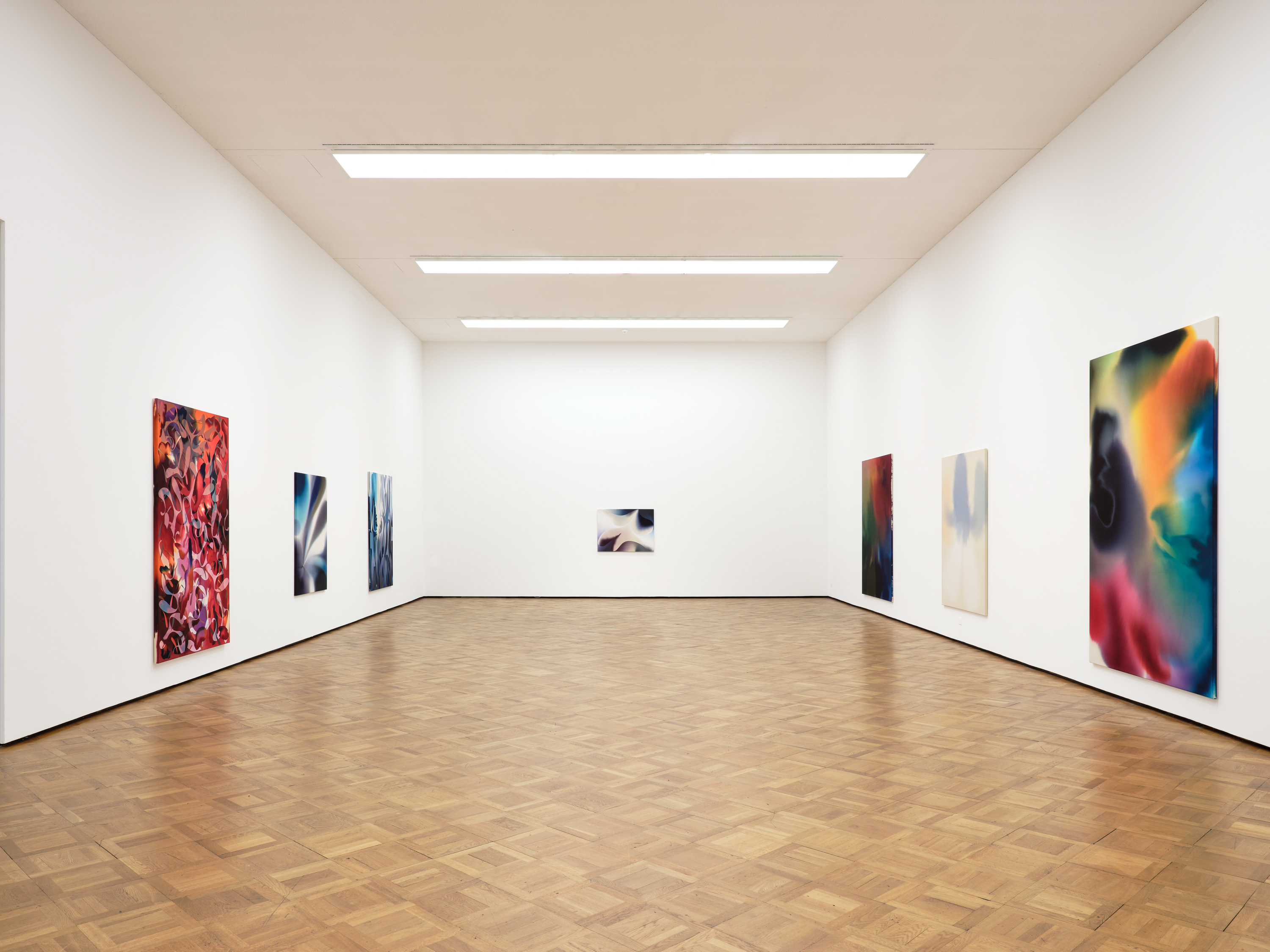
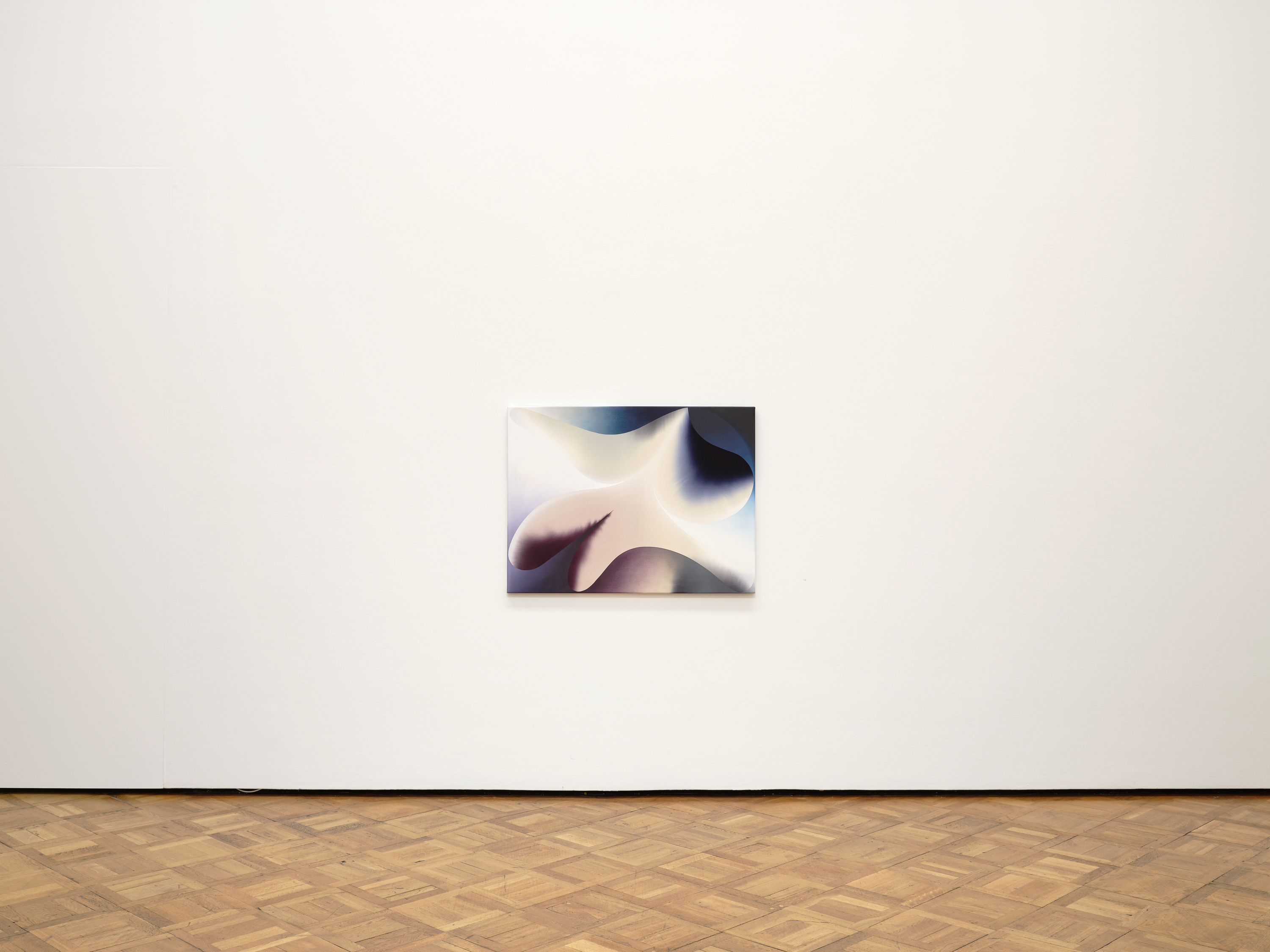
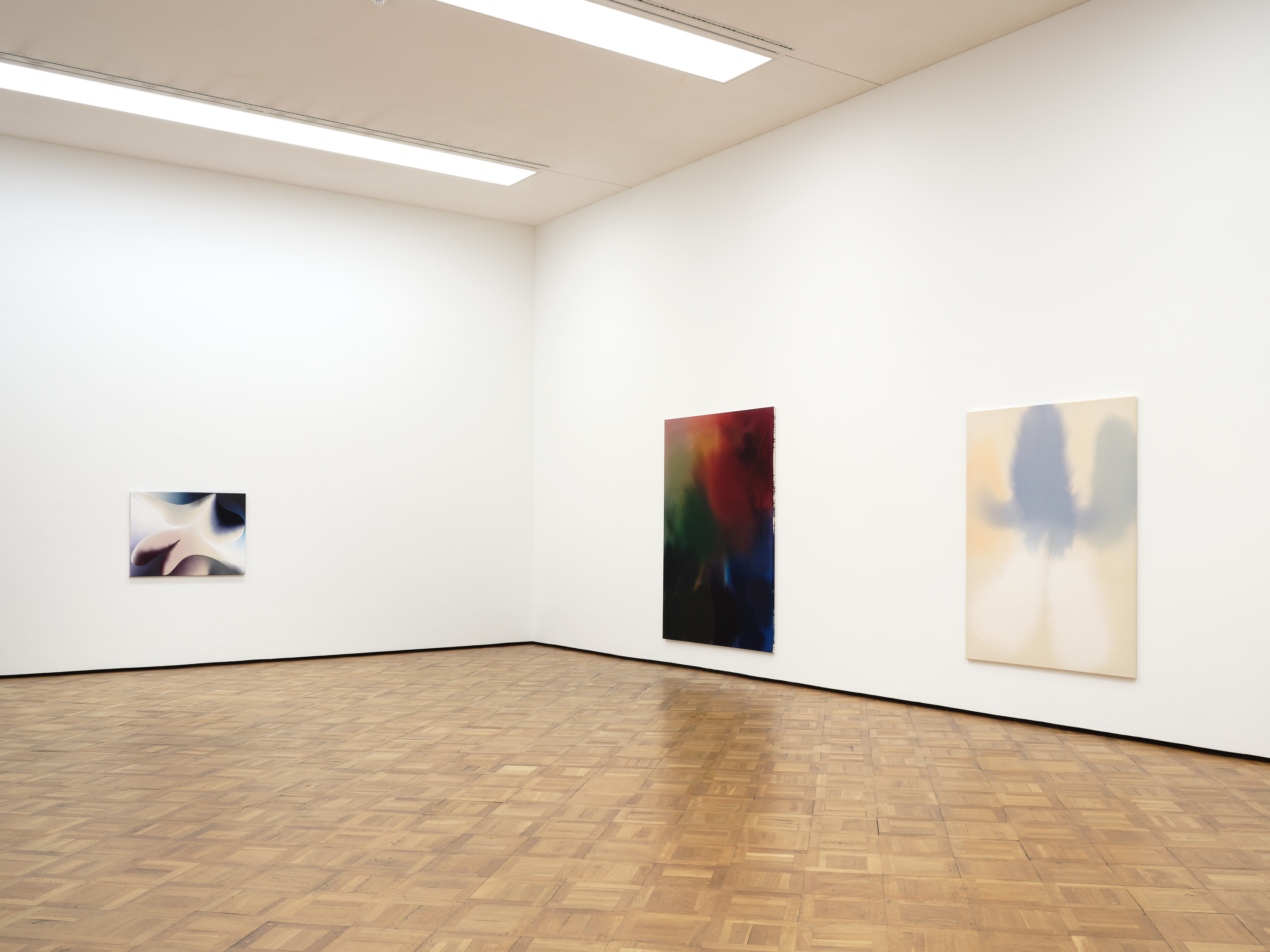
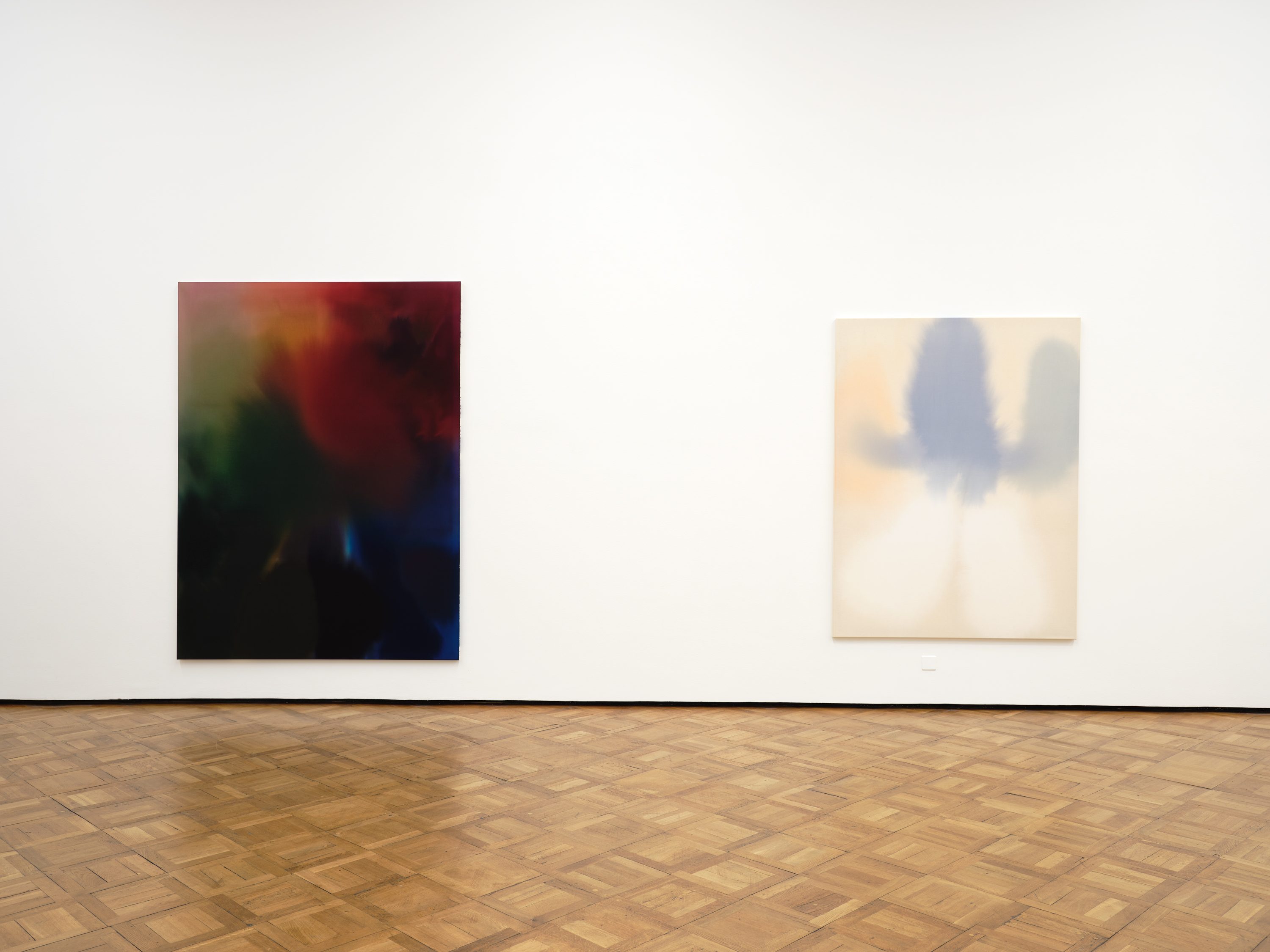

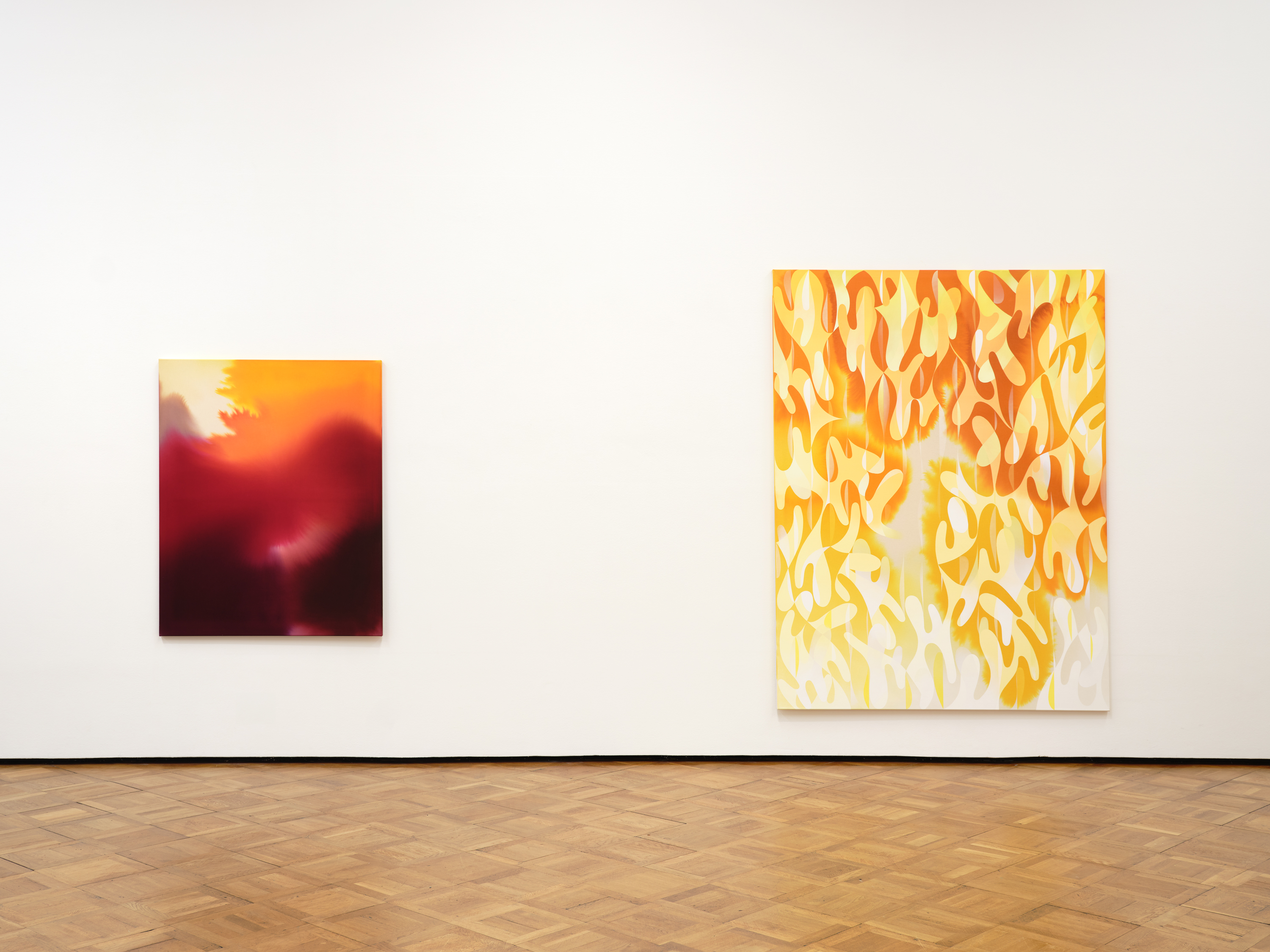

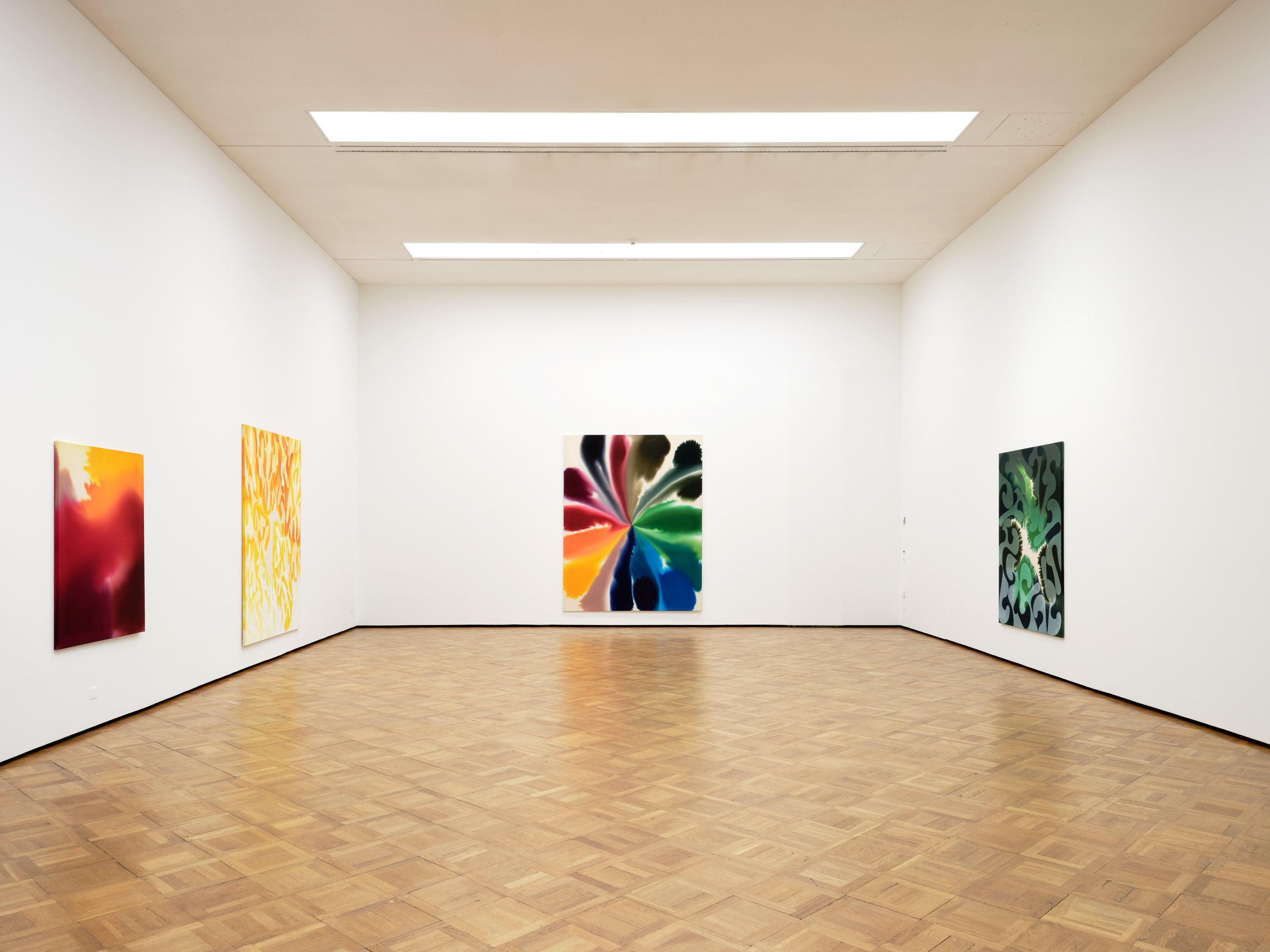


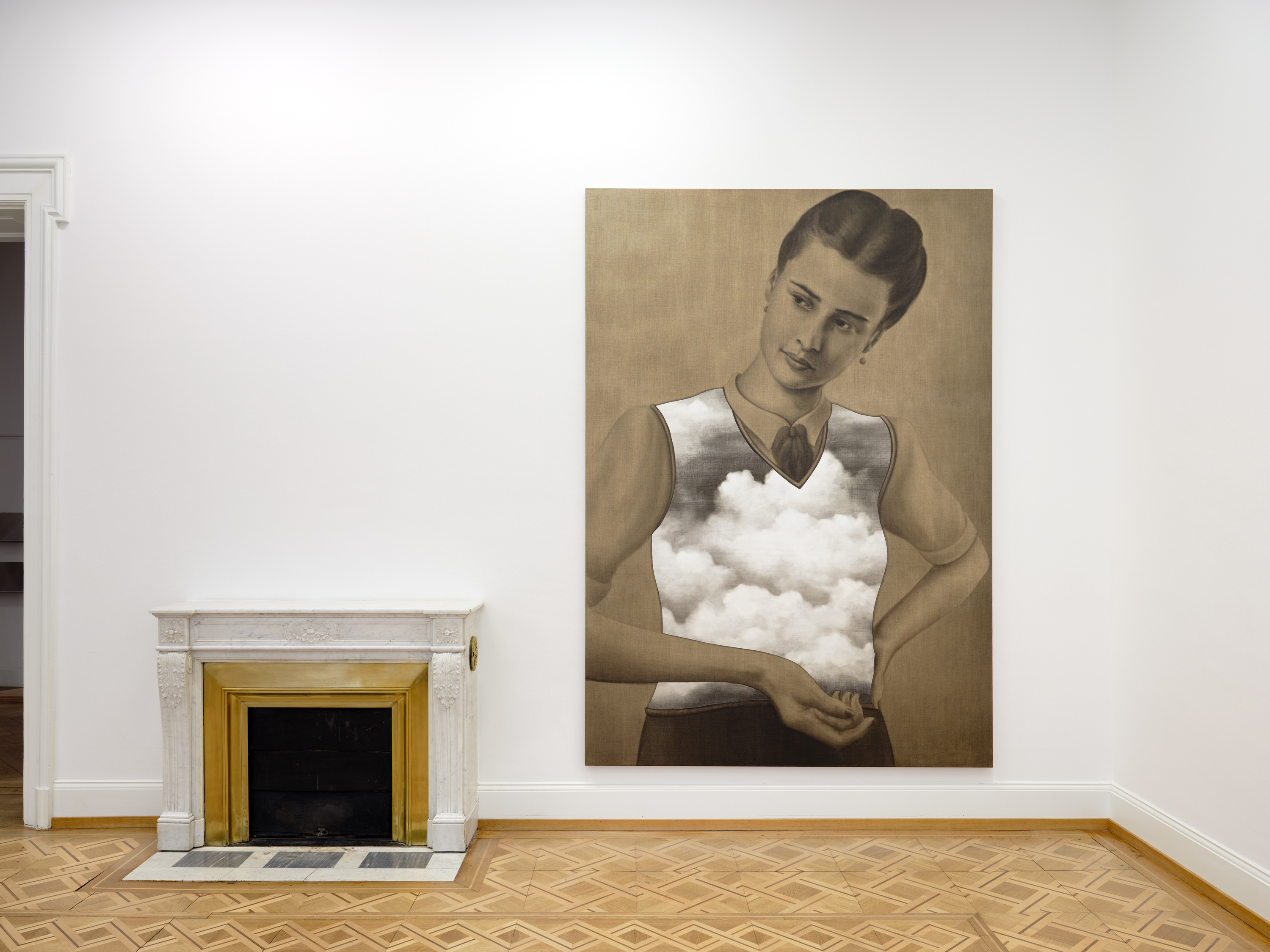
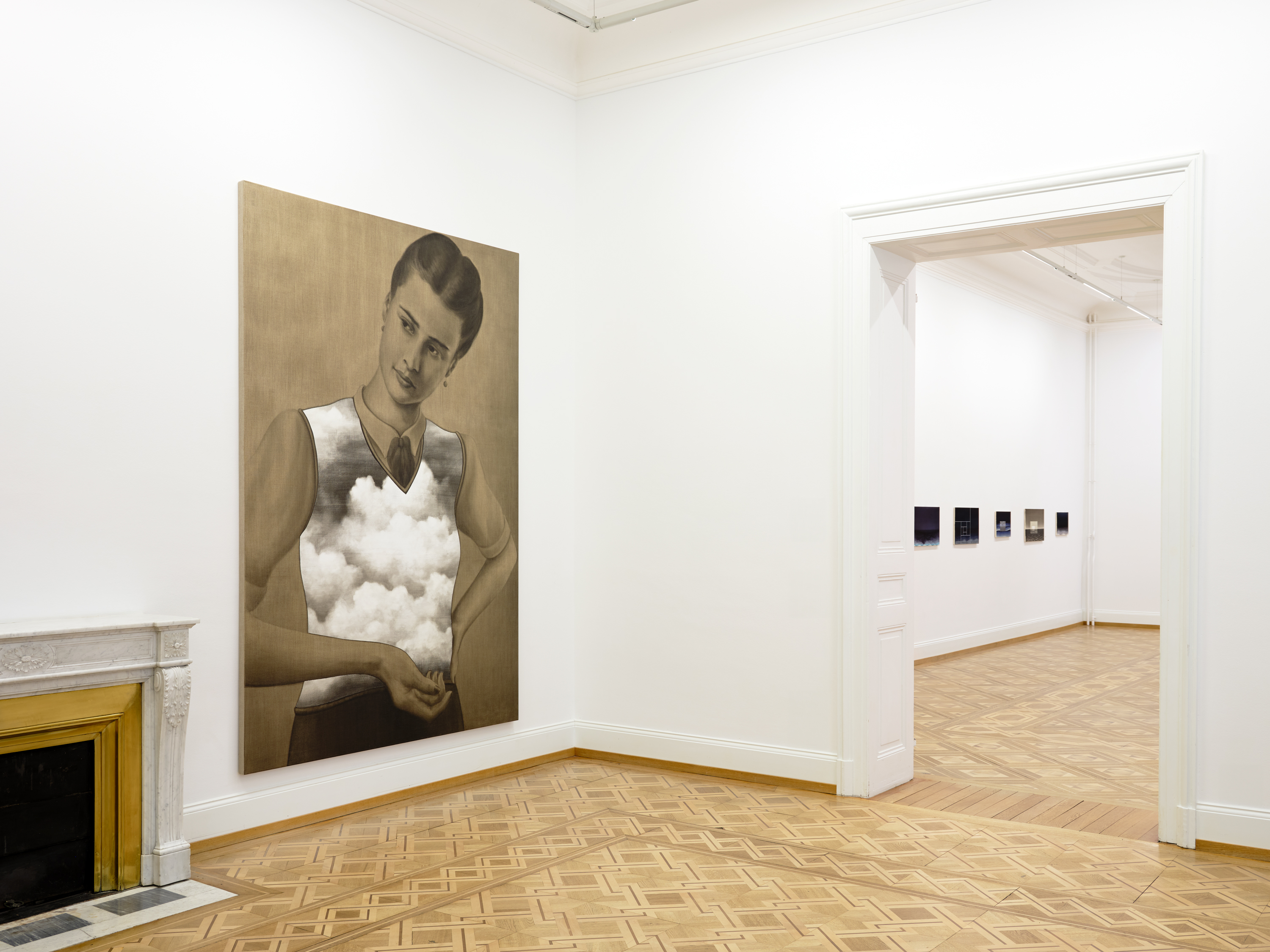
Giacomo Santiago Rogado explores in his paintings, works on paper and spatial installations both human perception itself and the history of artistic and non-artistic images. Using various techniques and materials, many of which have a long tra- dition, he probes the possibilities, limits and conditions of contemporary painting. Since the mid-2000s, Rogado has produced an extensive and extremely diverse oeuvre. He primarily devotes himself to developing series over an extended period of time, taking up the same leitmotifs, themes or processes again and again, which he var- ies and continually places in new contexts. For this reason, Rogado’s oeuvre exhibits great consistency and stringen- cy, without however lacking in innovative pictorial inven- tions and displays. His reflexive, circular approach can best be envisioned as a spiral that keeps leading the artist back to the same point – but always at a higher level (of development). We can therefore constantly take a fresh look back at Rogado’s earlier images from the perspective of the present, as well as perceiving his present images with hindsight from the past. This is the basic idea behind Rogado’s solo exhibition at the Kunstmuseum Thun, the very first retrospective of the artist’s work.
Rogado has brought together here nearly 80 works made between 2005 and 2024. Outstanding key works are shown alongside new pieces produced especially for the show. Although the exhibition is conceived more or less chrono- logically, the artist also reacts directly to the architectural challenges and conditions of the surrounding space. For him, it is not only the careful composition of the individu- al works that counts but also their arrangement and place- ment in the space and within an exhibition choreography.
Rogado is the first artist in the history of the museum to simultaneously show works at both locations, the Thunerhof and the Thun Panorama, covering an area of over 1,000 square metres. ALL THAT YOU SEE at the Thunerhof pre- sents paintings, works on paper and installations from recent years and decades, while the exhibition AUSSER SICHT (Out of Sight, 11 May – 1 December 2024) in the glazed extension to the Thun Panorama features a new site-specific spatial installation that makes reference to both Schadaupark out- side and Marquard Wocher’s circular painting inside.
Cornelius Krell
Rogado is the first artist in the history of the museum to simultaneously show works at both locations, the Thunerhof and the Thun Panorama, covering an area of over 1,000 square metres. ALL THAT YOU SEE at the Thunerhof pre- sents paintings, works on paper and installations from recent years and decades, while the exhibition AUSSER SICHT (Out of Sight, 11 May – 1 December 2024) in the glazed extension to the Thun Panorama features a new site-specific spatial installation that makes reference to both Schadaupark out- side and Marquard Wocher’s circular painting inside.
Cornelius Krell
2023
Concerto Finale, Regionale
Group show
Kunsthaus Baselland
Kunsthaus Baselland
Nov 26 – Jan 8, 2024
Basel
Basel
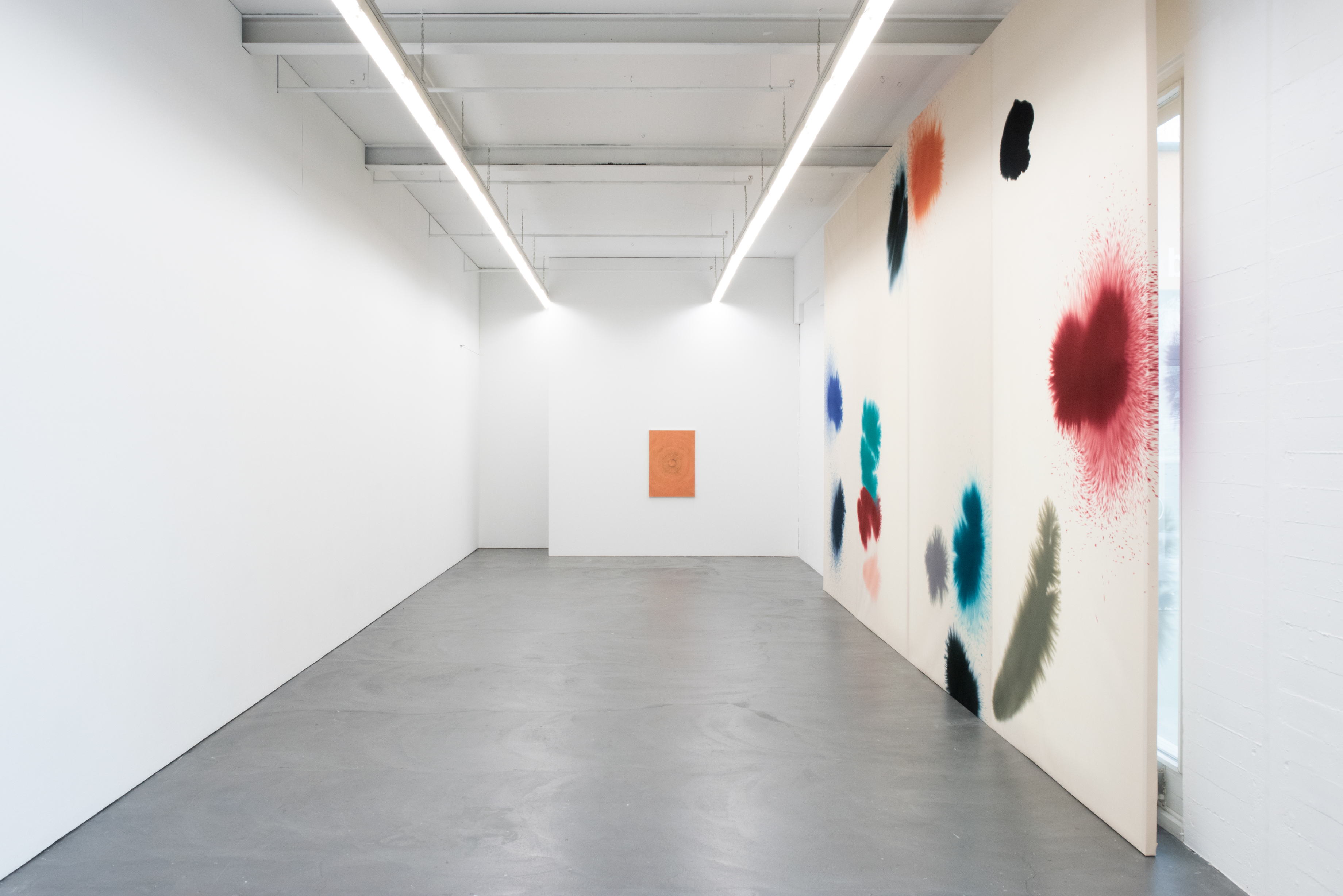

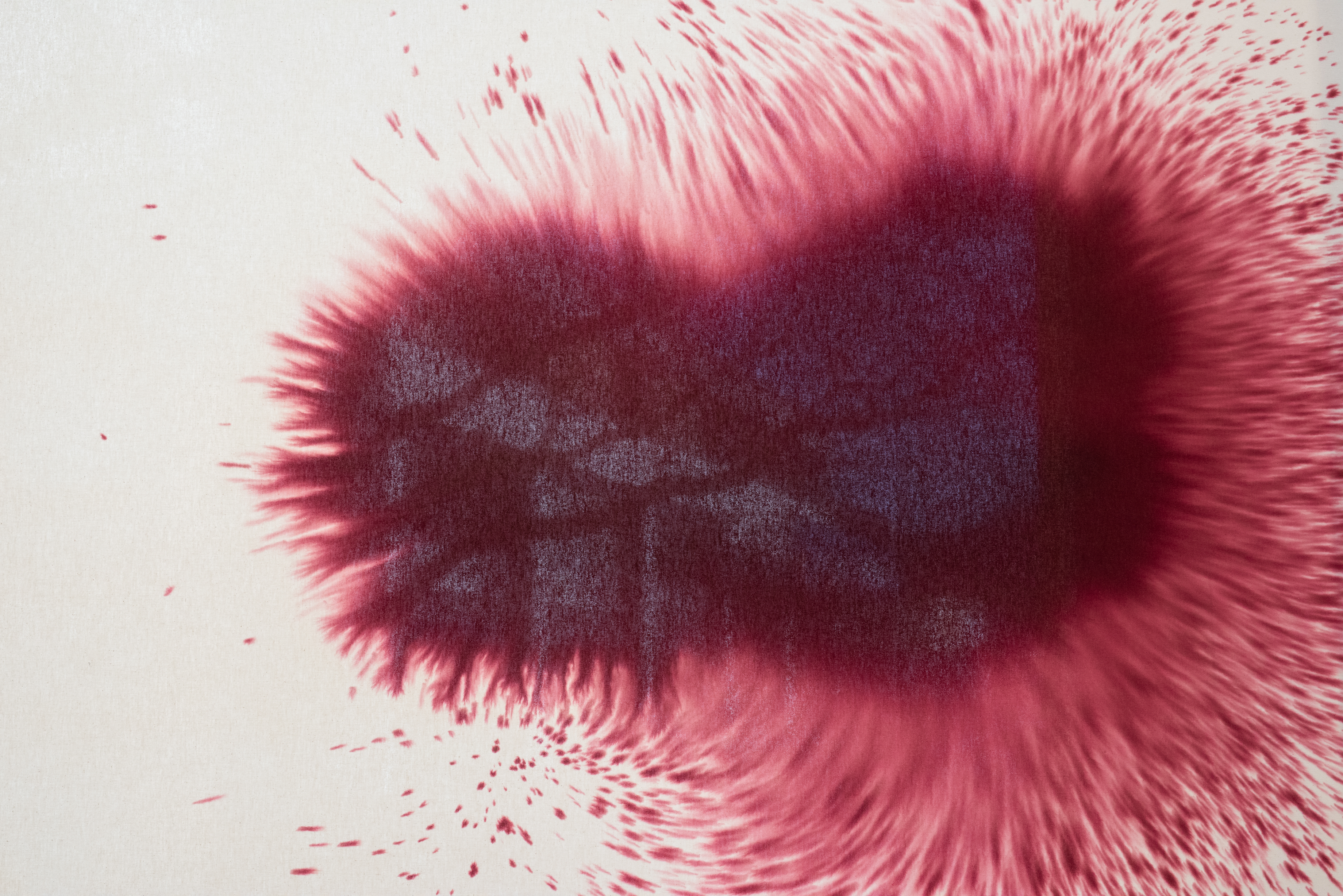
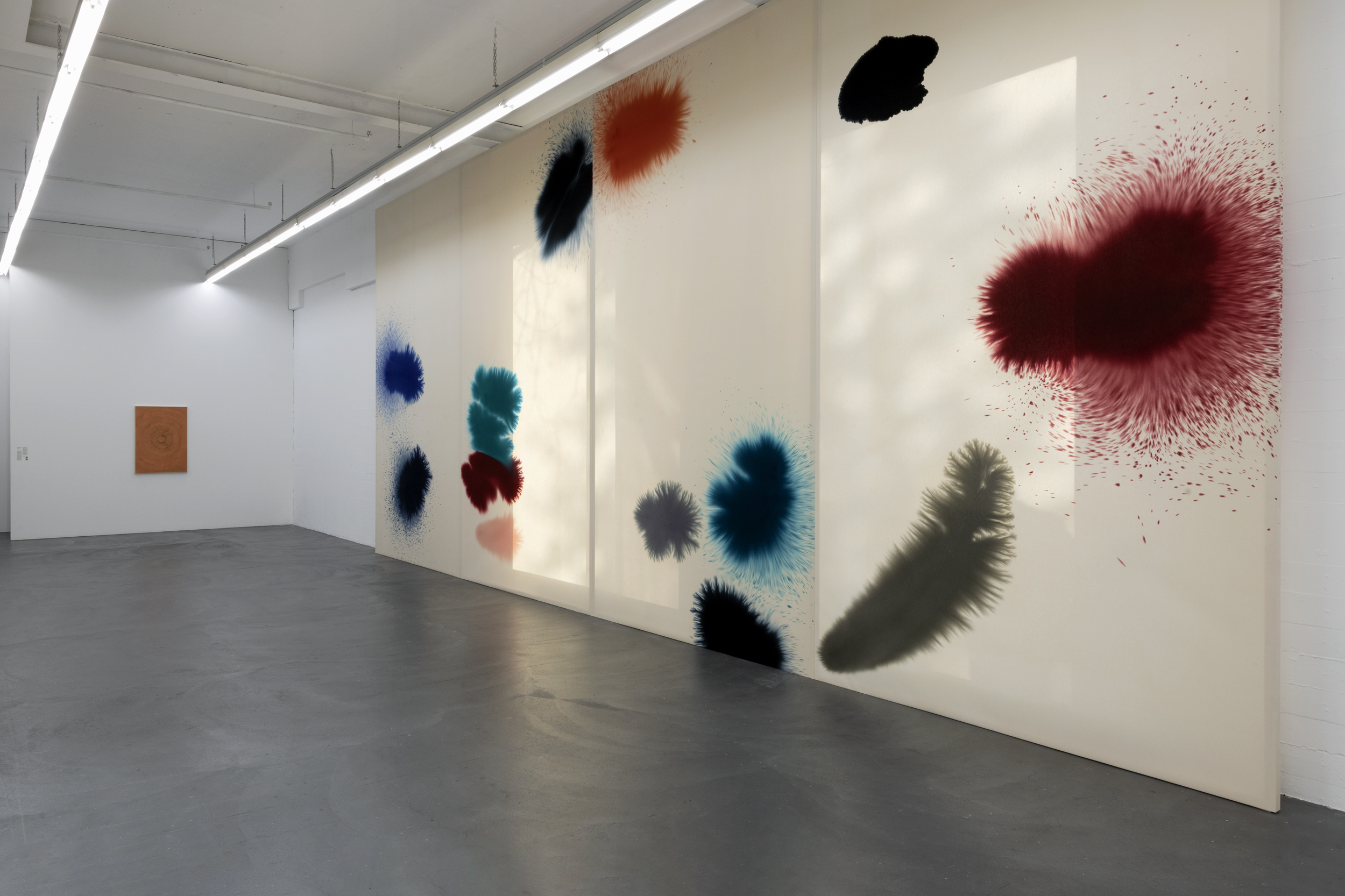
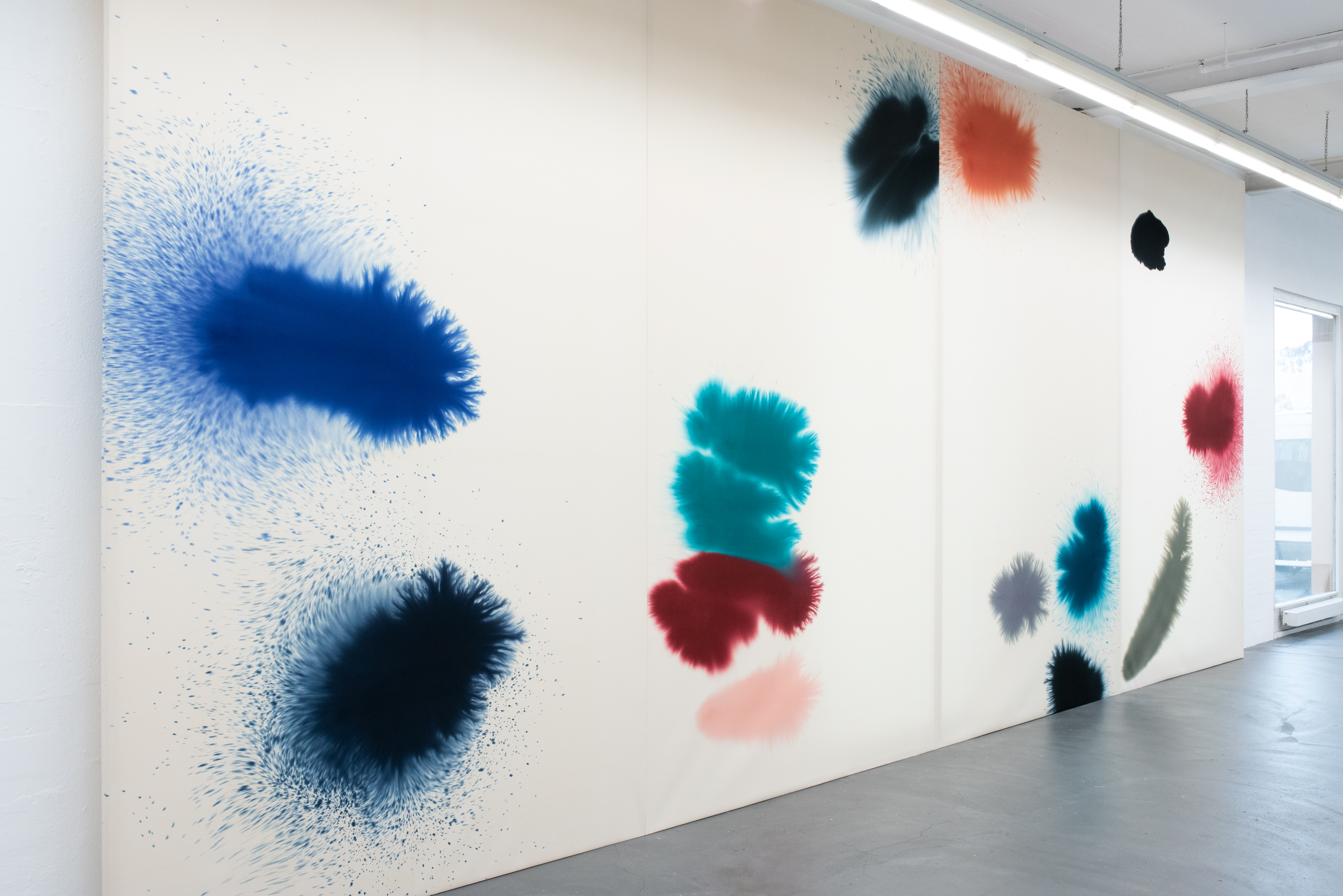
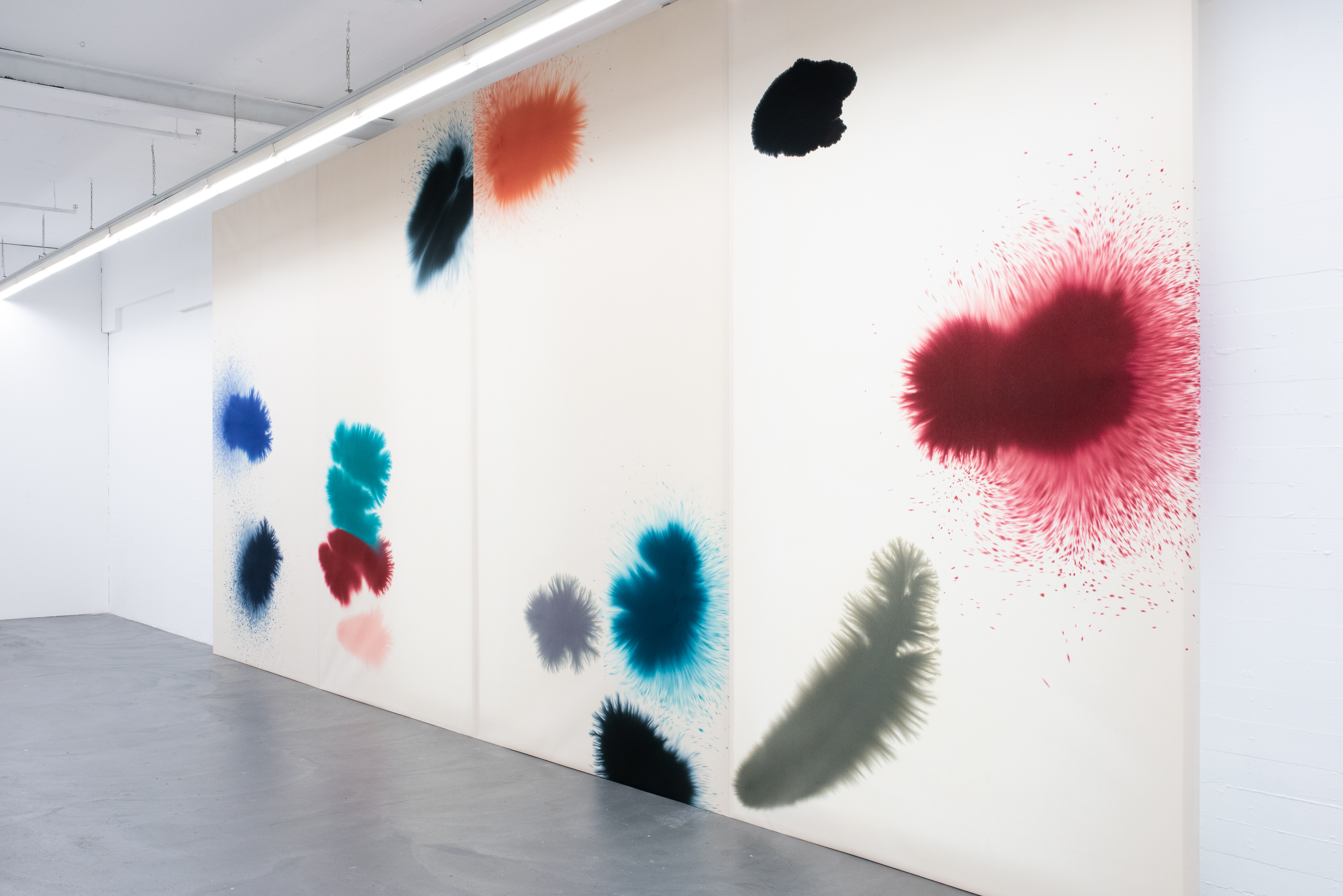
Die Bildsprache von Giacomo Santiago Rogado ist frei von raumzeitlichen Koordinaten und erkennbaren Objekten. Seine Werke, meist installativ realisierte Gemälde, zeigen evokative Formen, die als Partikel, Flüssigkeiten, elementare Lebensformen oder Planeten, Sterne oder Galaxien erscheinen. Es entsteht ein Gefühl von Widersprüchlichkeit und Transparenz, von Durchdringung und Überschneidung, von Konsonanz und Resonanz.
«Das Überflüssige weglassen, um das Wesentliche zu finden» – das ist das poetische Credo, das Rogado uns vor Augen führt. Analog dazu tut Rogado beim Malen nichts anderes als «einfach nur malen». Es gibt keine Vorüberlegungen, kein Projekt und kein vorgefertigtes Wissen, die Praxis wird mit Ausgeglichenheit und Ausdauer als eine paradoxerweise blinde Übung des Malens ausgeführt. In seinem Werk Room for Intuitionüberträgt er den Akt des Malens in Teilen auf dieMaterialien seiner Arbeiten. Es handelt sich um eigenständige Arbeiten, in denen sich seine selbst entwickelten Techniken vermischen und neuartige
«Das Überflüssige weglassen, um das Wesentliche zu finden» – das ist das poetische Credo, das Rogado uns vor Augen führt. Analog dazu tut Rogado beim Malen nichts anderes als «einfach nur malen». Es gibt keine Vorüberlegungen, kein Projekt und kein vorgefertigtes Wissen, die Praxis wird mit Ausgeglichenheit und Ausdauer als eine paradoxerweise blinde Übung des Malens ausgeführt. In seinem Werk Room for Intuitionüberträgt er den Akt des Malens in Teilen auf dieMaterialien seiner Arbeiten. Es handelt sich um eigenständige Arbeiten, in denen sich seine selbst entwickelten Techniken vermischen und neuartige
Malereikombinationen generieren. Die mit Farbbädern in einem Zusammenspiel von Zufall und Komposition geschaffenen Werke beeindrucken durch ihre unmittelbare Wirkung. Die Baumwolltücher saugen in einem langsamen Trocknungsprozess die Farben auf, die der Künstler in Behälter hineintröpfelt. Die Tropfen blühen auf den Stoffen zu prächtigen bunten Formen aus. Das Arbeiten ist ein Dialog zwischen Impulsgeben, Beobachten, Entstehen und Reagieren.
Giacomo Santiago Rogado geht bei seinen Arbeiten äusserst einfühlsam mit Licht und Raum um. Dieses Interesse spiegelt sich nicht nur in seinen Gemälden, sondern auch in deren reflektierten Platzierung. Affektiv, mediativ, kontemplativ – so lässt sich das Betrachten mit dem Werk von Giacomo Rogado beschreiben, und es ist zugleich ein Erfassen des eigenen Seins im Raum.
Meryl Kureekal
Giacomo Santiago Rogado geht bei seinen Arbeiten äusserst einfühlsam mit Licht und Raum um. Dieses Interesse spiegelt sich nicht nur in seinen Gemälden, sondern auch in deren reflektierten Platzierung. Affektiv, mediativ, kontemplativ – so lässt sich das Betrachten mit dem Werk von Giacomo Rogado beschreiben, und es ist zugleich ein Erfassen des eigenen Seins im Raum.
Meryl Kureekal